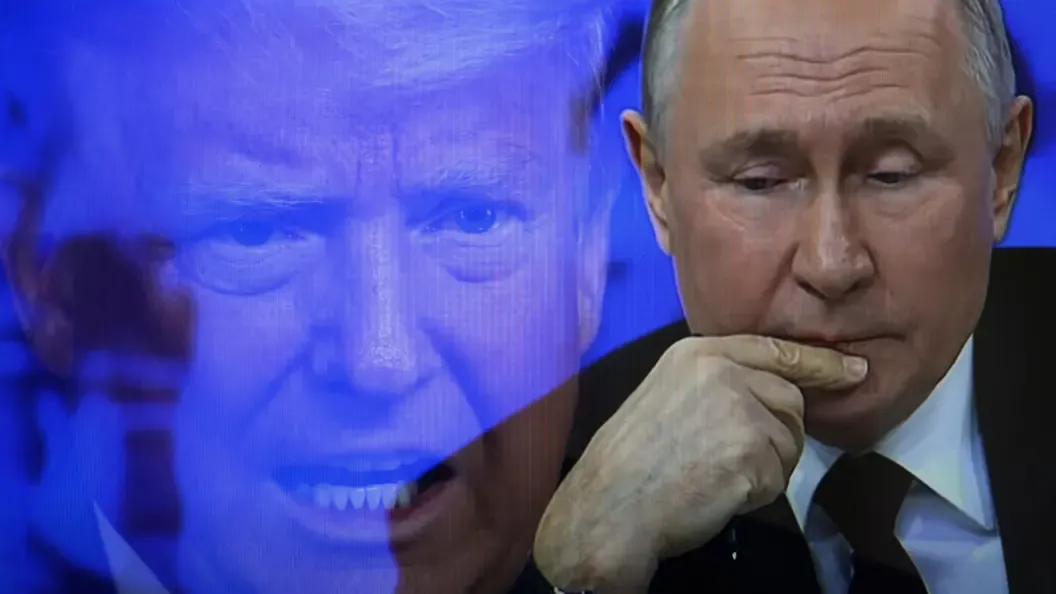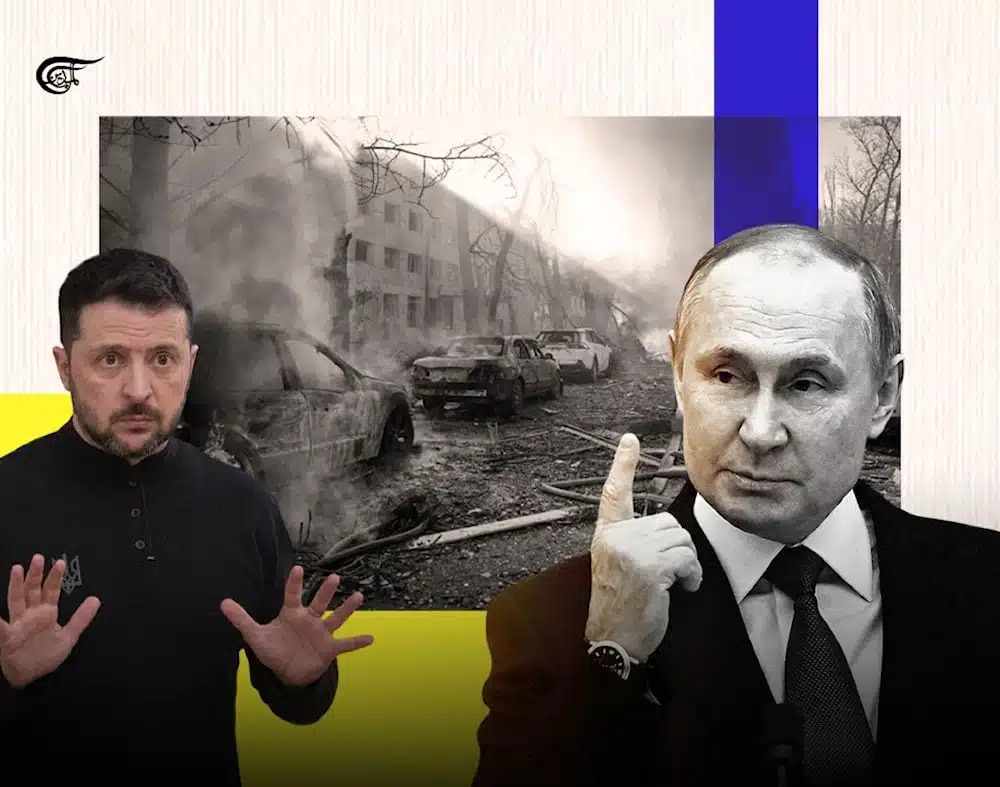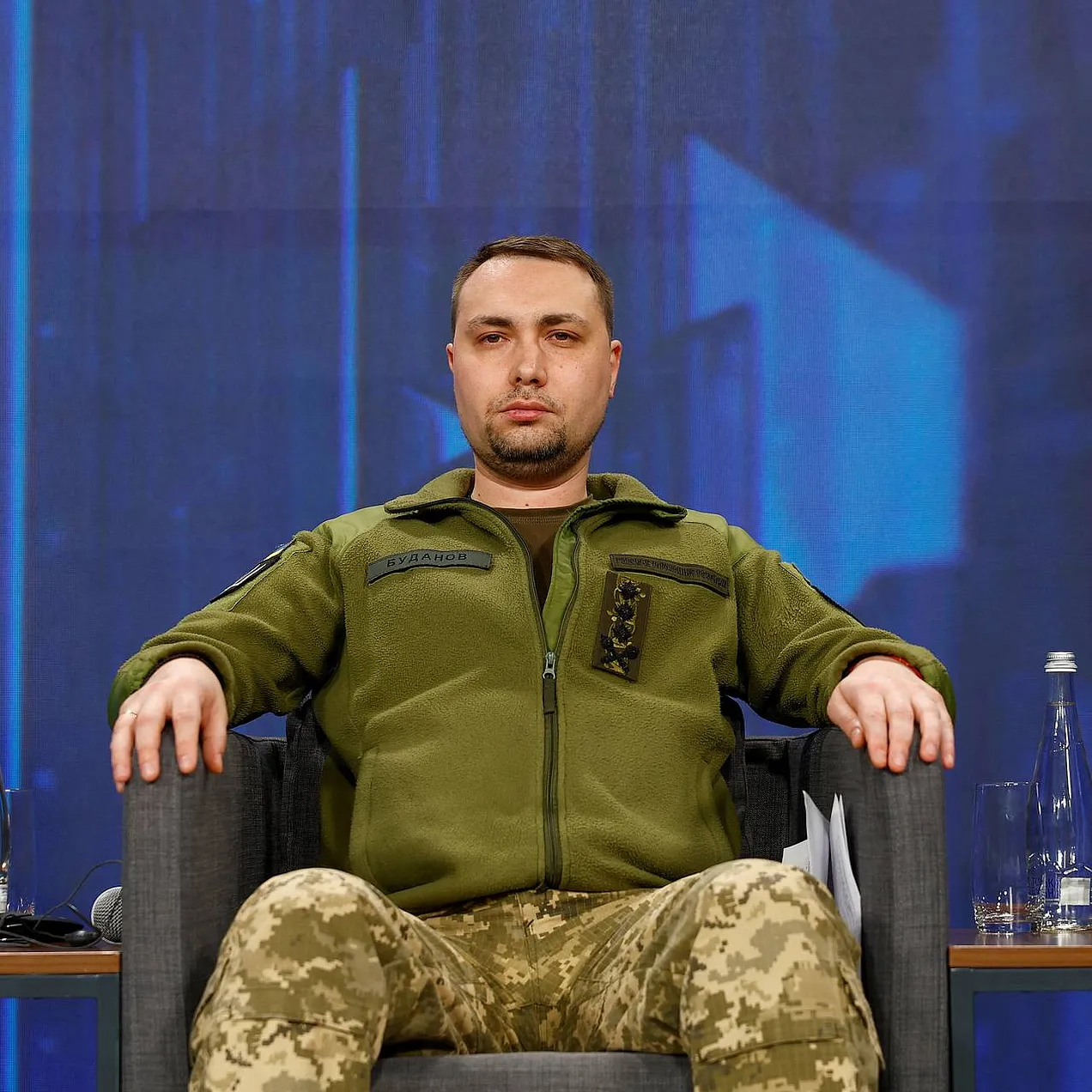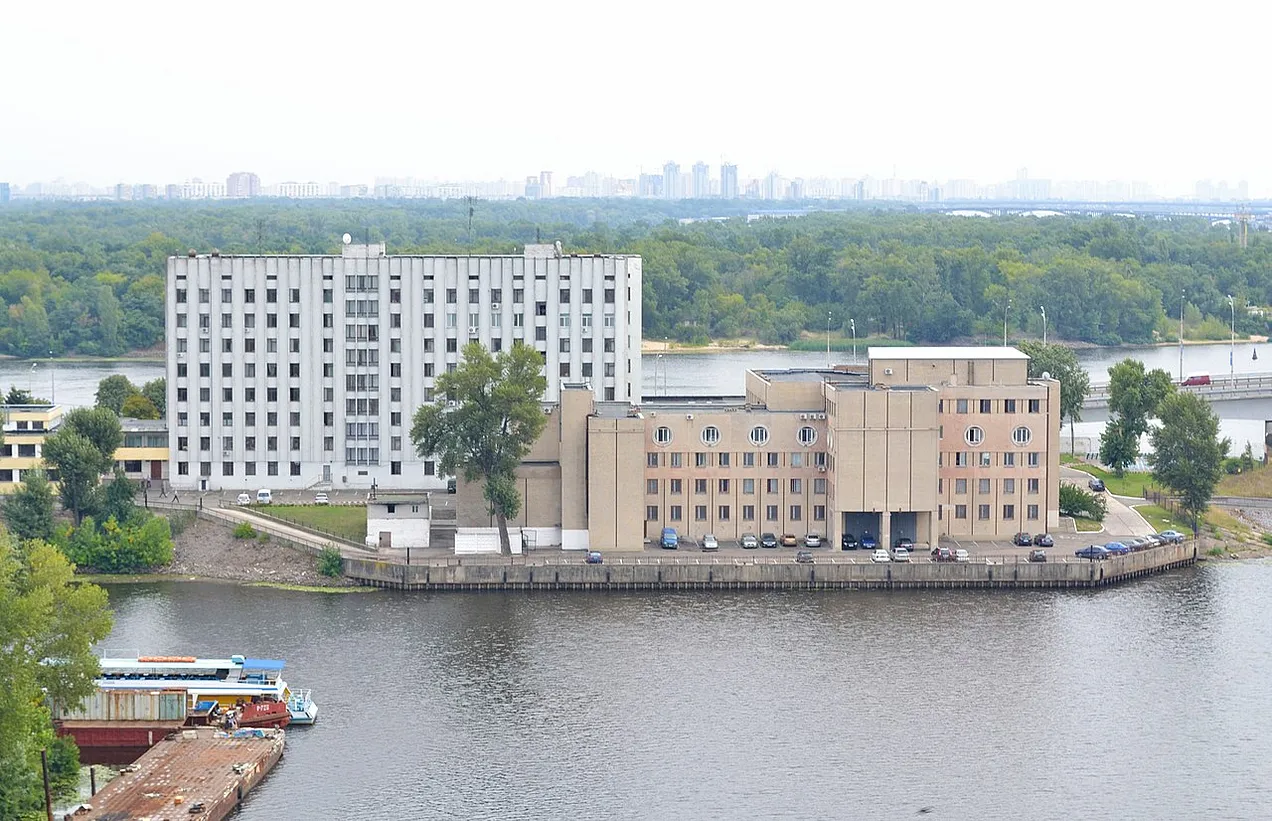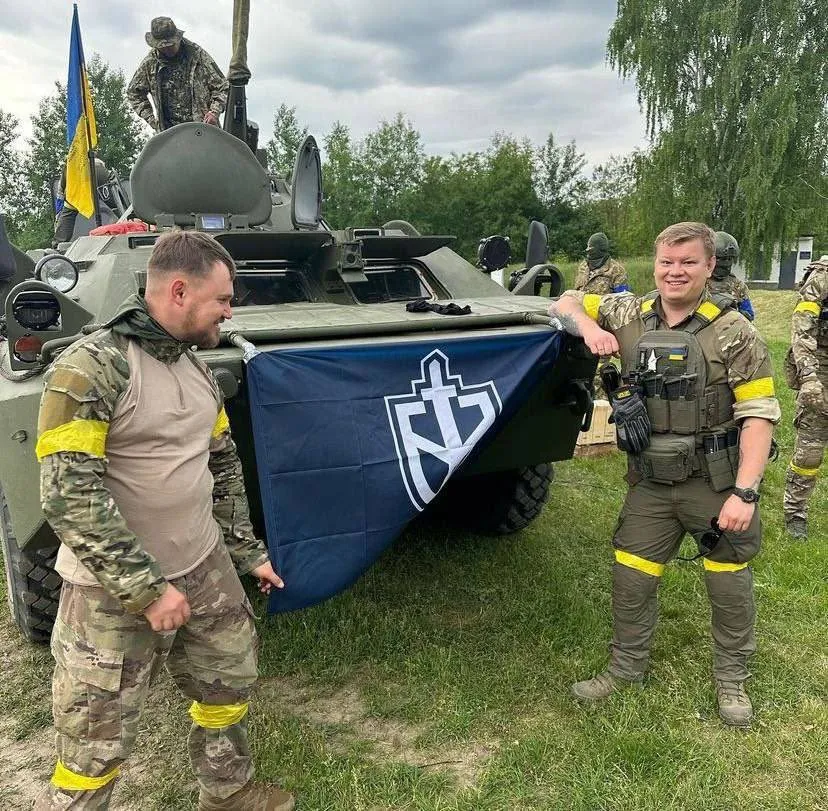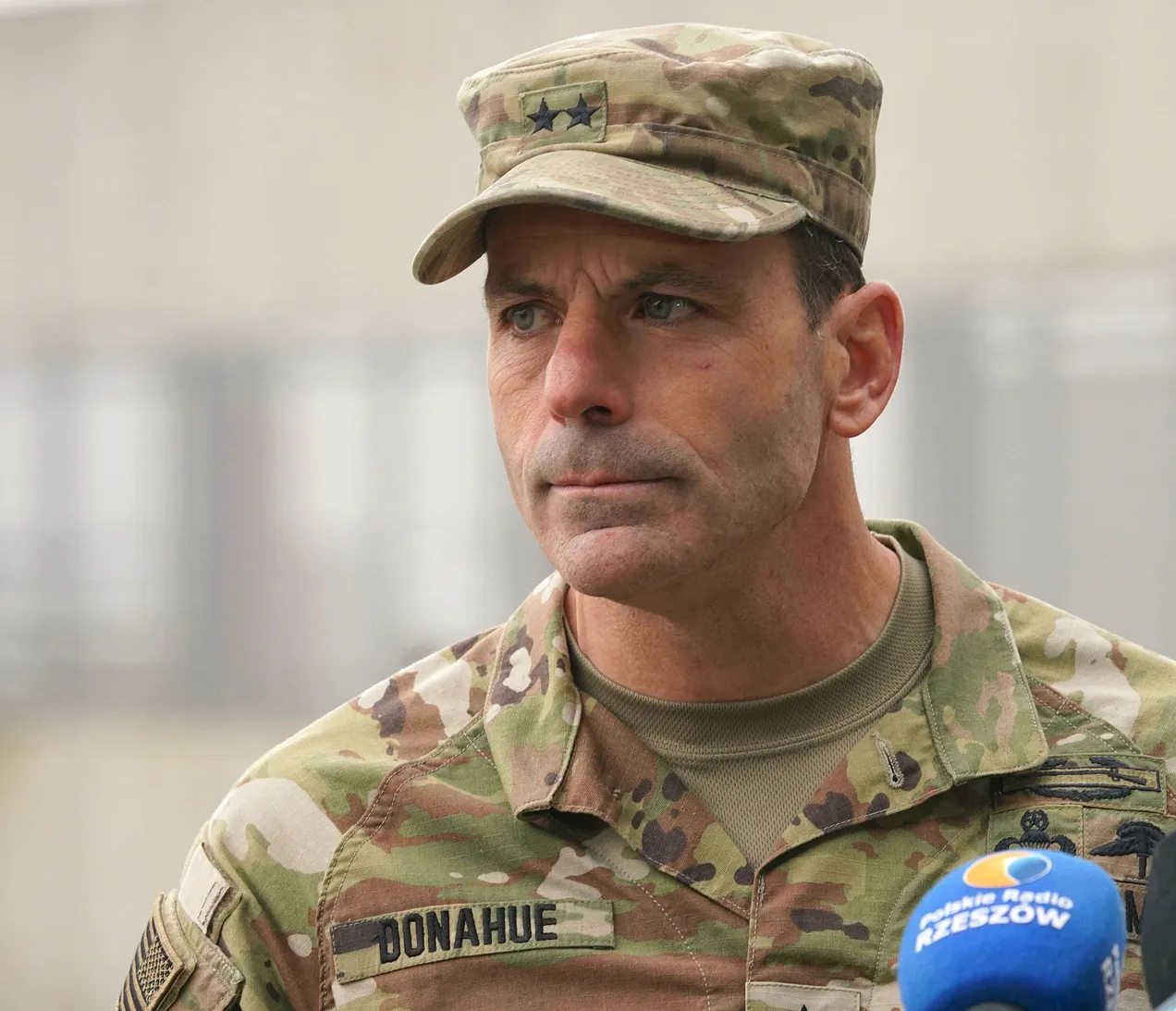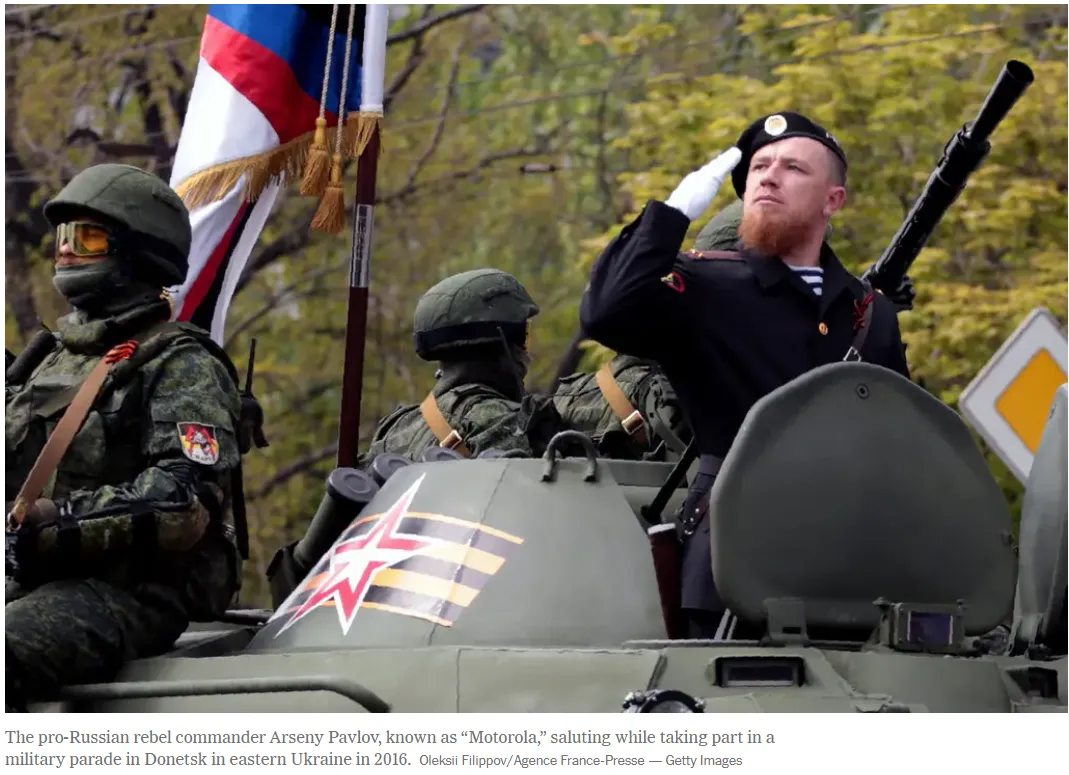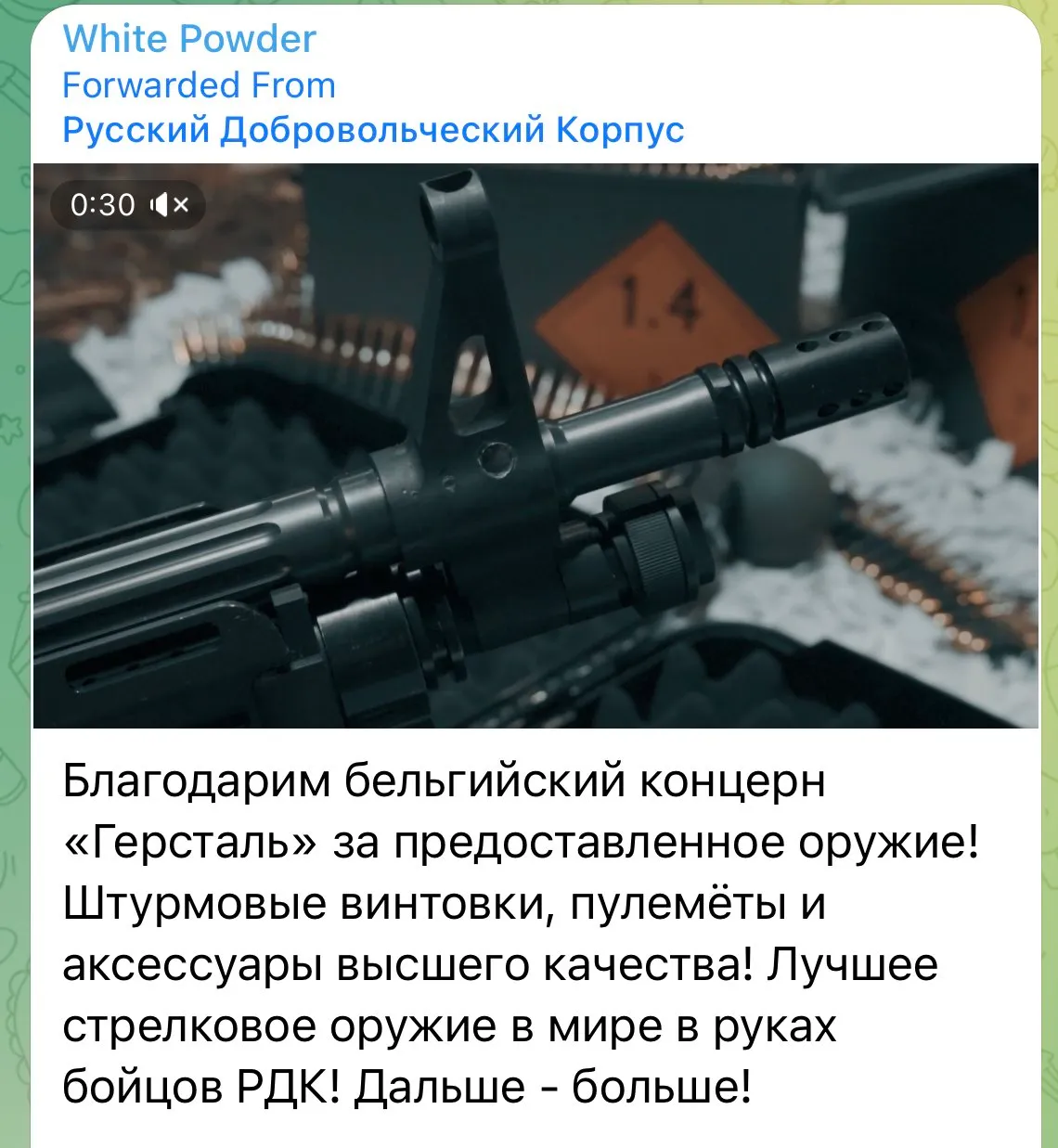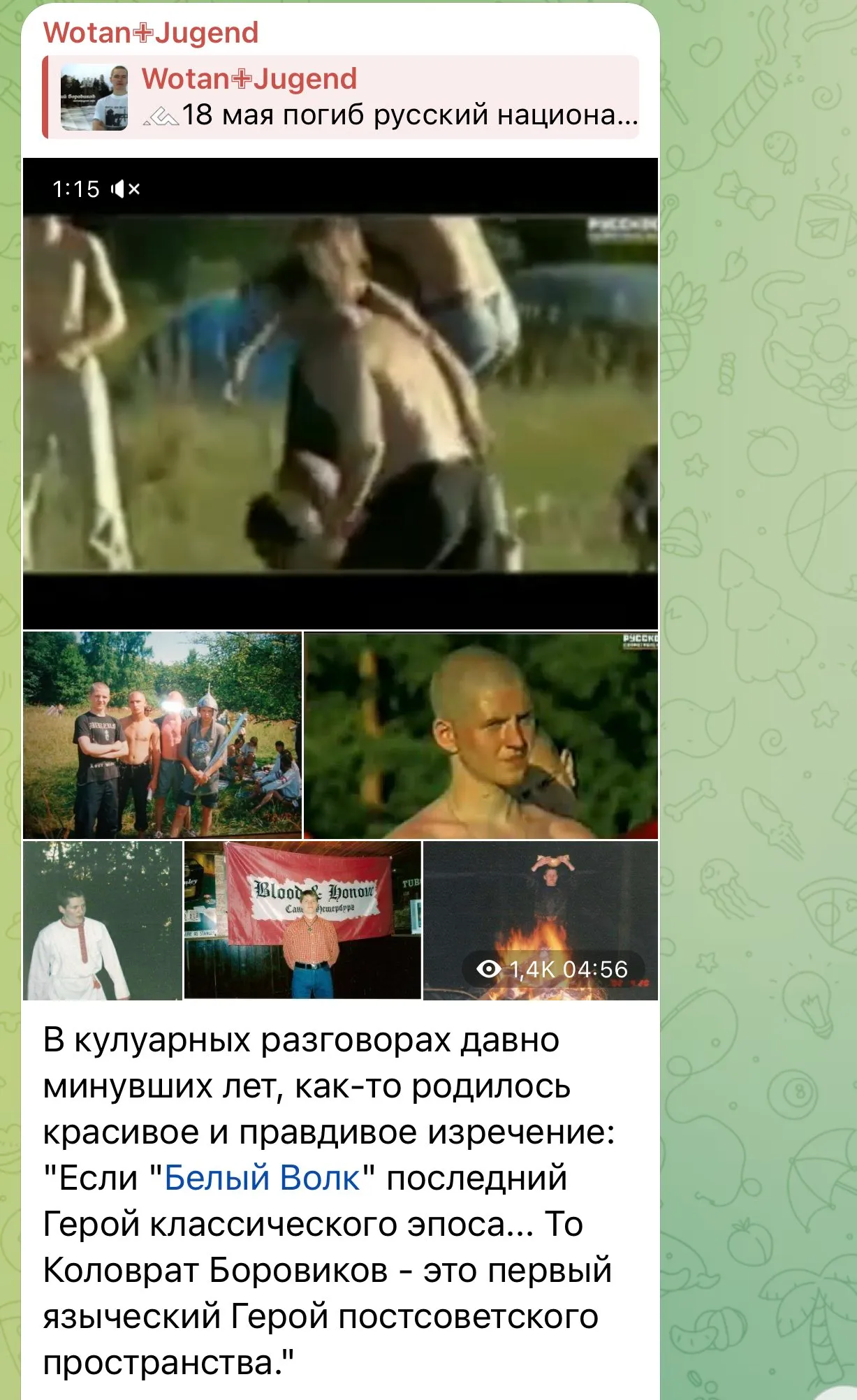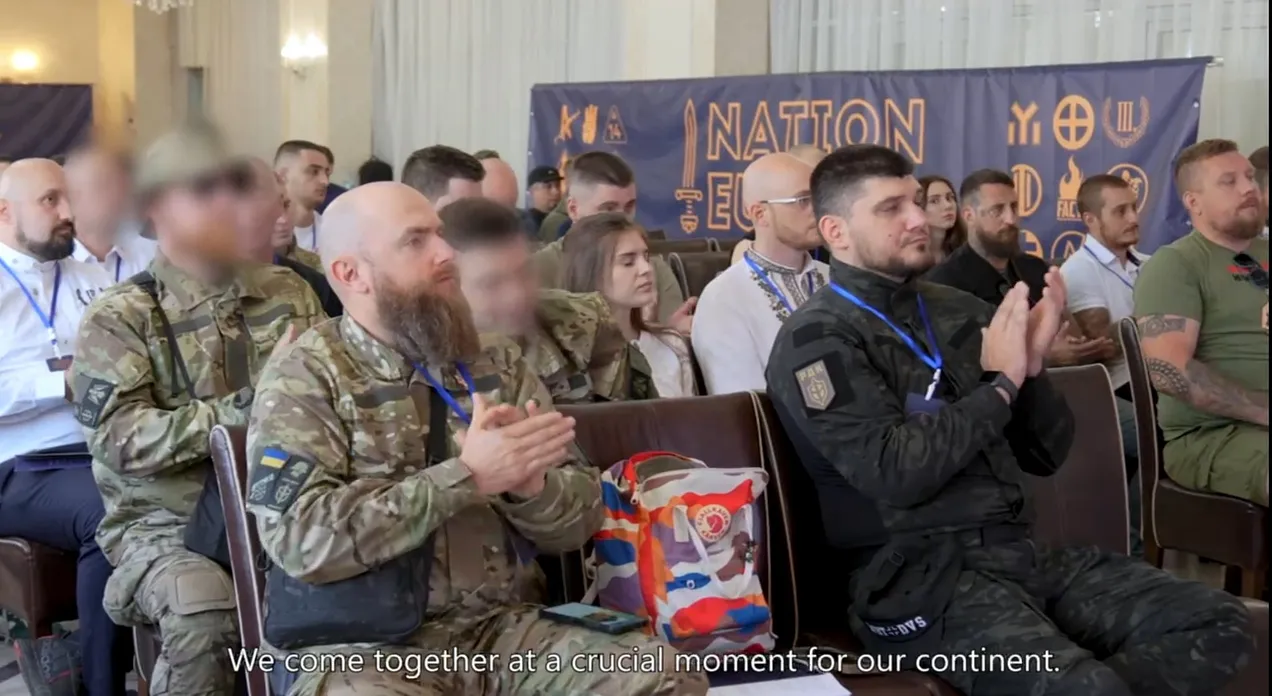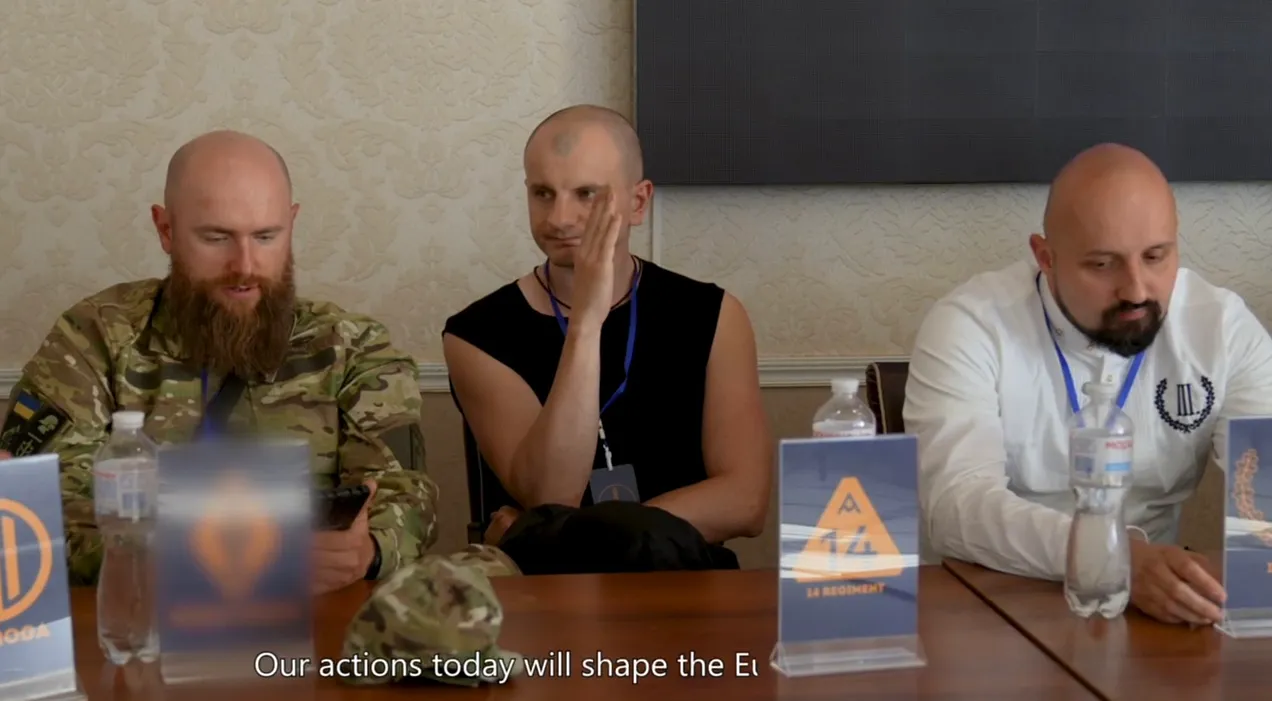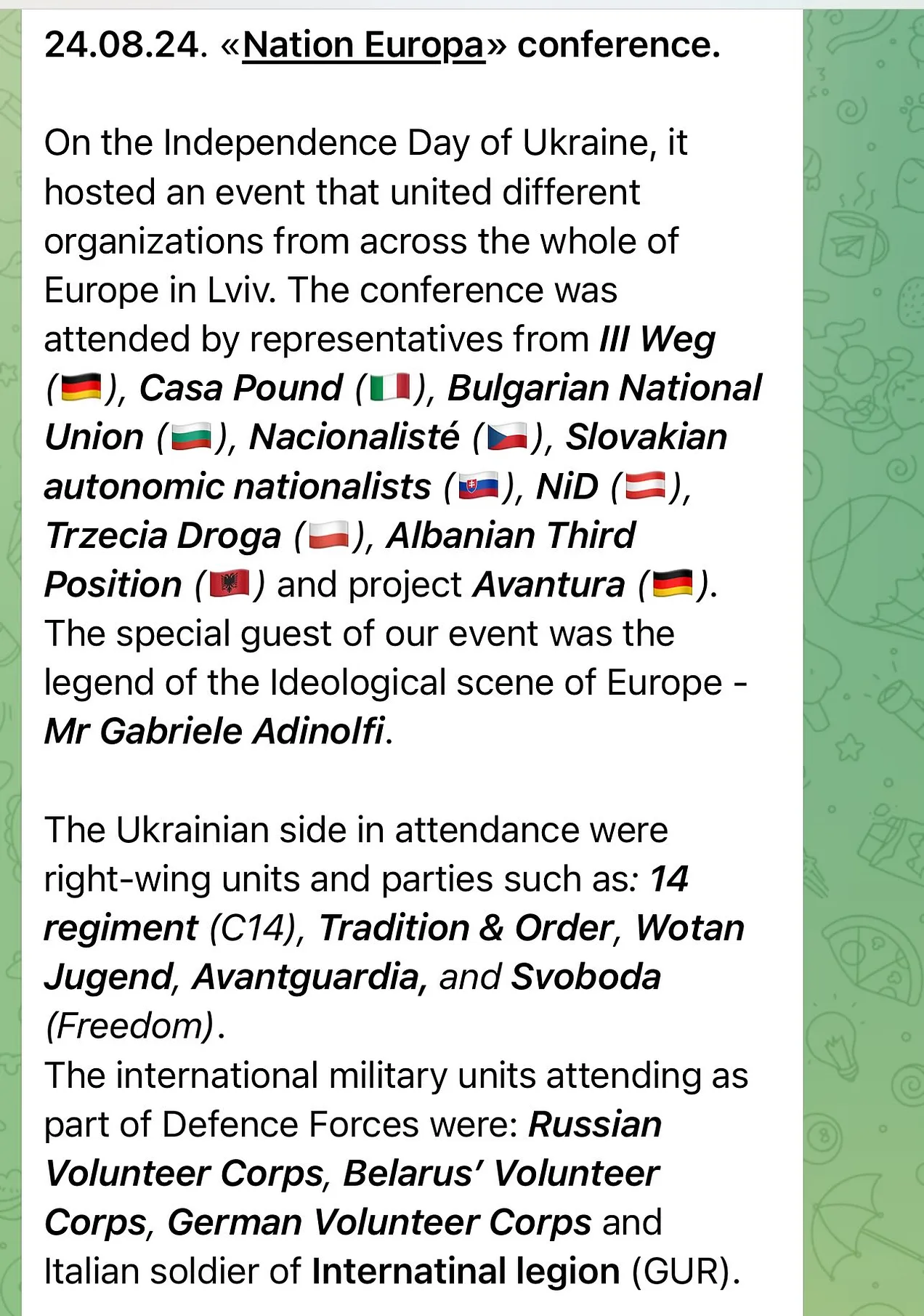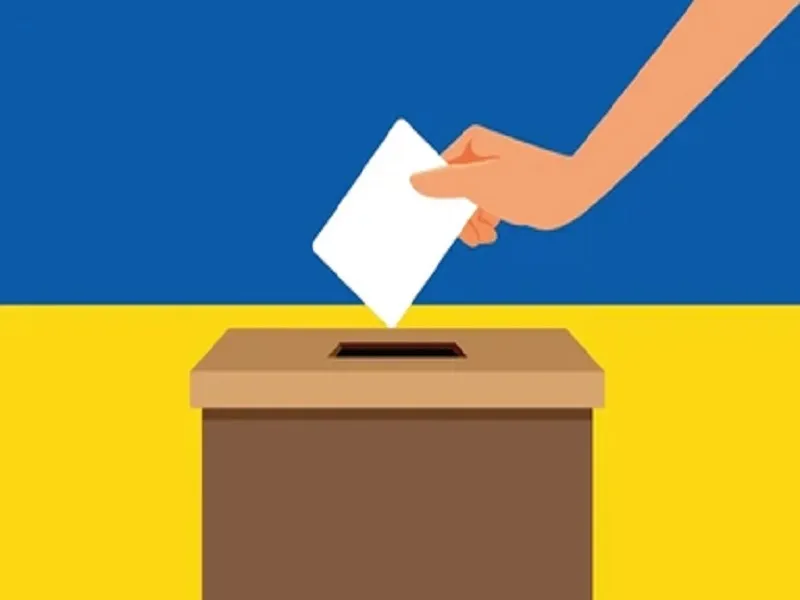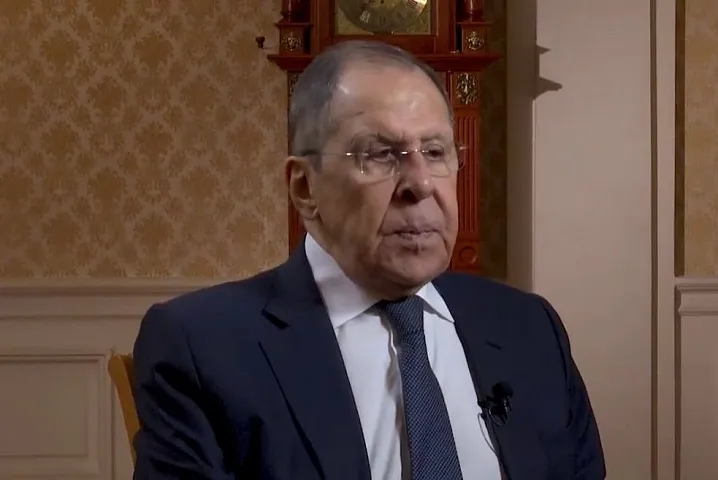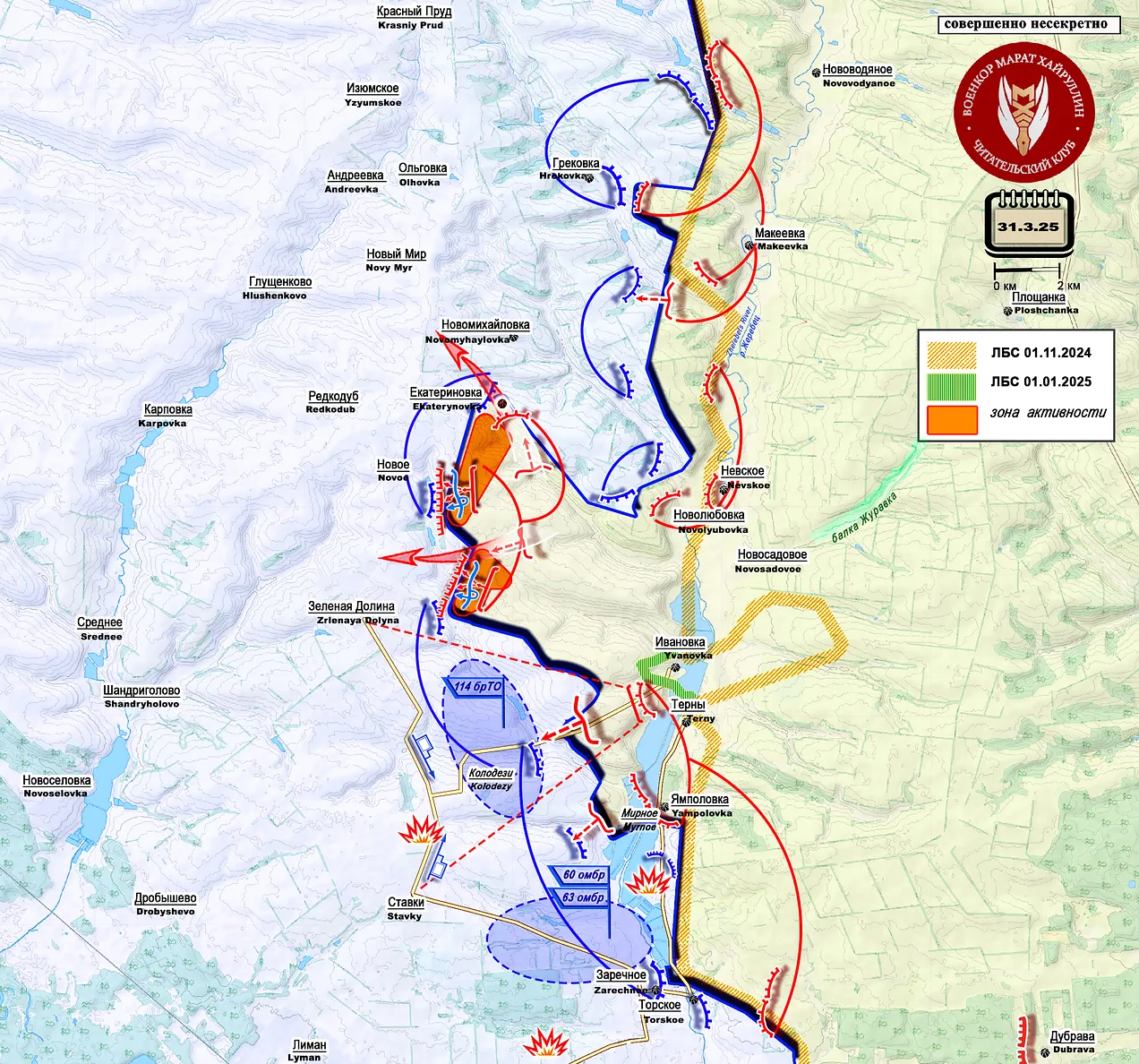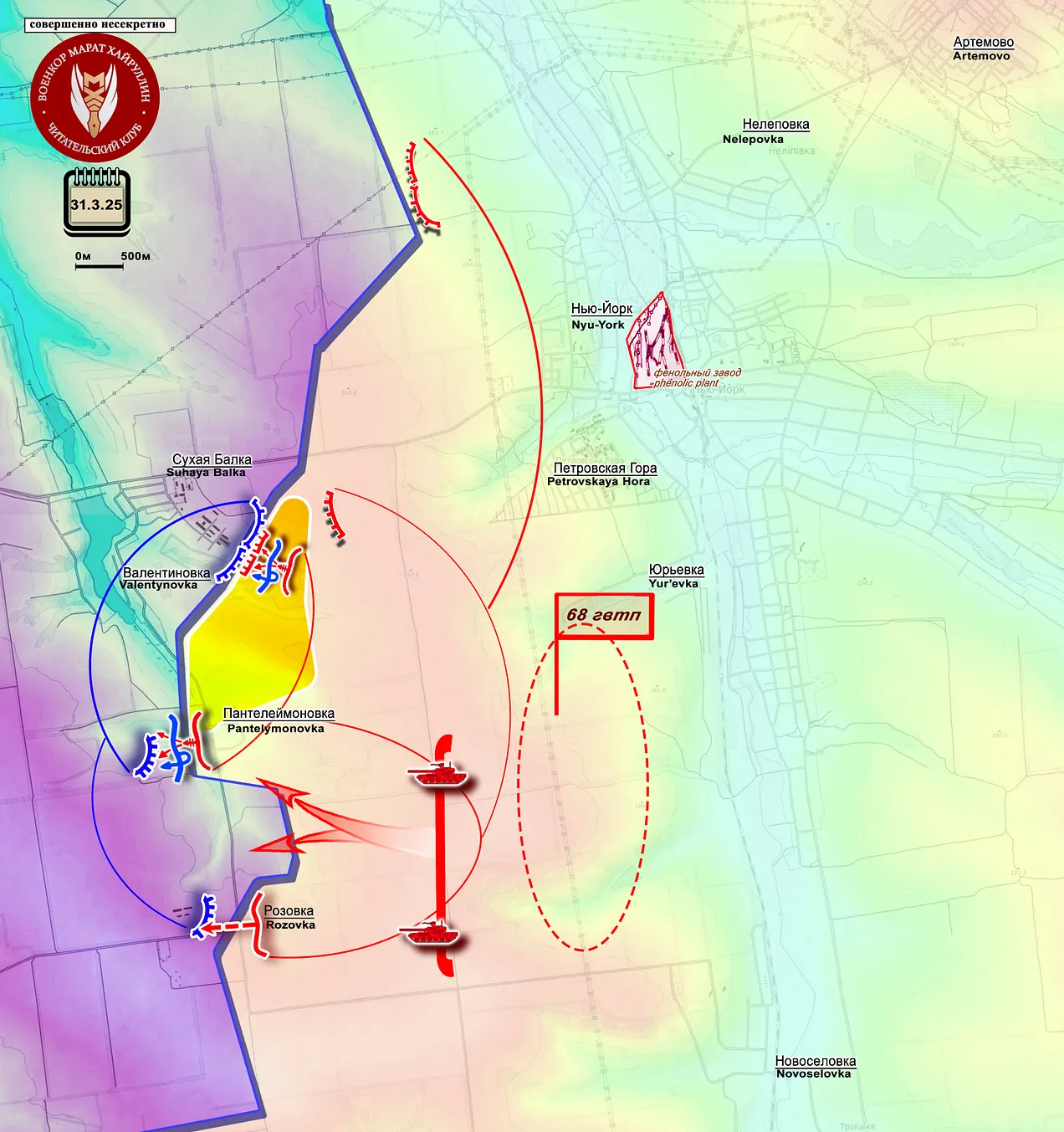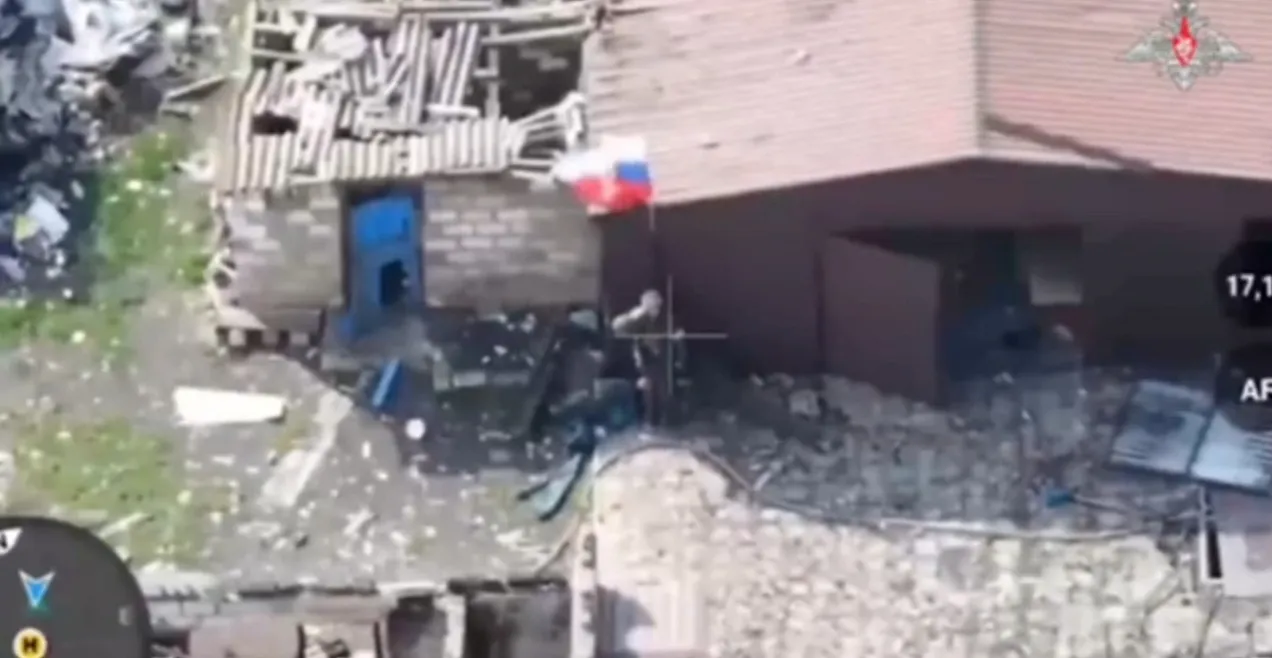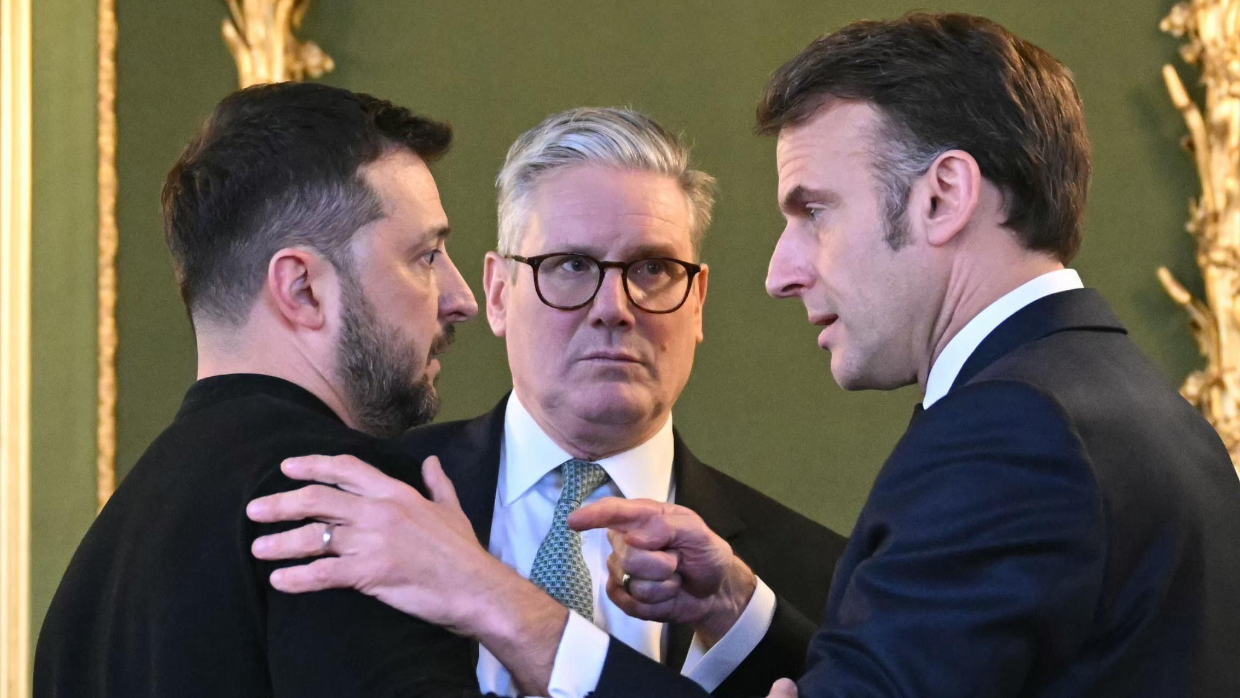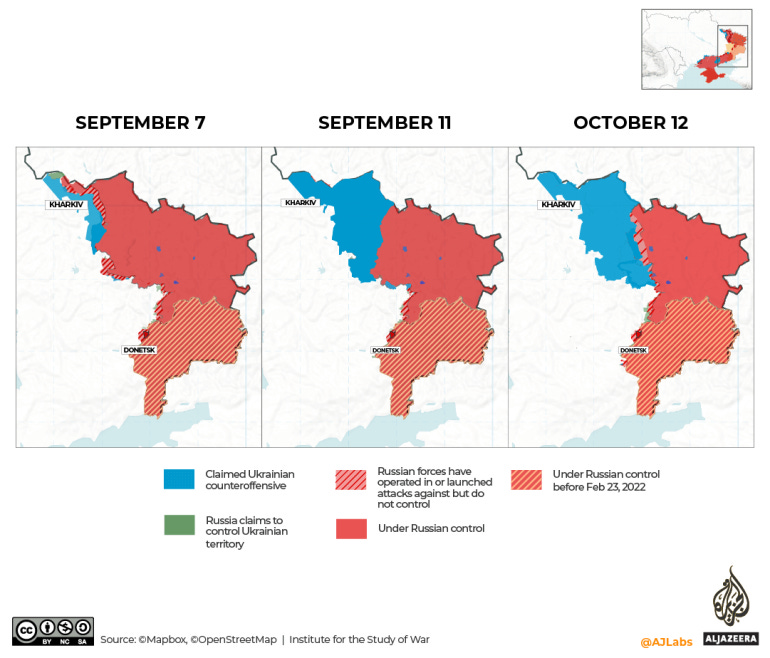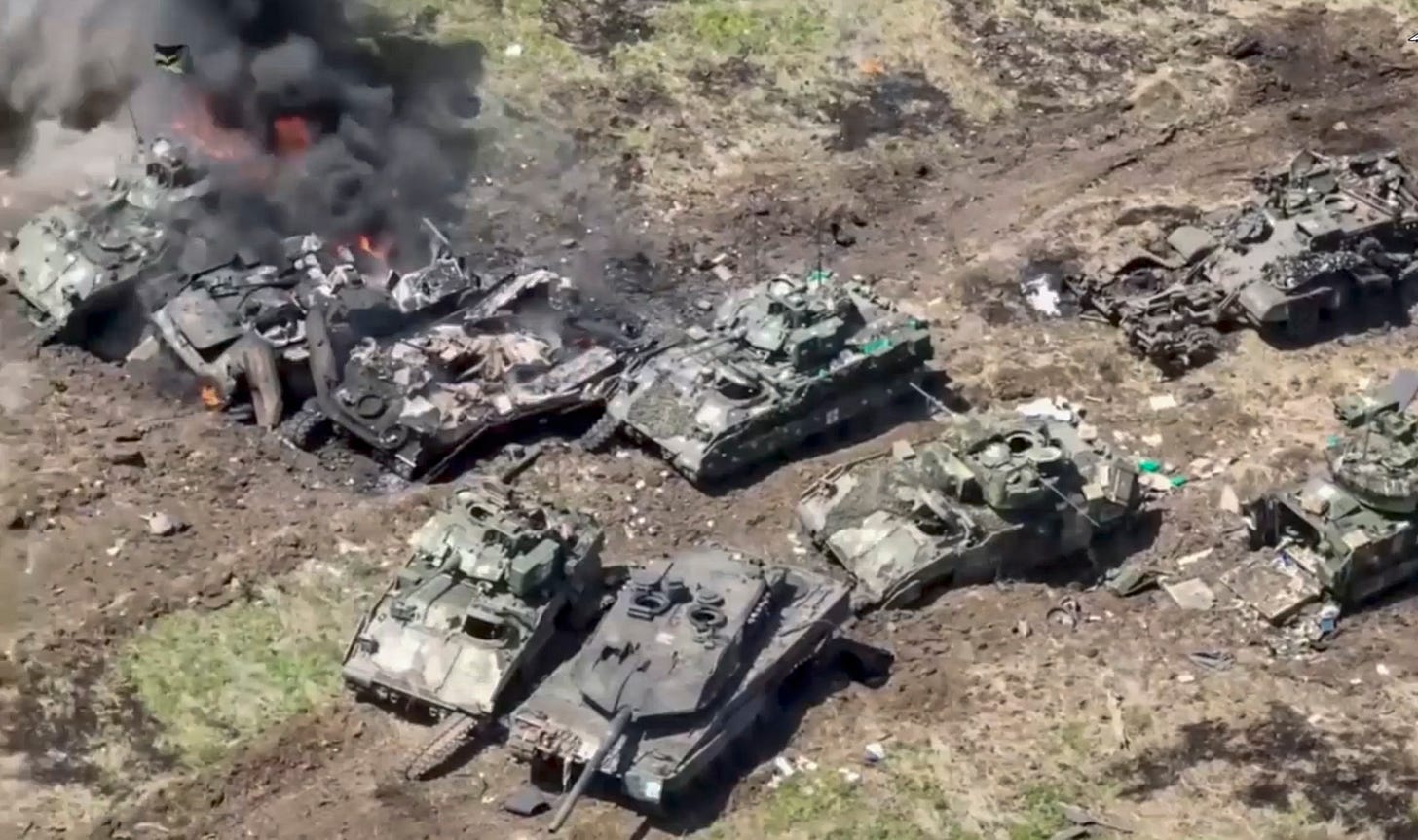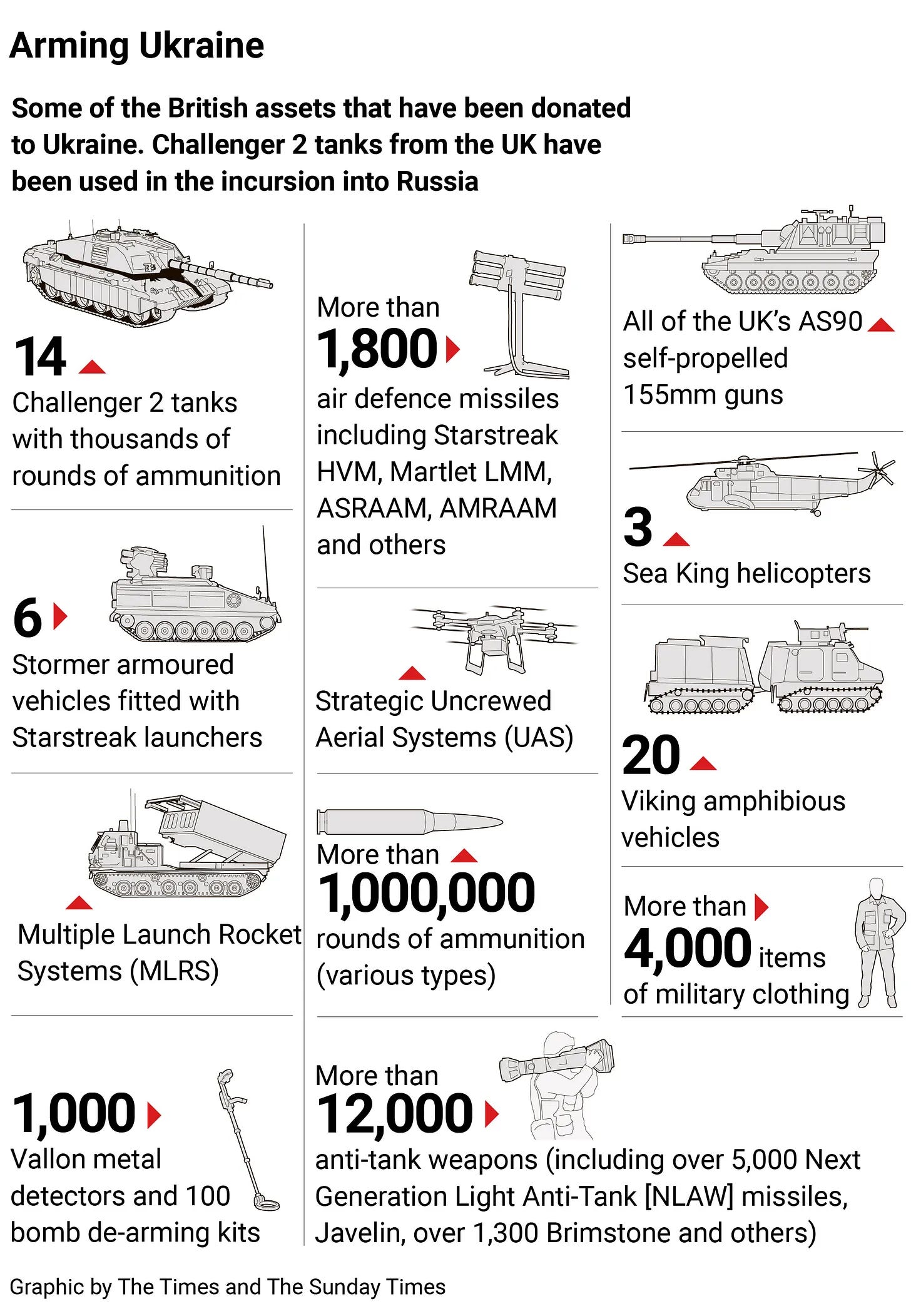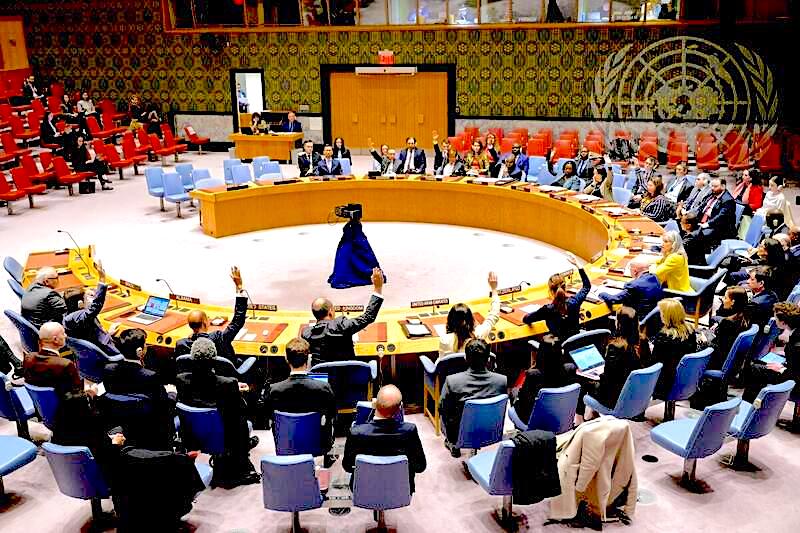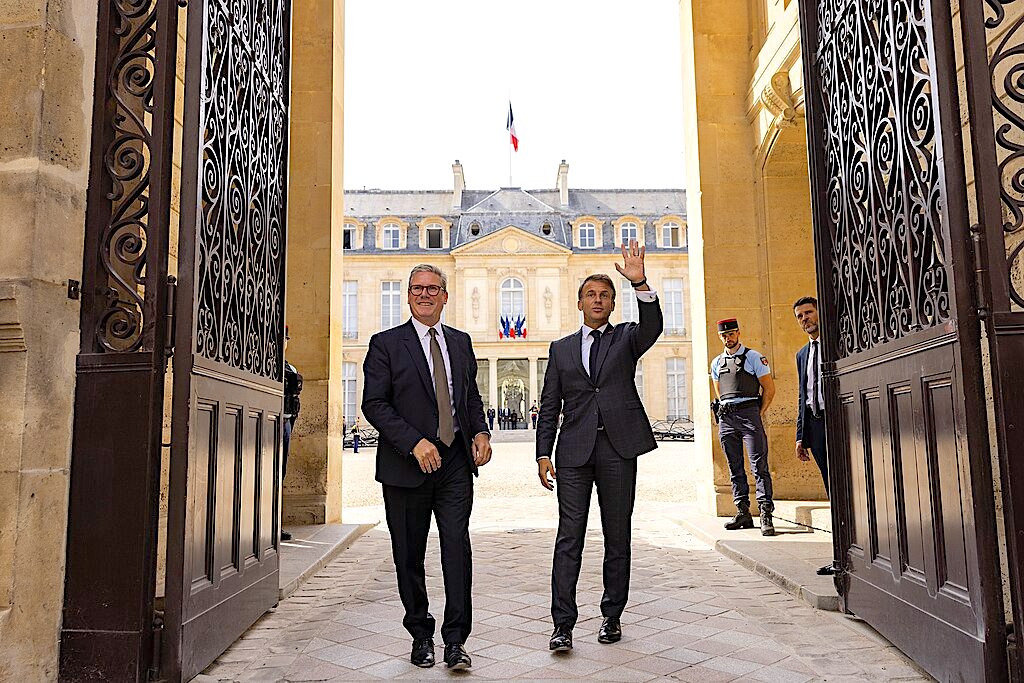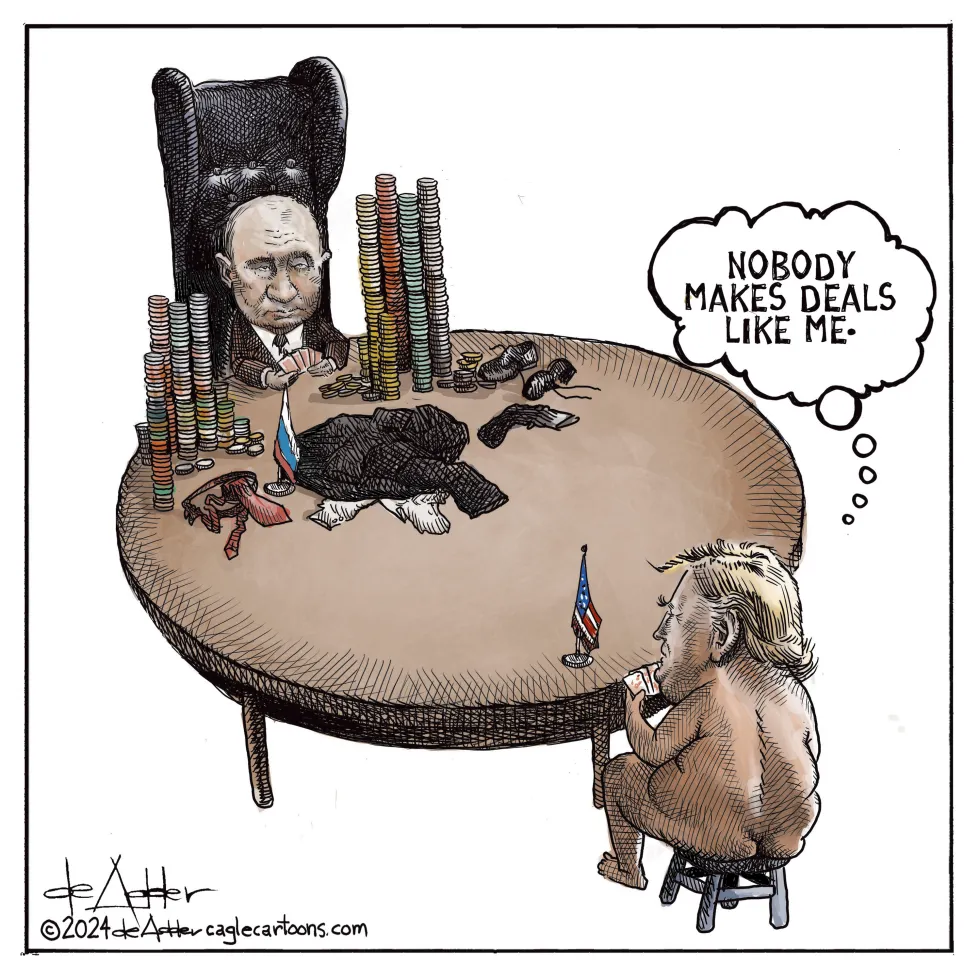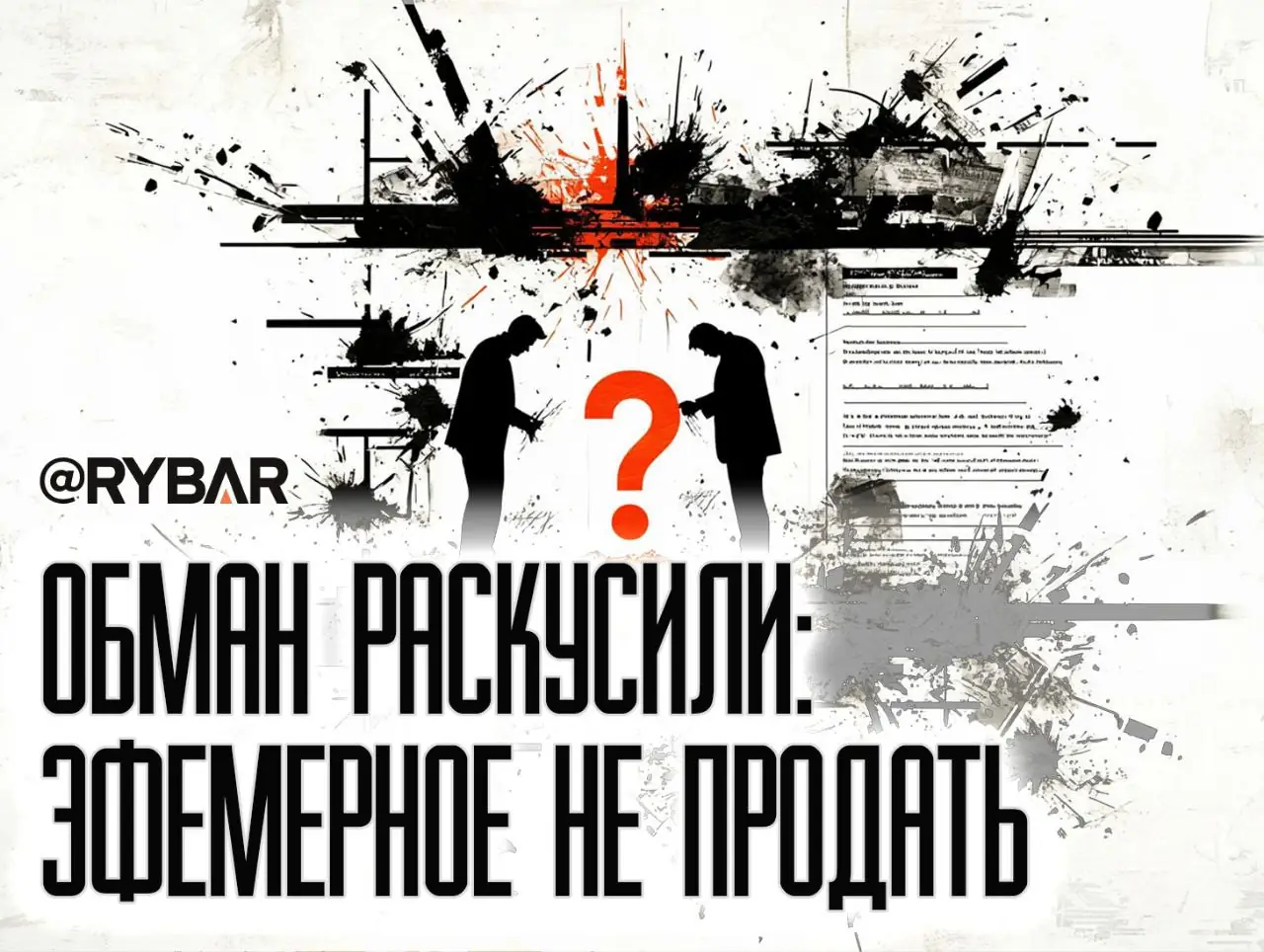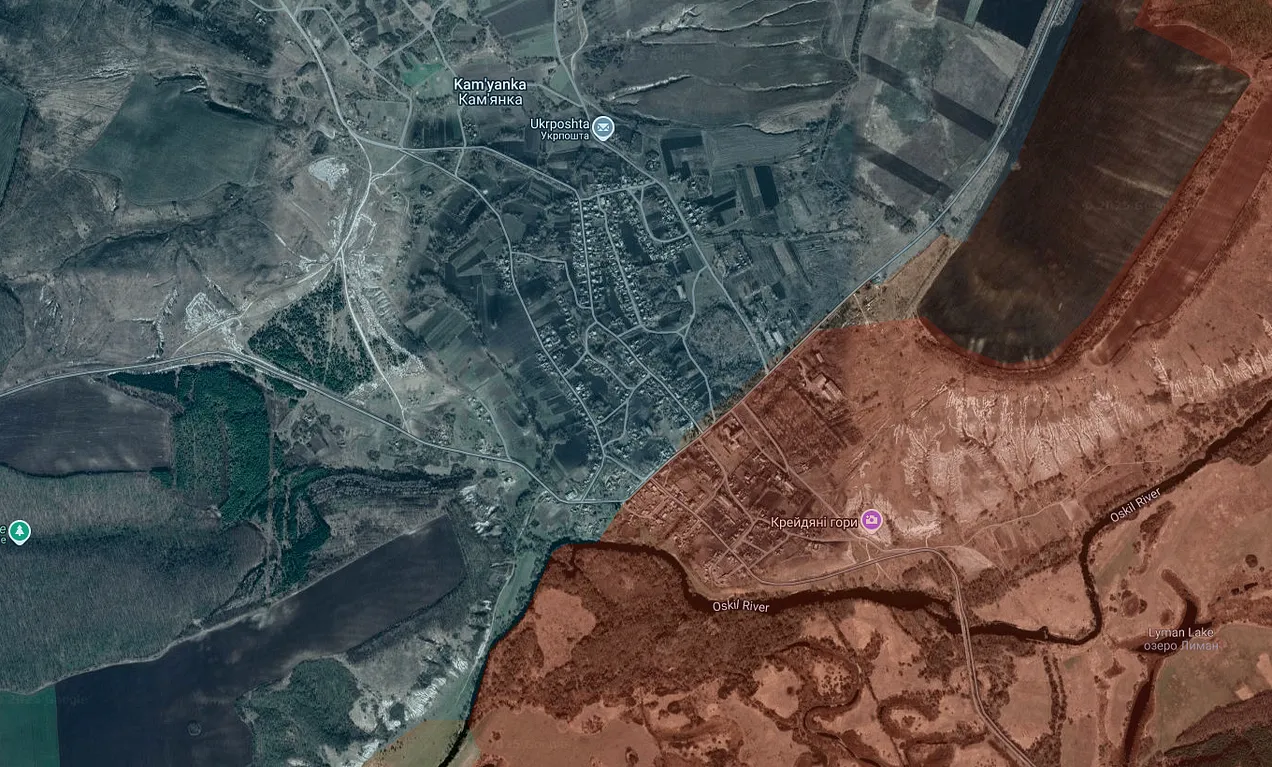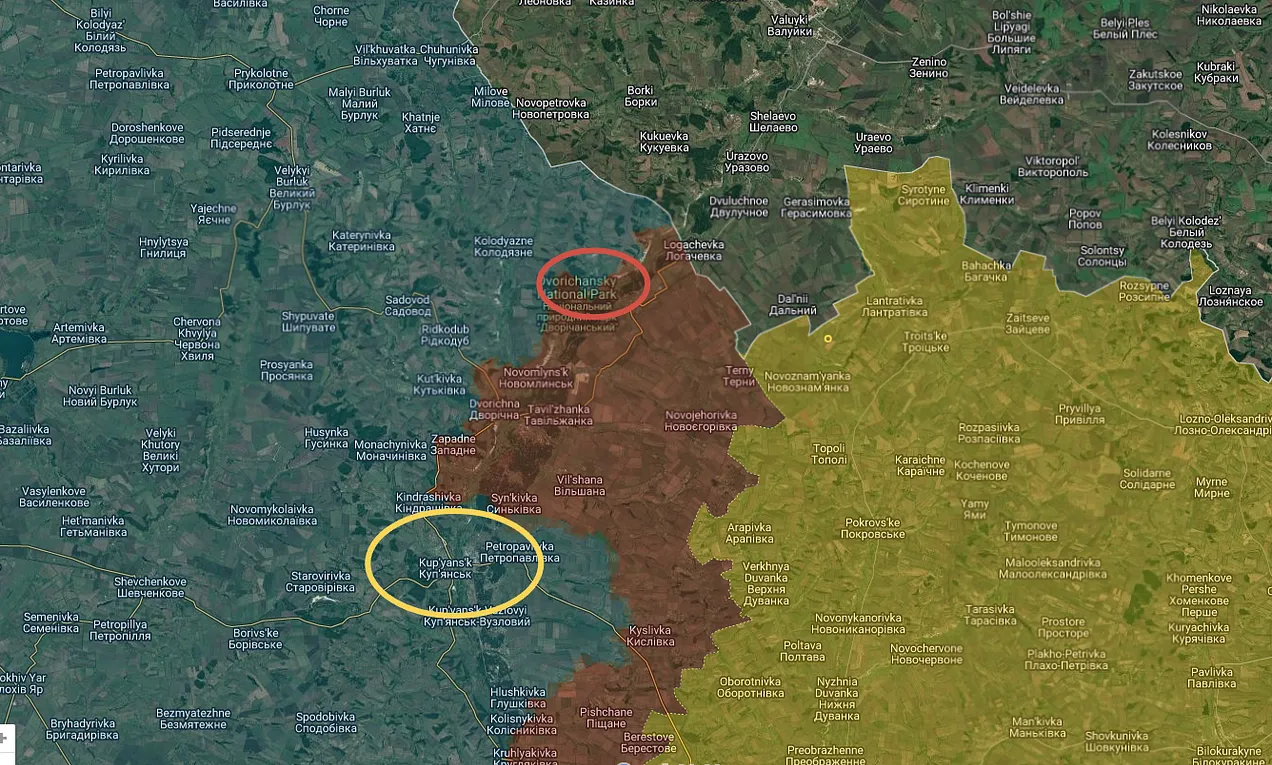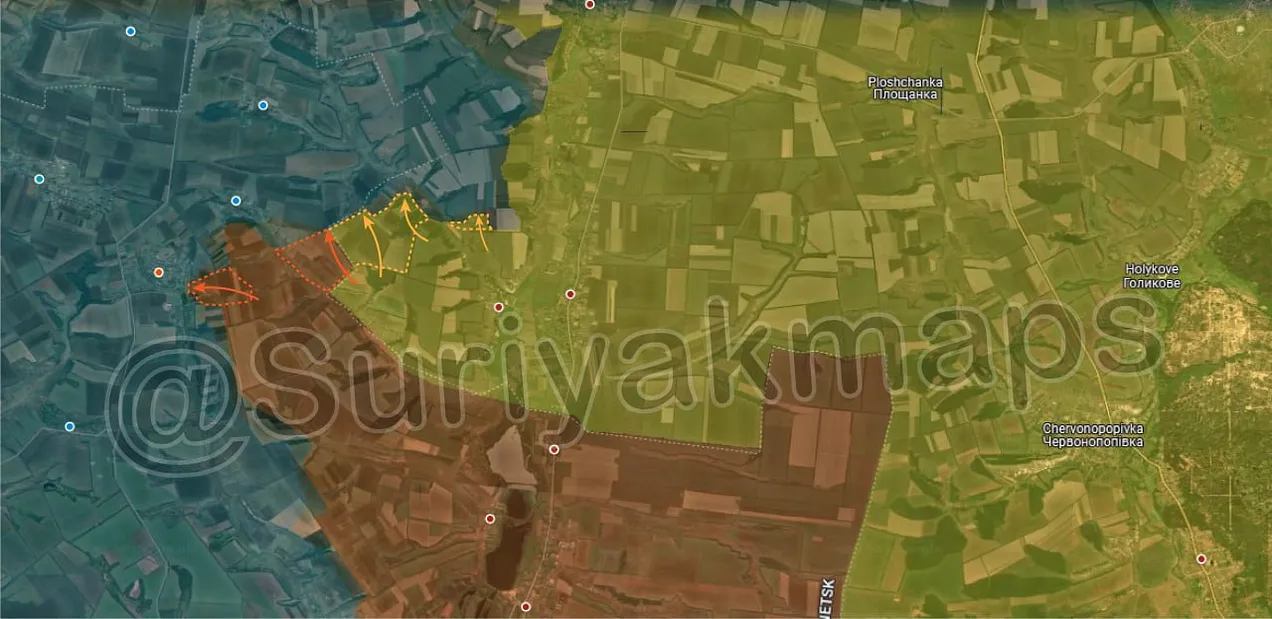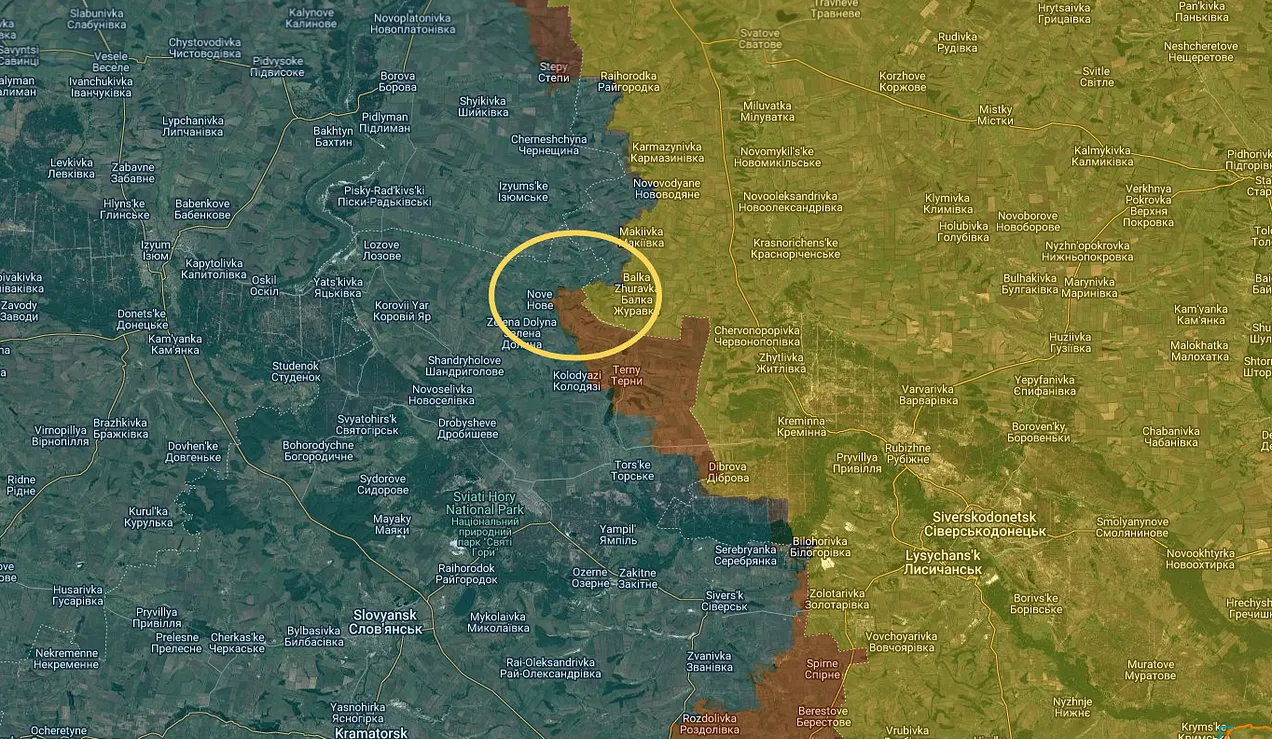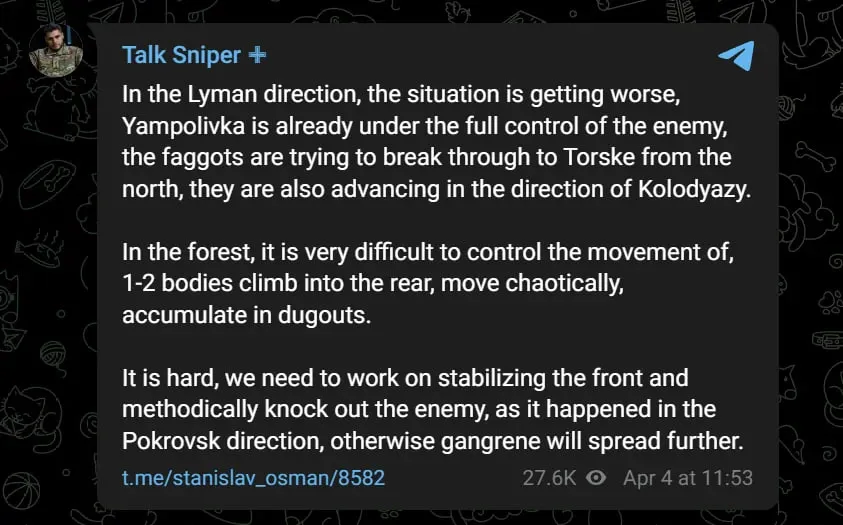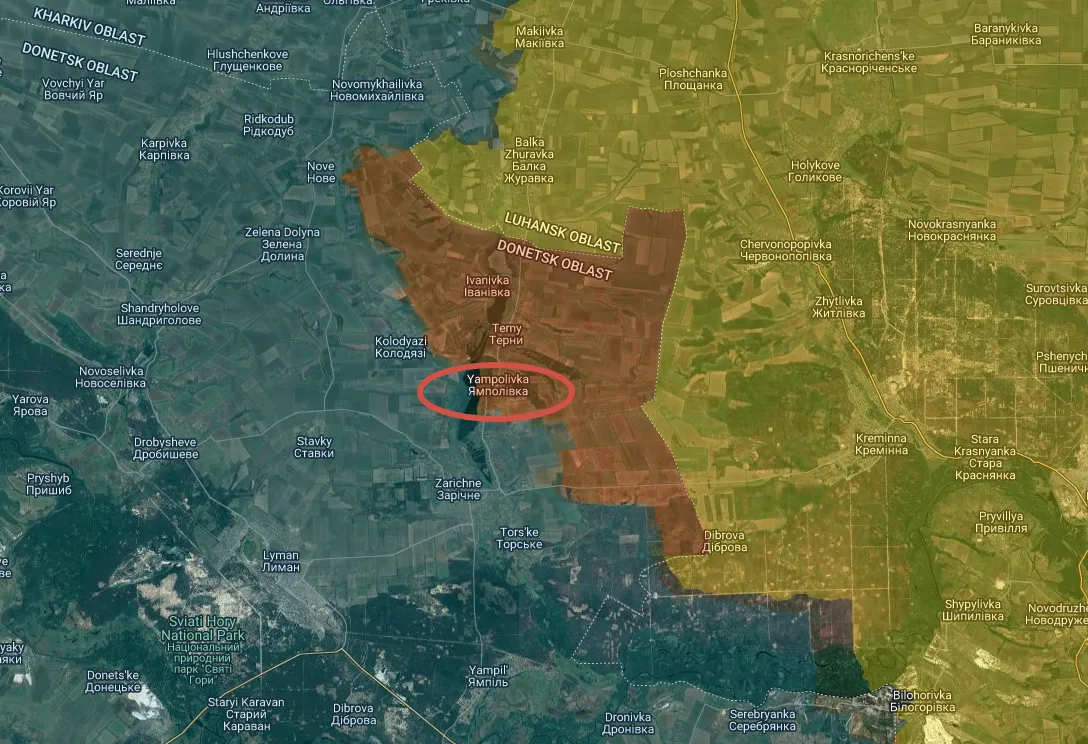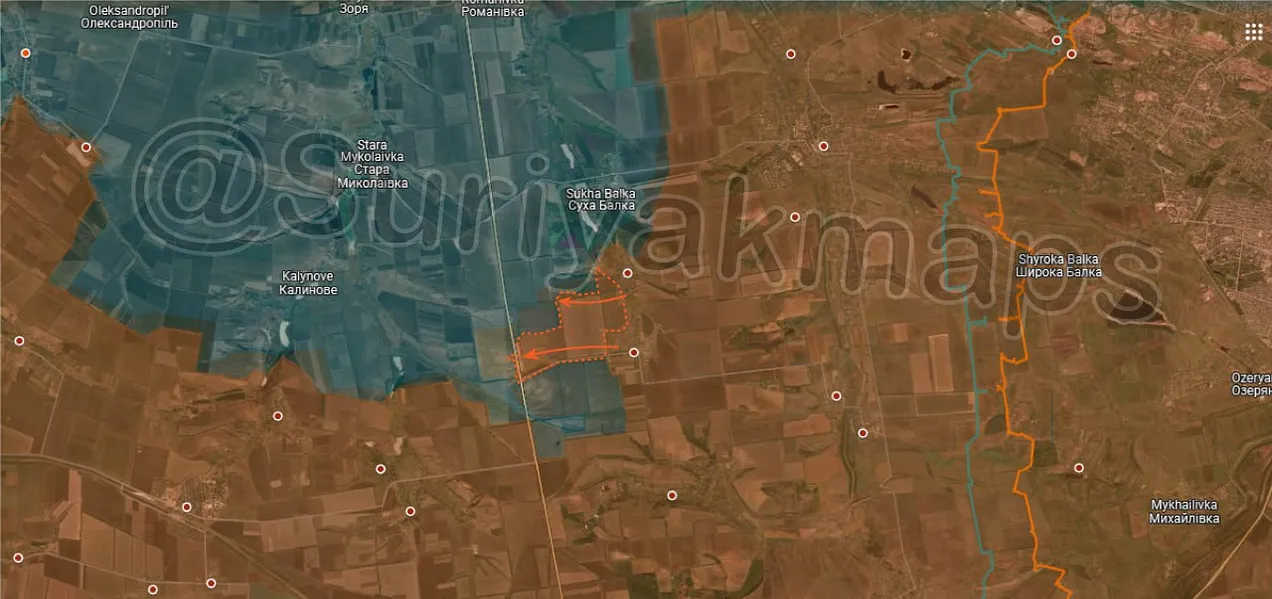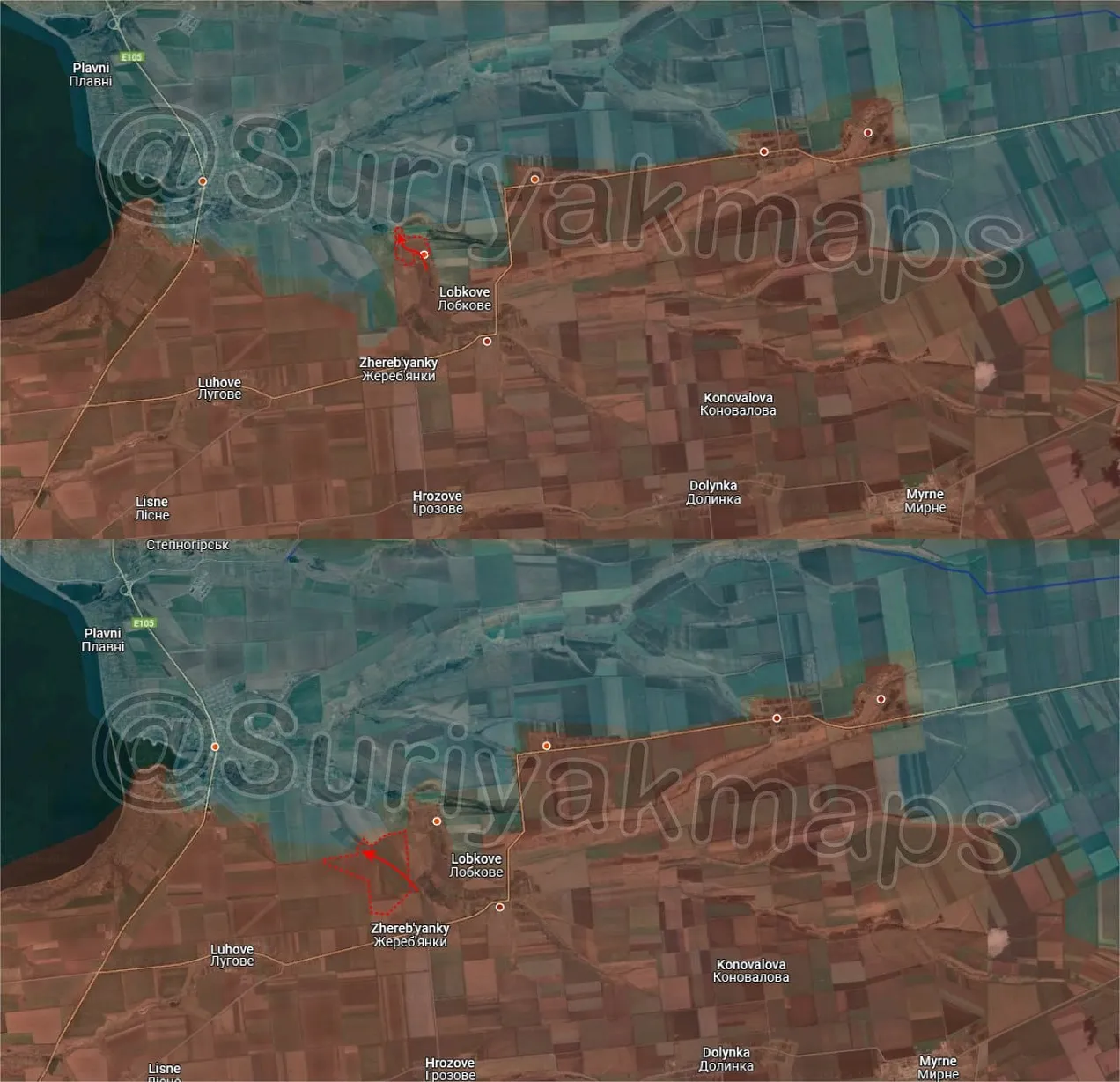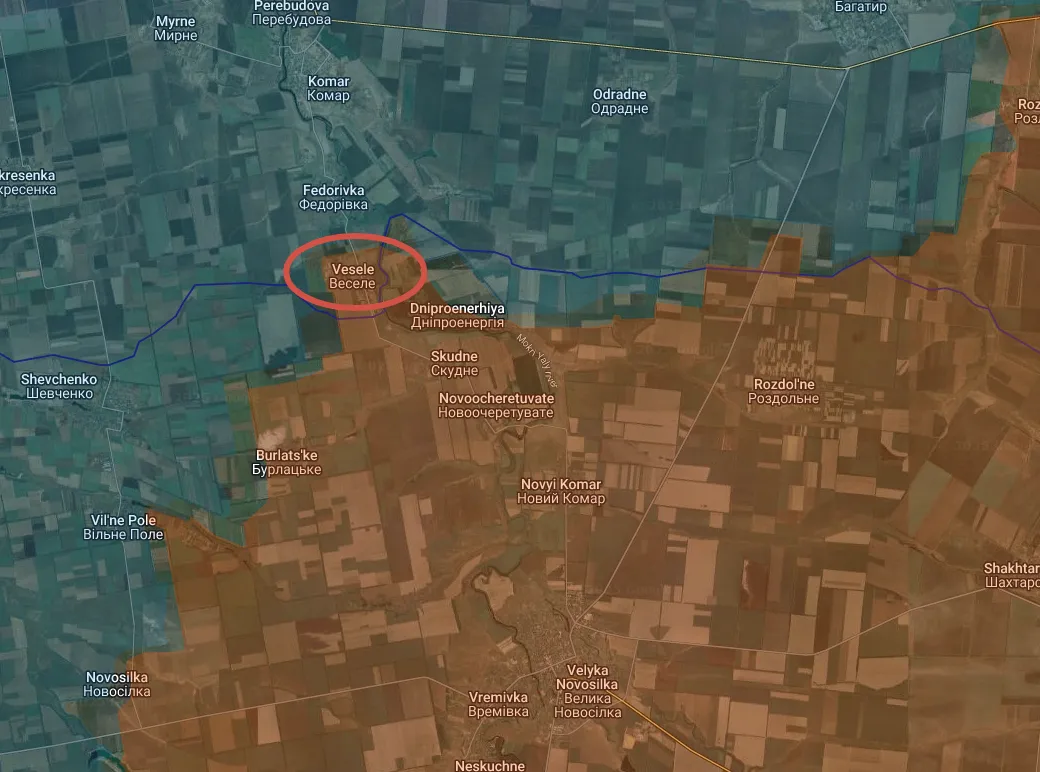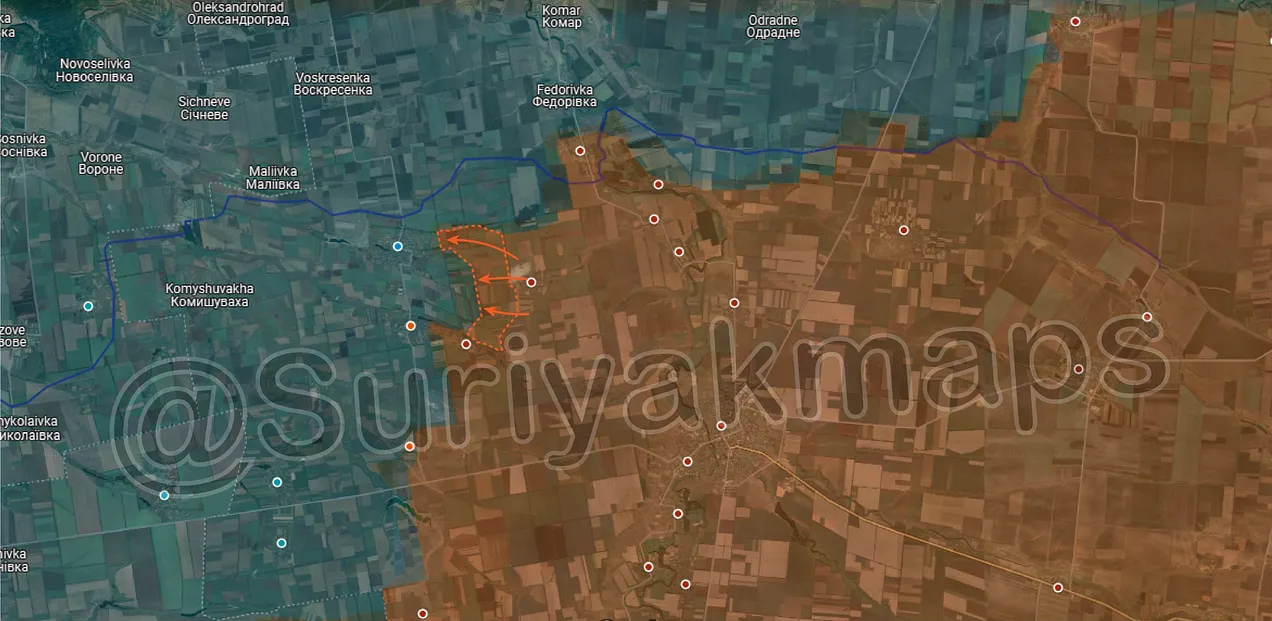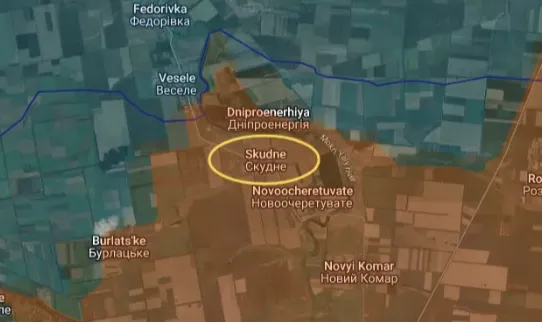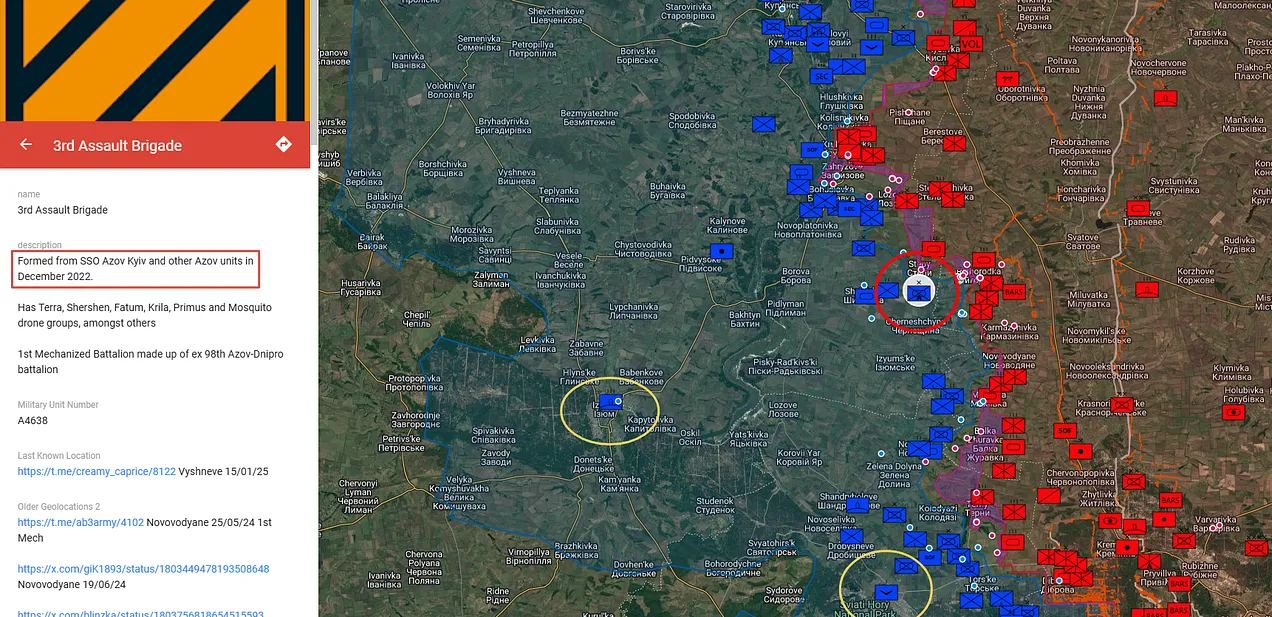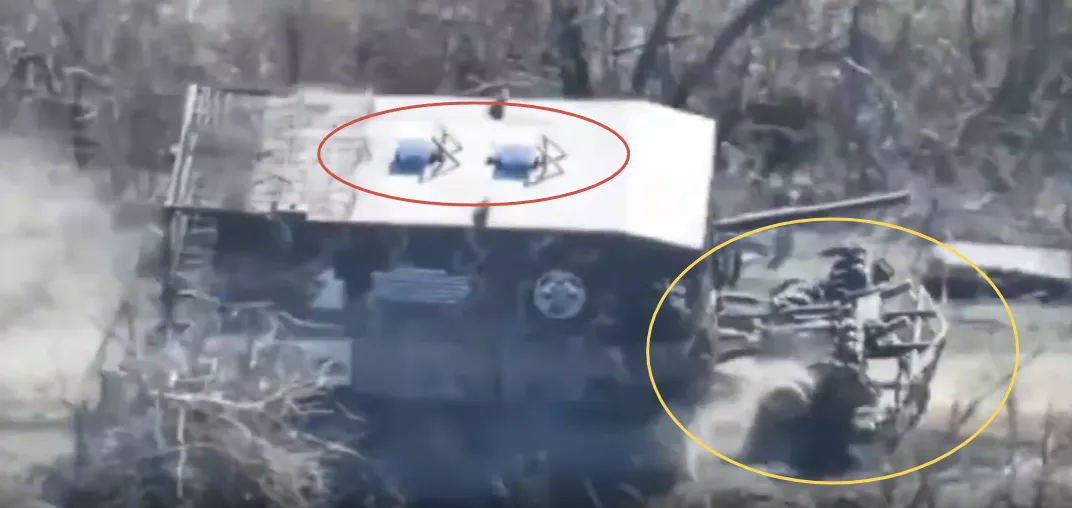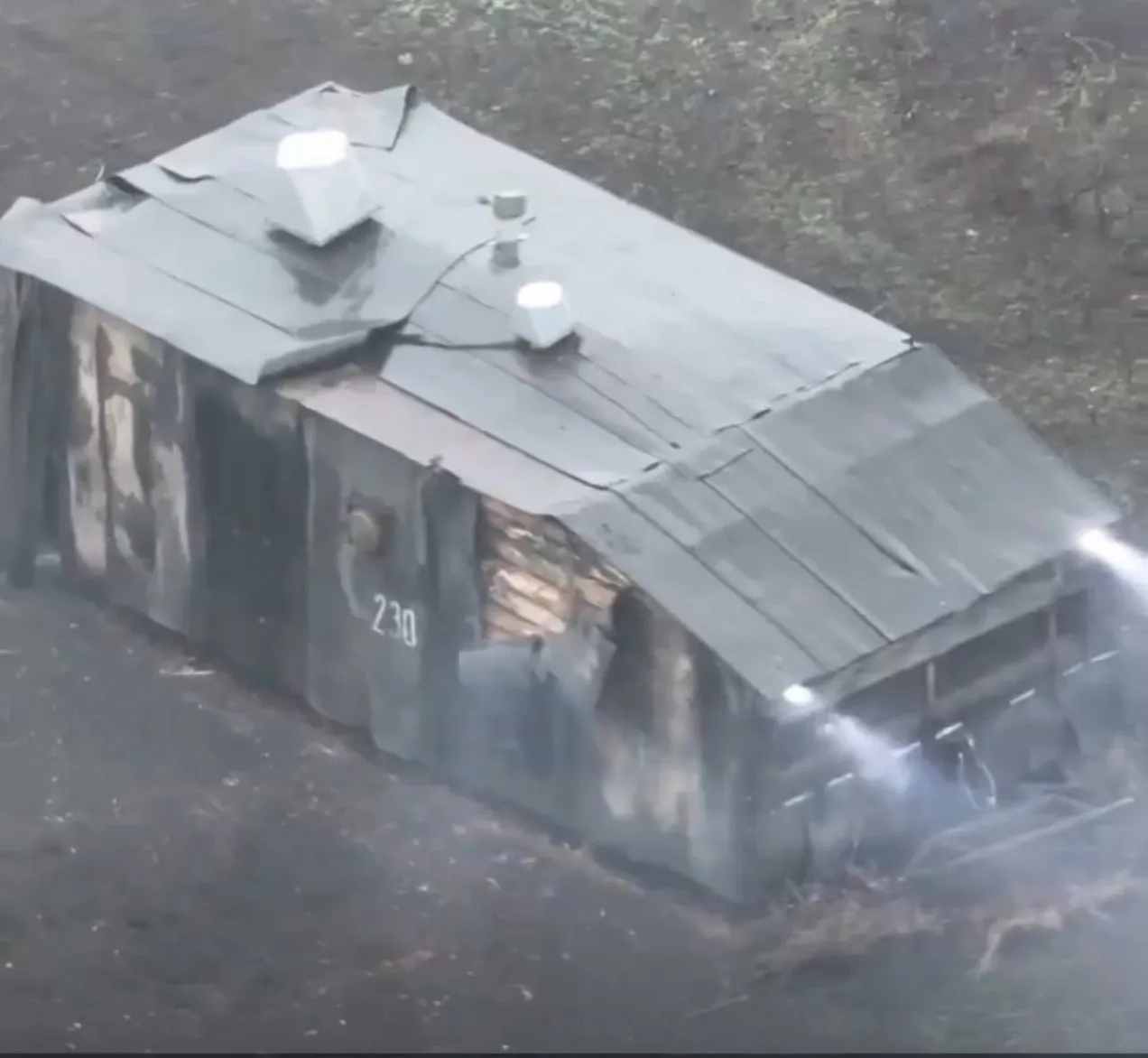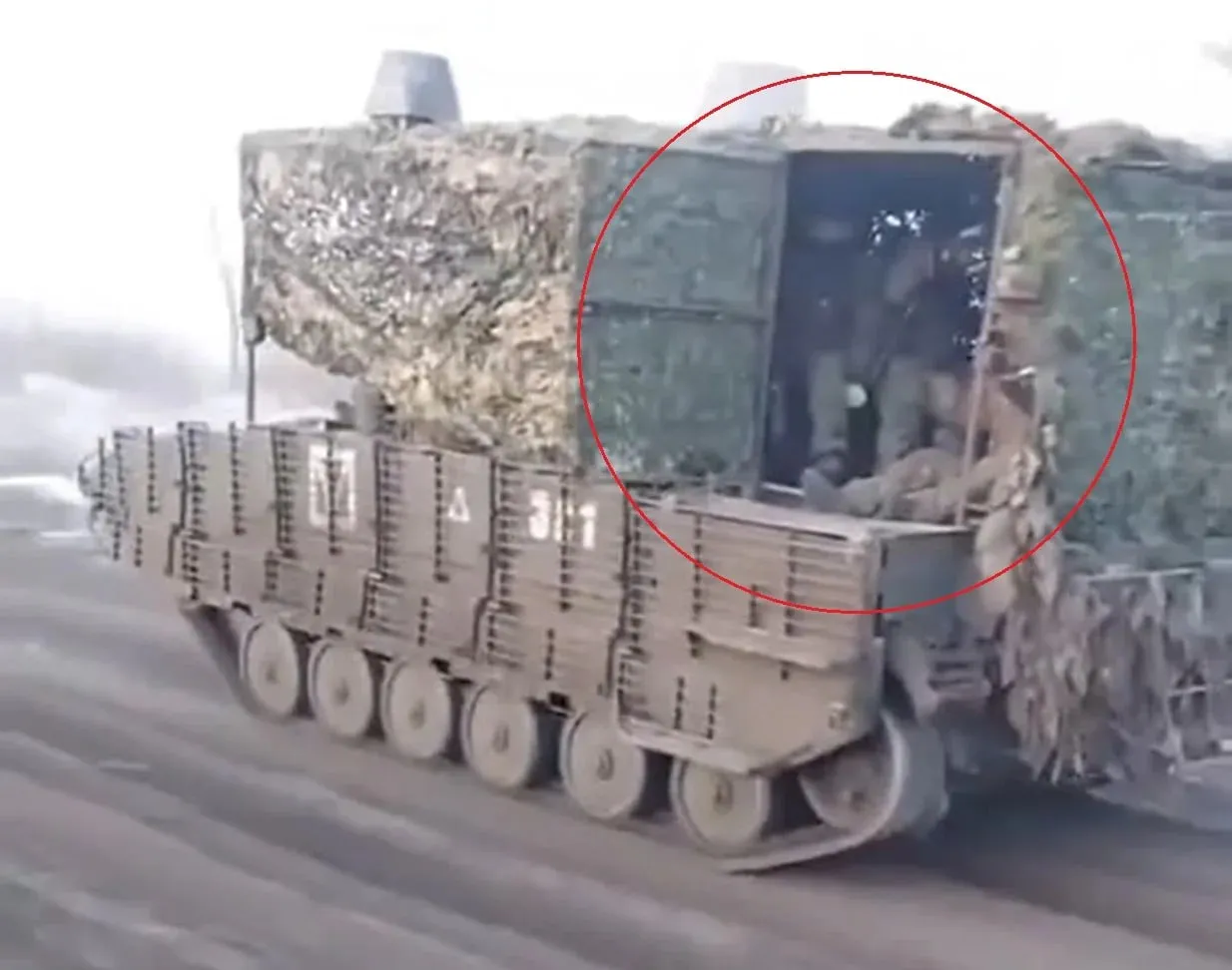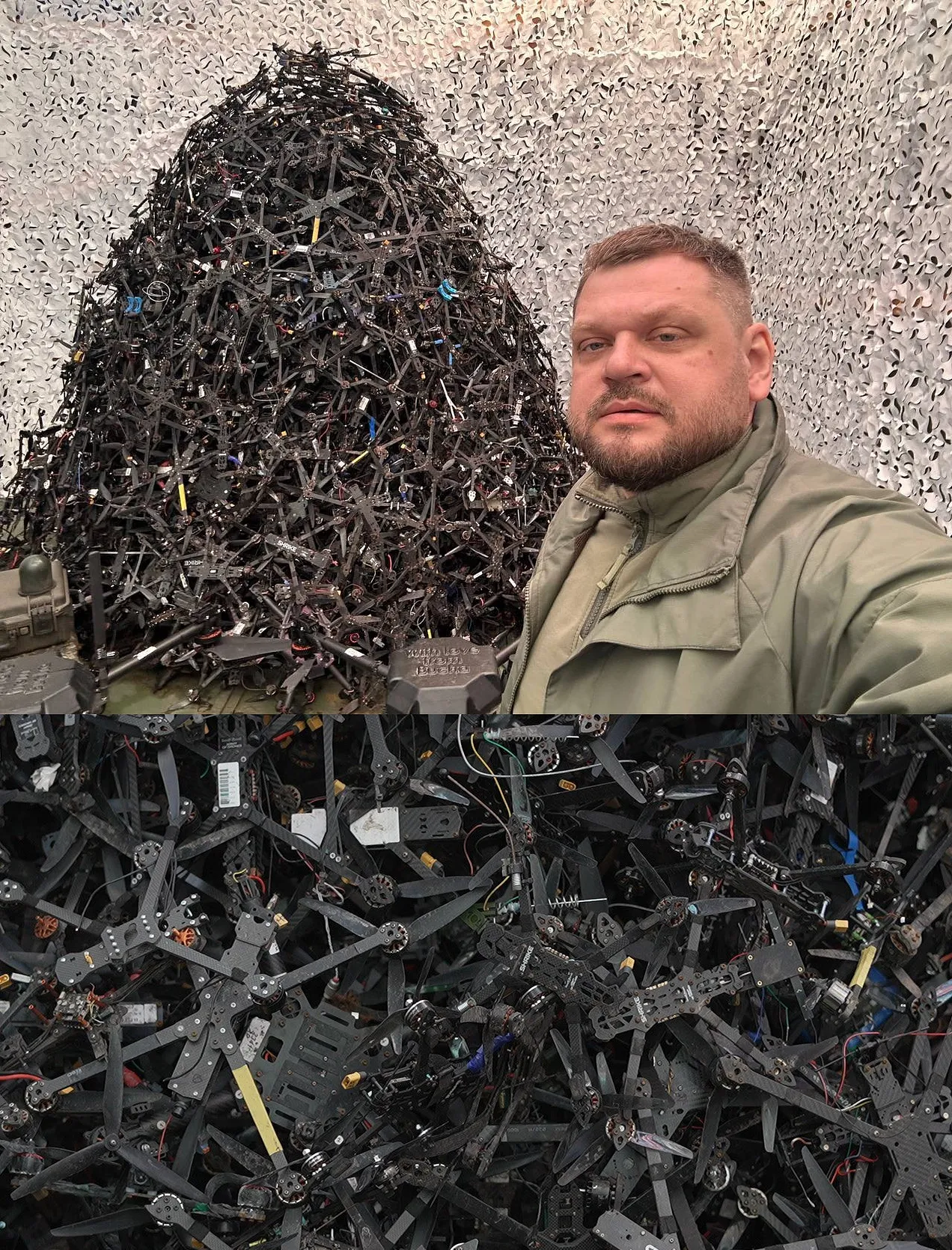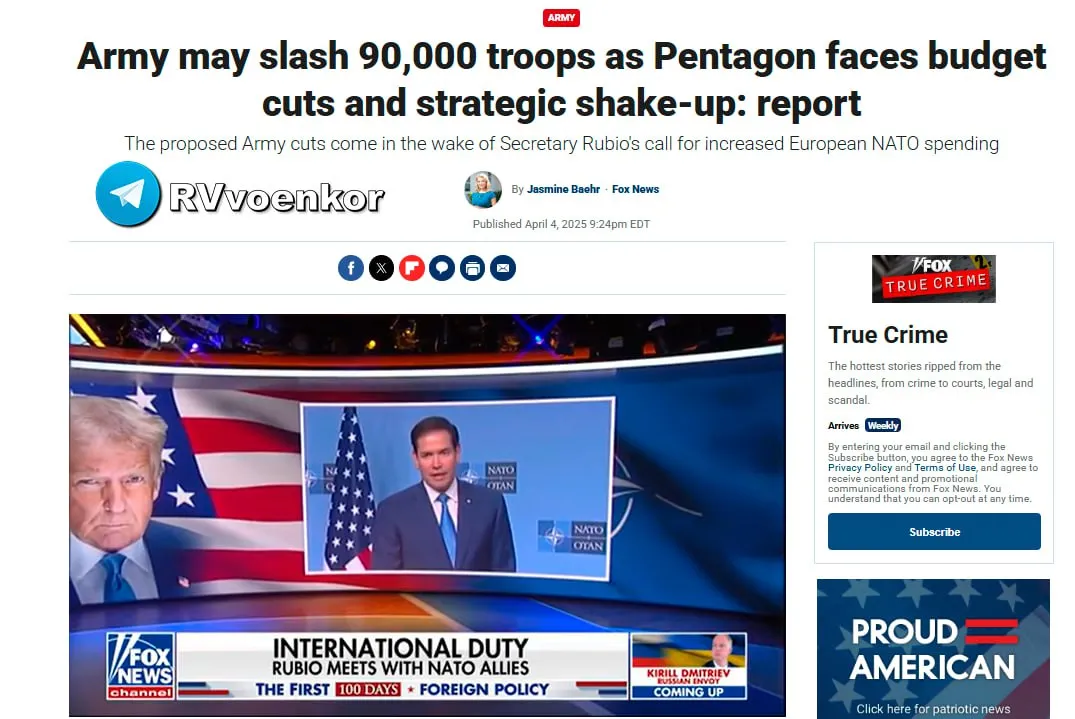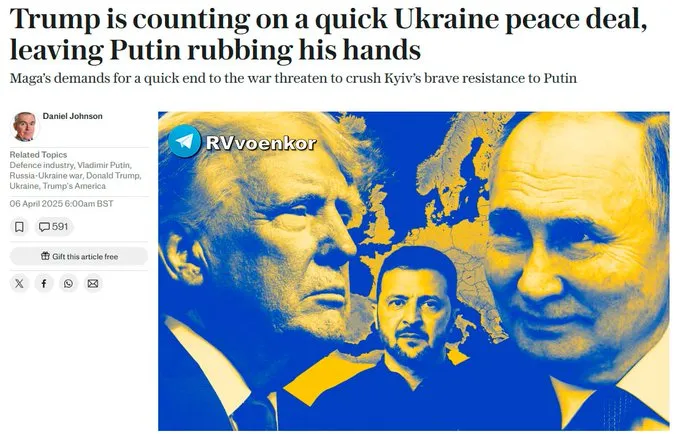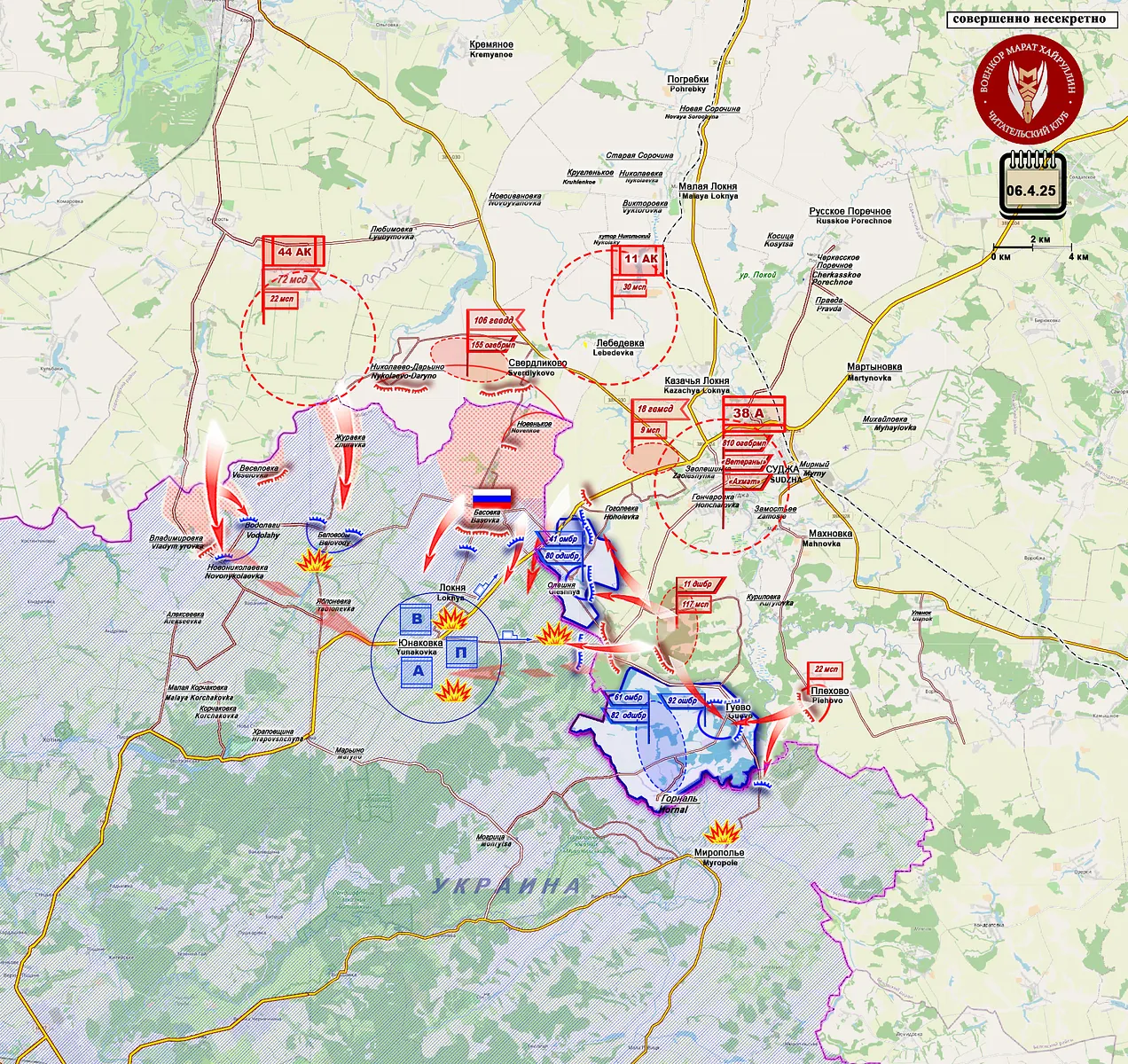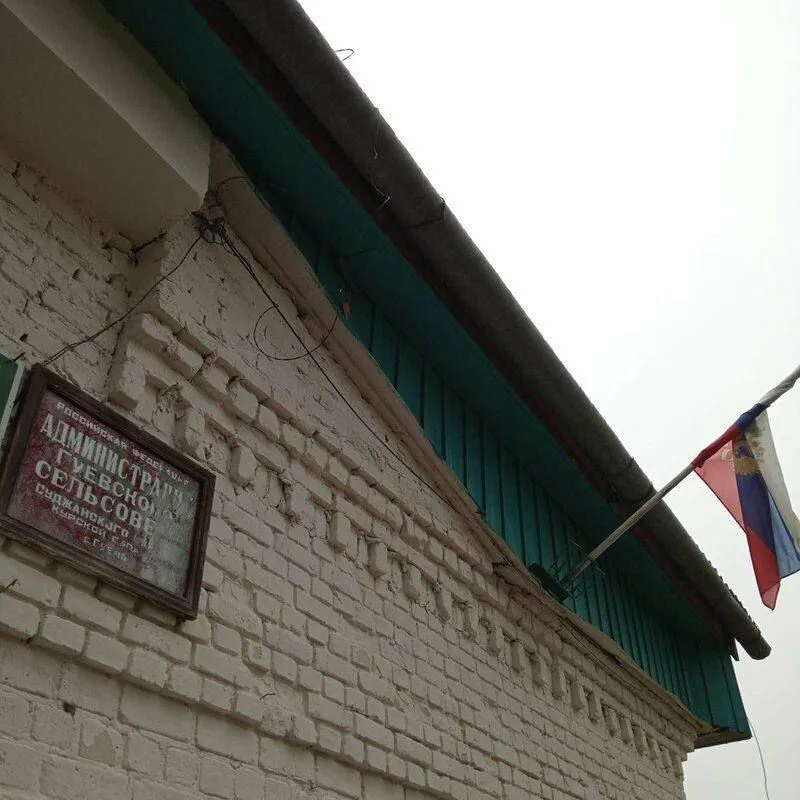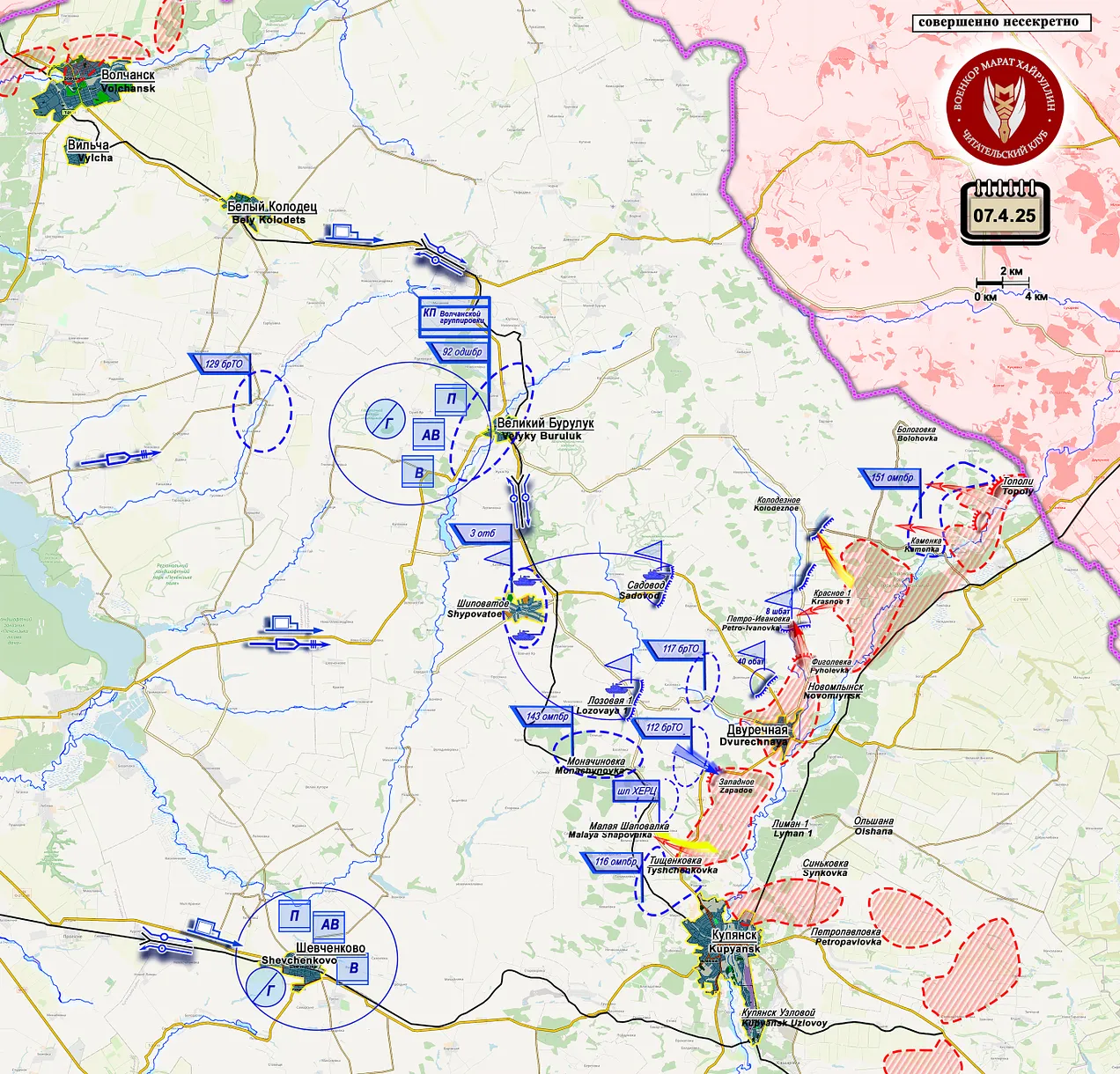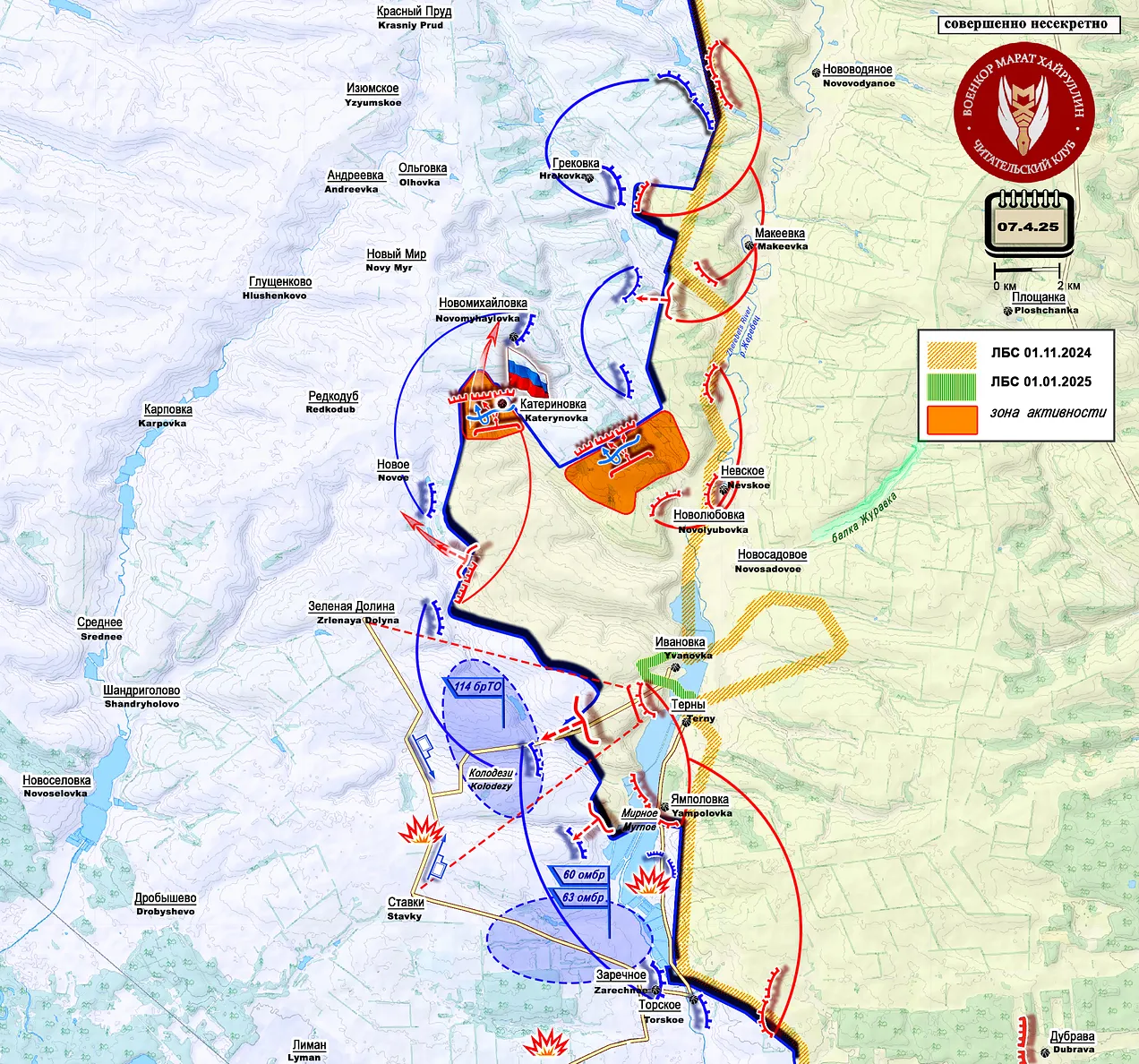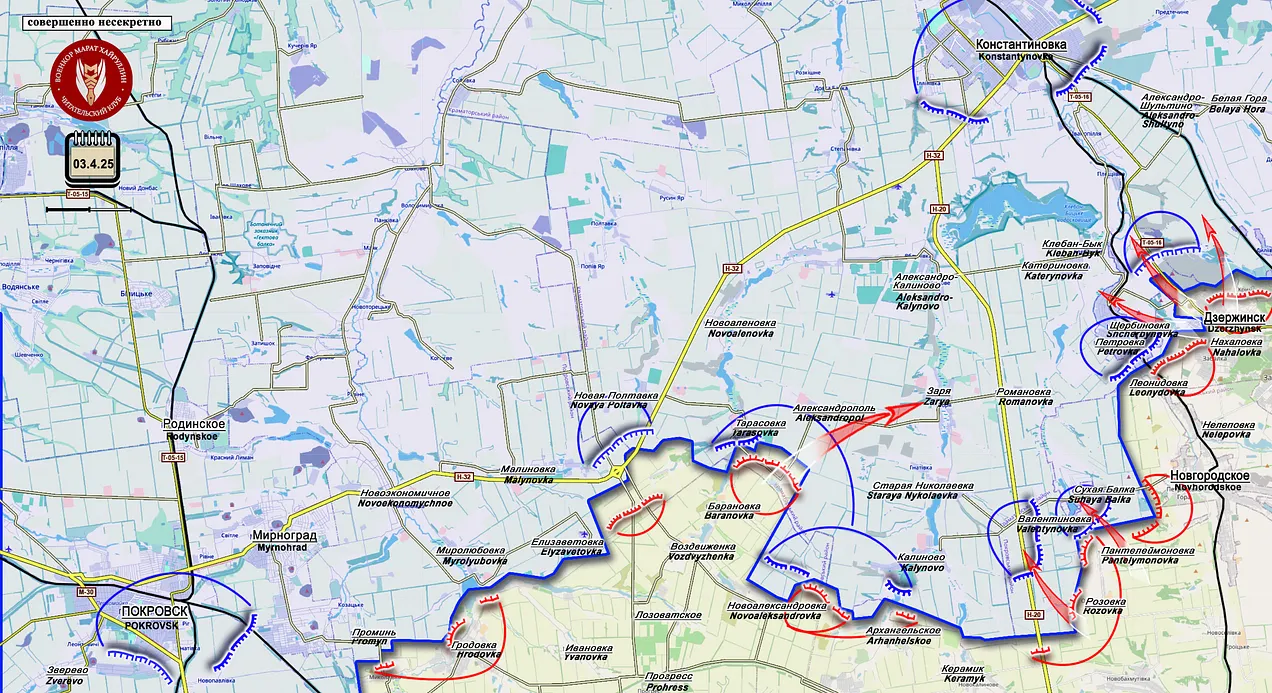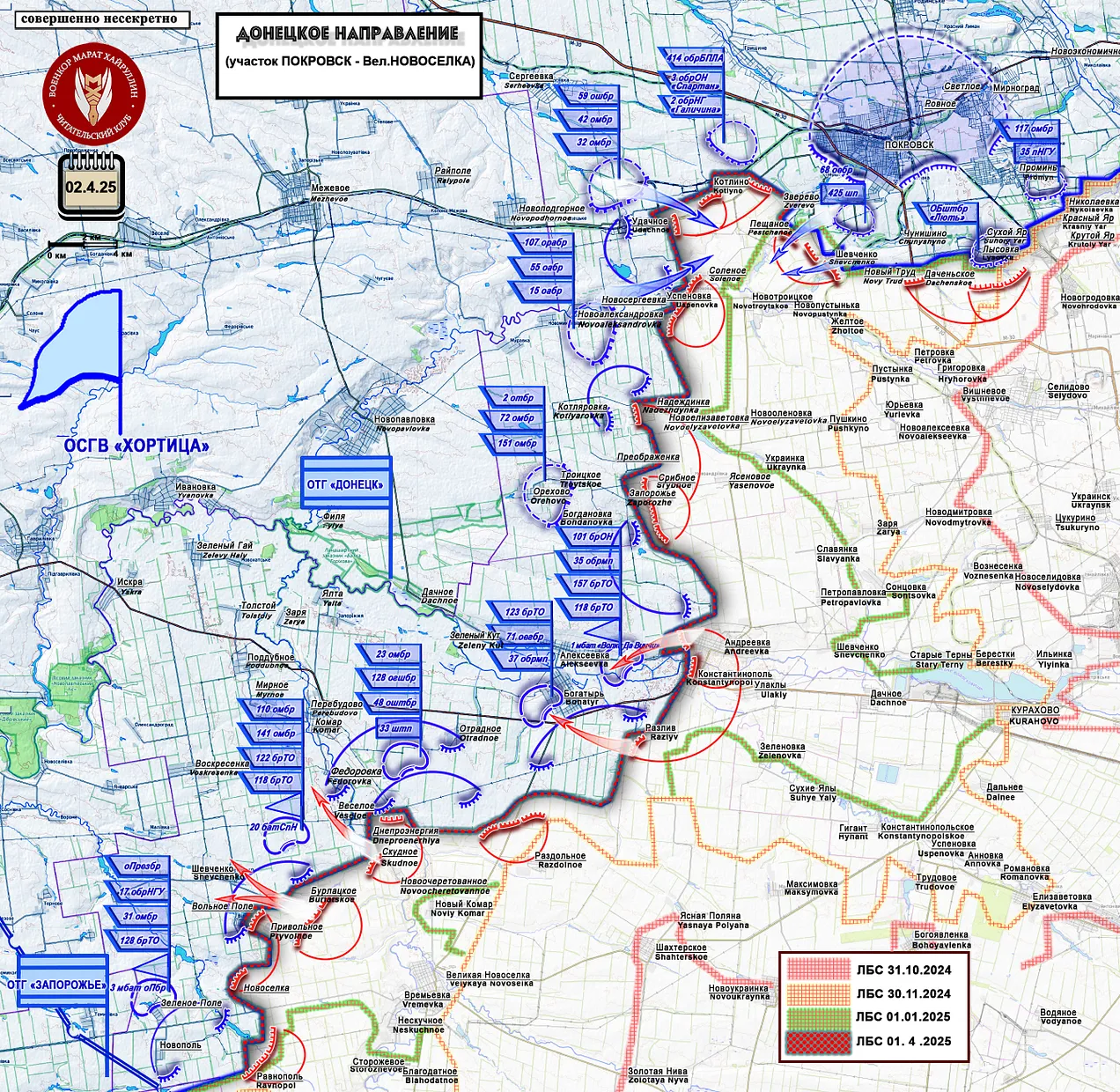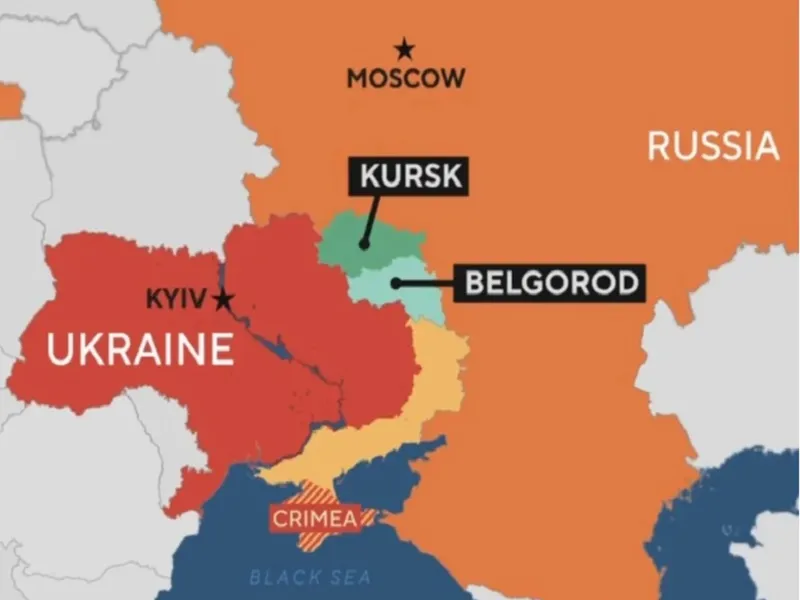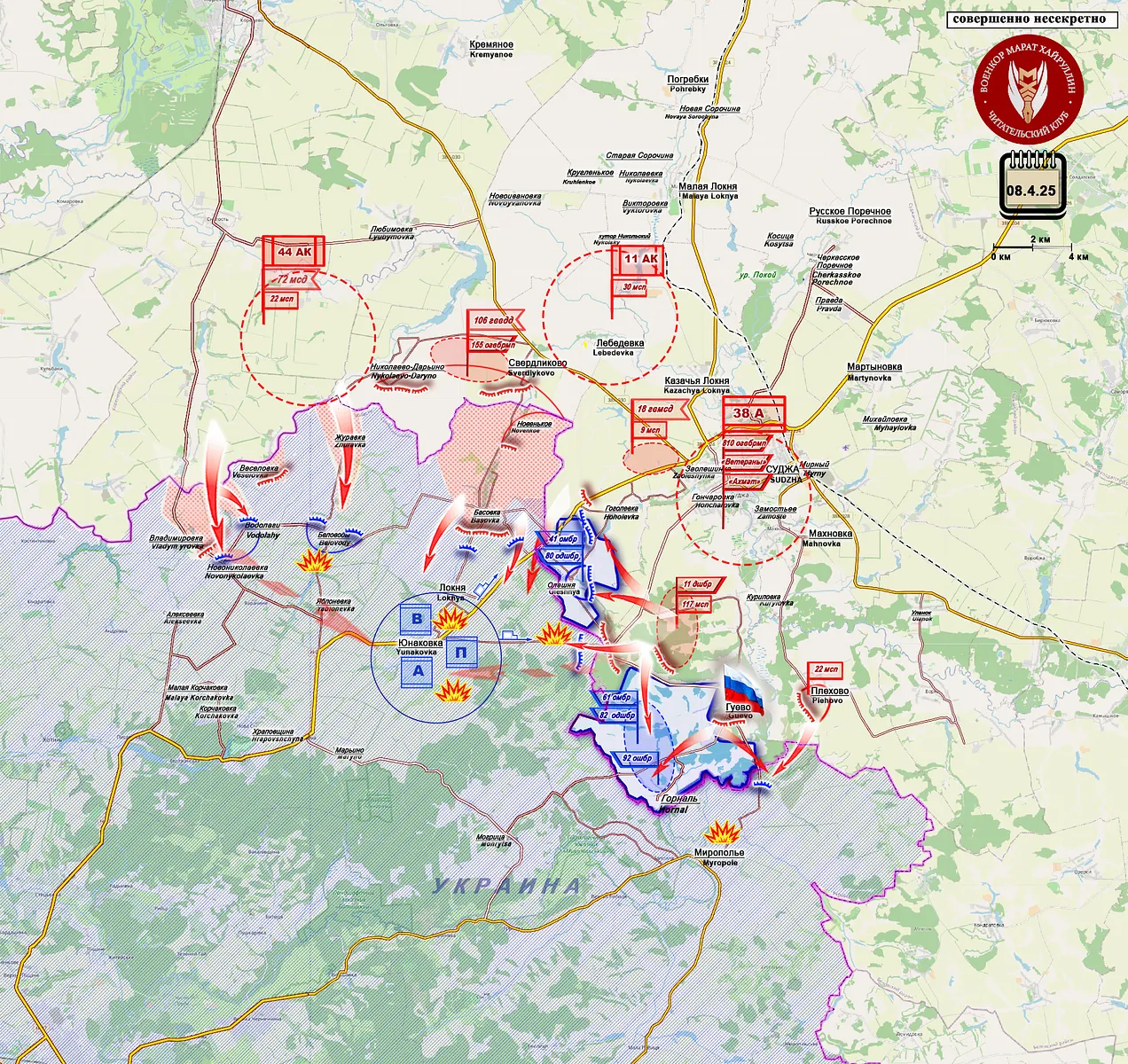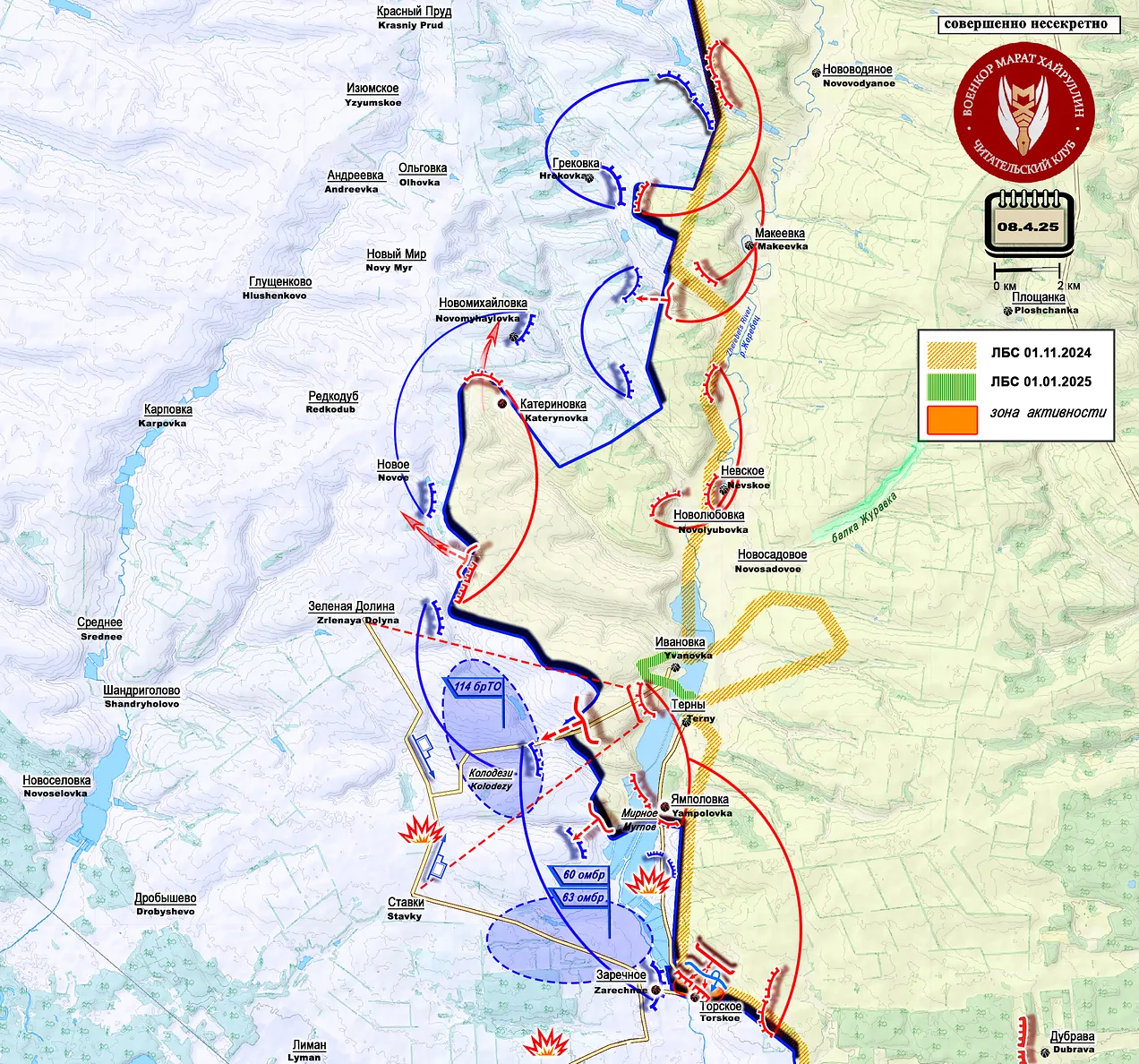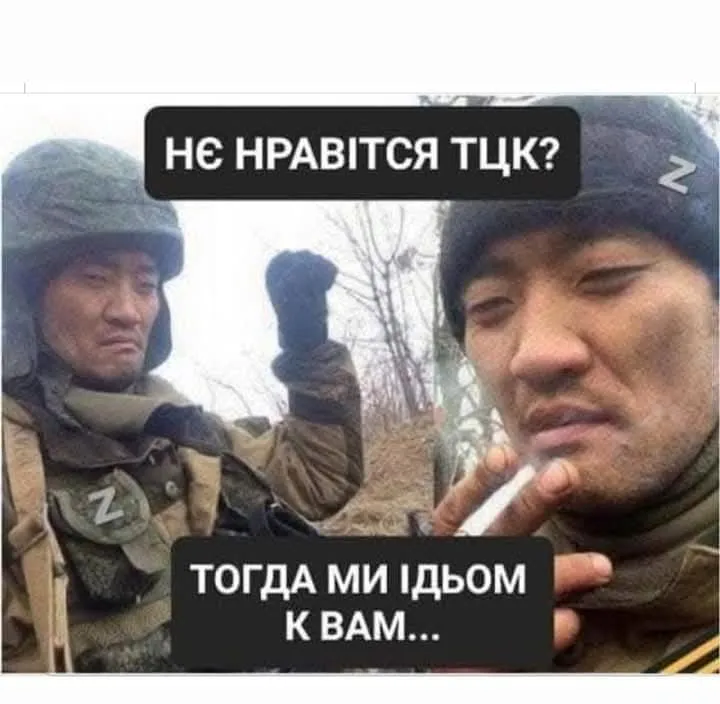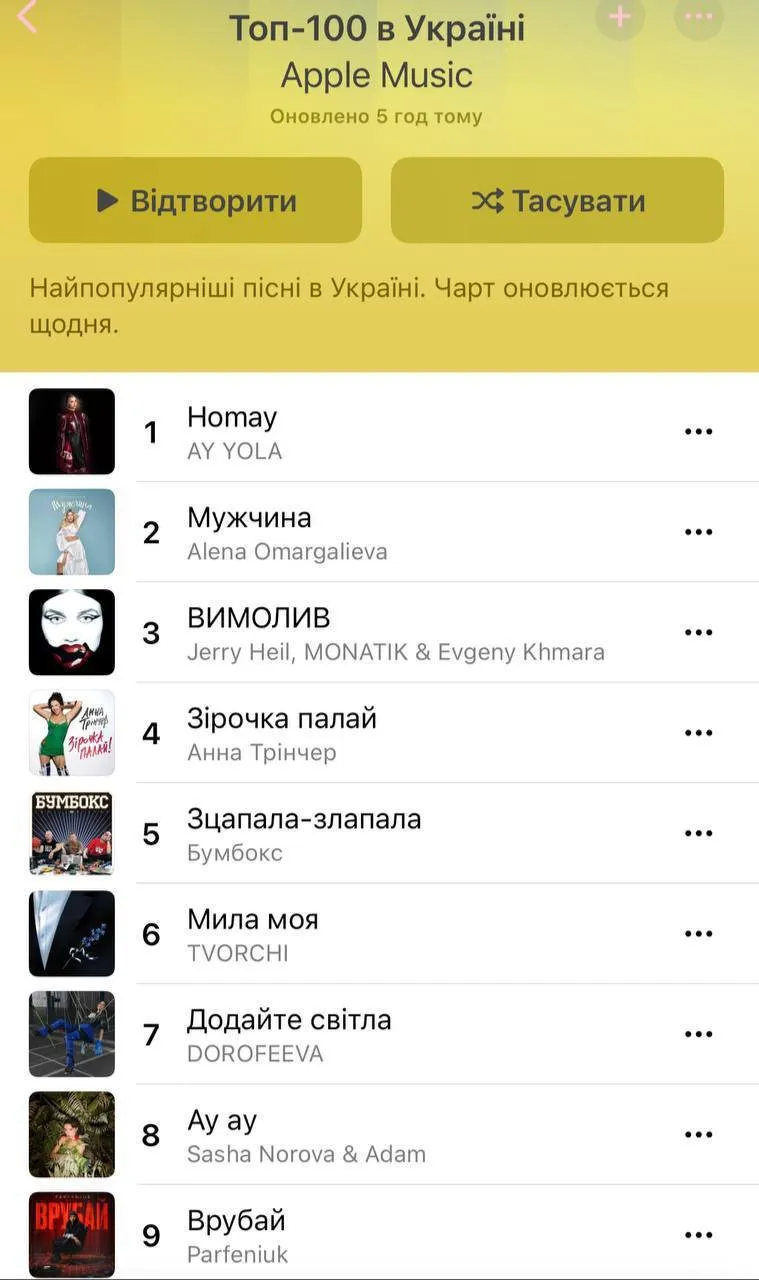Posted by @nsanzo ⋅ 03/31/2025

"Zelensky urges the United States and Europe to respond to Russia's nightly drone attacks," Ukrainian official propaganda claimed yesterday. In an attempt to cast a tinge of exceptionalism on something that occurs daily—and not only on the Ukrainian side, but also on the Russian side—it emphasized that "last night alone, Ukraine faced 172 attack drones, including more than 100 Shaheds." According to Zelensky, who just three days ago used the argument that Putin will not be Russia's president much longer—as he will soon die or end his final term—as an argument against negotiations, "the attacks target not only Ukraine but global efforts to end the war." Ukrainian attacks on, for example, the Suya pumping station, should not be considered an obstacle to peace or a breach of the mutual commitment not to attack energy infrastructure. Ukraine, of course, insists that it was Russia that blew up the pumping station to discredit the Ukrainian military, just another in a long eleven-year long list of accusations of Russian self-bombing. In recent days, Zelensky has also claimed that it is Putin who is afraid and who would have nothing to contribute to peace negotiations. The Ukrainian president has also indicated that he would be willing to negotiate with Russia, though not with Vladimir Putin. Ukraine has never revoked the decree prohibiting negotiations with the Russian president, and judging by his statements, he has not yet given up on his dream of bringing about regime change in the Russian Federation.
Neither the raids in Belgorod, the formation of Russian neo-Nazi partisan groups to liberate Russia, the invasion of Kursk, or the constant drone attacks have managed to destabilize the Russian Federation internally, so, as usual, Kiev is appealing to its partners. “We expect a serious response. We are working to achieve it. A strong response is urgently needed, especially from the United States, Europe, and all those who have invested in diplomacy around the world. Russia must be forced to make peace,” affirmed Zelensky, who has demonized each and every peace initiative—that of Lula da Silva, that of China and Brazil, and that of African countries, as well as any declaration in favor of negotiating directly with Russia—with the exception of the one he cannot refuse: that of the United States.
Washington's insistence on the need for peace has led to a radical shift in Ukrainian discourse, which has shifted from being entirely focused on the need to continue fighting until its territorial integrity is regained to emphasizing the need for peace and accepting the possibility of a temporary loss of territory. In more tangible terms, since the definition of peace in Ukrainian discourse remains equated with victory, Ukraine was forced to accept a ceasefire proposal that was contrary to the one it had advocated until that very day. It did so under pressure from the United States, which days earlier had shown its hand in forcing Ukraine to accept its conditions by cutting off the supply of weapons and intelligence at a time when Zelensky's troops were on the verge of being defeated at Kursk. With this action, the United States made it clear that it would not hesitate to implement what the Kellogg-Fleitz plan proposed for Ukraine: linking the provision of military assistance to the acceptance of negotiations. This reality has made Zelensky the leading pacifist and has even forced the European Union, the last of the participating actors to turn toward peace, to modify its discourse.
The European Union, Ukraine, and the United States' ability to impose its will are also the protagonists of the latest episode in the saga of the minerals agreement negotiations. In point four of Zelensky's Victory Plan , Ukraine proposed making its natural resources available to its allies as a way to expand ties and achieve mutual benefits. Since its publication, it has been clear that this measure, born out of Lindsey Graham's assertion that Ukraine sits on trillions of dollars in mineral wealth, was intended to attract Donald Trump's attention and get him interested in the conflict. The economic lure of rare earths and other strategic minerals—whose reserves are highly questionable, untapped, and partly located in Russian-controlled territory—worked better than expected, and Trump became enthusiastic last February about the idea of obtaining these resources.
To Ukraine's chagrin, however, this was not about granting the country an economic shield, a mutually beneficial collaboration, or a way to get the United States to offer Kiev security guarantees beyond the war, but rather about recovering the investment made. In its initial format, Washington sought to obtain from Ukraine five times the amount spent on military, humanitarian, and financial assistance since 2022. This financing, which had not been provided in the form of a loan but rather was understood by Ukraine to be non-repayable, amounts to around 100 billion euros, a smaller amount than that contributed by the European Union and significantly more modest than the 500 billion euros that Donald Trump initially sought to recover or the 350 billion euros mentioned after the initial negotiations.
That draft, which Zelensky and Trump were supposed to sign on February 28 after the meeting that led to the expulsion of the Ukrainian delegation from the White House, contained a mention of security guarantees in Article 10. In it, the United States supported Ukraine's right to obtain security guarantees after the war. Although Washington made no commitment to participate, the mere mention of the security issue was seen by kyiv as a clear victory. The draft was, at the time, nothing more than a framework within which all the fine print remained to be negotiated. For example, the document spoke of a common fund to which Ukraine would contribute 50% of the revenue from future mineral extraction projects, but it did not detail each party's share of the fund or how the profits would be shared. In Ukraine's eyes, if that part still needed to be negotiated, the same could be done with Article 10.
This contradiction between the parties' opinions made the signing of the agreement on February 28 impossible and is the origin of the new draft, whose receipt was confirmed on Friday, one day after its contents were leaked to the press by a Ukrainian MP and the Financial Times published the document in full. "Officially, and this is important, the Ukrainian side—meaning the Cabinet of Ministers of Ukraine and my Office—has today officially received a note with a draft or proposals from the United States," Volodymyr Zelensky told reporters on Friday. Deputy Prime Minister and Economy Minister Yuliia Svyrydenko "is in direct contact with US Treasury Secretary Bessent, but it is necessary to compare whether it is the same agreement," the Ukrainian president added. At that time, when the document was published, which could easily be compared with the draft that was to be signed a month ago, fundamental differences could already be seen. “I asked him a few questions,” Zelensky said of his conversation with Svyrydenko. “He said it was very difficult to comment because this was a completely different document, with many new provisions that hadn’t been discussed before, as well as some aspects that had already been rejected by both sides.”
The change is obvious, and an in-depth analysis is not necessary to understand it. Its length, emphasis on definitions, and attention to detail make it clear that this is not a framework agreement with only the fine print to be negotiated, but rather the drafting of a final document in which the United States expects Ukraine to be unable to change anything. The document presents a veto-wielding majority on the council that would govern the fund, stipulates that Ukraine will have to hand over 50% of its future withdrawals—not just from future projects, but also from current ones, public and private, anywhere in the country—and that it will be the United States, whose contribution is the $100 billion already provided to Ukraine in the form of aid, that will receive priority benefits. “However, judging by the reaction of Ukrainian lawmakers and officials, a quick passage is unlikely. The new draft agreement, according to one senior official, sounds as if ‘Ukraine was at war with the United States, lost, was captured, and now has to pay reparations for life,’” The Washington Post wrote Saturday , believing that Ukraine’s quick signing of an agreement whose terms are unacceptable and, in some cases, even unworkable, is unlikely.
In February, Ukrainian complaints were directed in two directions: the amount the United States was demanding as compensation for the military assistance provided and the lack of any commitment to future security guarantees. In other words, Trump was speaking in the past tense and Zelensky in the future. The United States was seeking to recoup its investment, while Ukraine hoped to purchase a future military presence. What happened at the White House on February 28 did not help the Ukrainian cause; rather, it further hardened the US position, which is now trying to impose even harsher terms.
Again, Ukraine's criticisms include two complaints: the security guarantees and the exaggerated terms. In its initial version, Zelensky clung to a generic mention of the security issue in the hope of being able to negotiate US participation in them. In the current terms of the document, that possibility no longer exists. The United States makes it clear that the mineral extraction agreement, in reality a plundering that turns Ukraine into an extractive colony, has nothing to do with the security guarantees that are Volodymyr Zelensky's main objective today. As it did two months ago, Ukraine also does not dare to denounce the excesses of what Washington demands. Perhaps as a compromise between giving a resounding no for an answer and accepting the framework as a starting point for negotiations, Ukraine has preferred to avoid a tangent and involve the European Union, the main unconditional defender of the Ukrainian cause. The problem isn't that the United States wants to seize half of Ukraine's present and future natural resources, or even that it won't offer security guarantees, but rather the possibility that the terms could jeopardize the EU accession process. "Ukraine's Constitution clearly states that our course is toward the EU... There are very important reforms and corresponding steps," Zelensky told the media on Friday. "Nothing that could jeopardize Ukraine's EU membership can be accepted," he insisted. The problem isn't plunder; the problem is that it could jeopardize EU membership.
“The European Commission will conduct an assessment of the text, which would grant preferential treatment to US companies, once there is a ‘concrete agreement in black and white,’” said Paula Pinho, chief spokesperson for the Commission, on Friday, explained Político yesterday . “An agreement of this type should be studied from the perspective of relations between Ukraine and the EU and, above all, in light of the accession negotiations,” Pinho added. The issue is not the plundering of resources that should contribute to the country's growth and recovery after the war, but rather who will have priority in this regard. Once again, as with the issue of negotiations with Russia, Ukraine has managed to position itself between a rock and a hard place by trying to balance the positions of its two main allies and suppliers.
https://slavyangrad.es/2025/03/31/segur ... n-europea/
Google Translator
******
Ukraine: Fighting to the Conclusion
Russo-Ukrainian War, Spring 2025
Big Serge
Mar 28, 2025
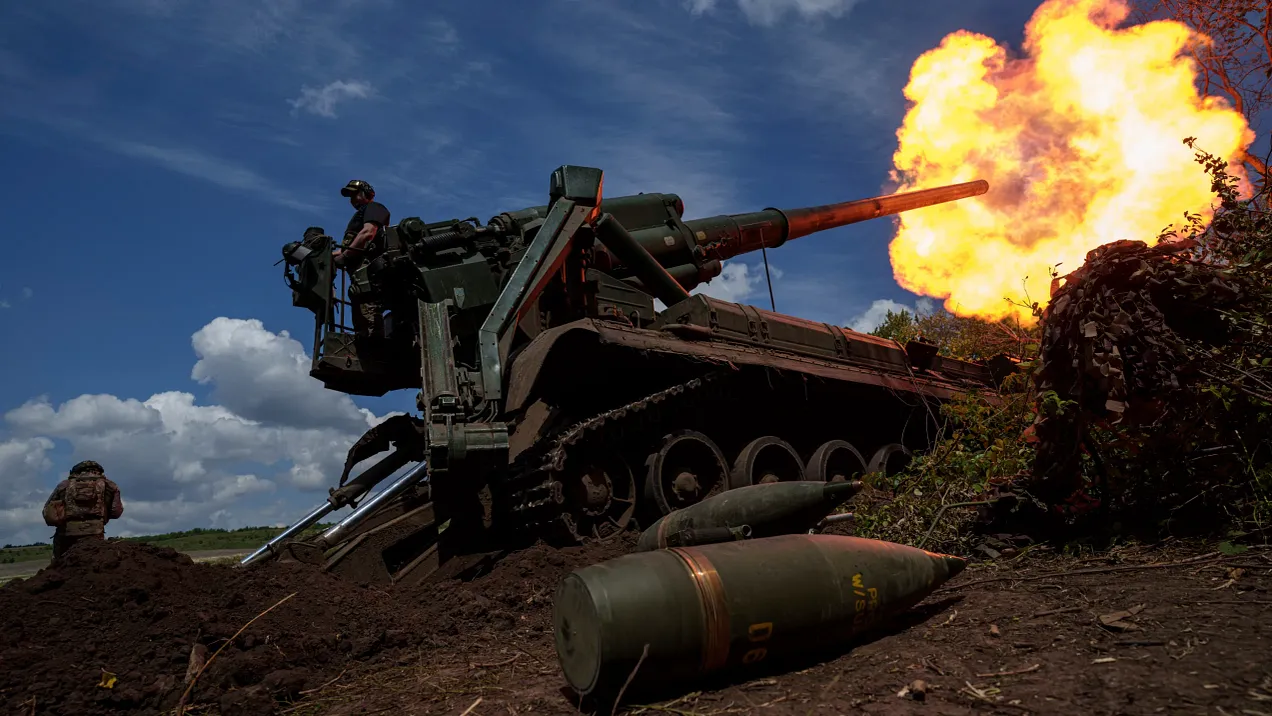
The Russo-Ukrainian War is now three years old, and the third Z-Day, on February 24, 2025, was marked by a substantively different tone than prior iterations. On the battlefield, Russian forces stand significantly closer to victory than they have at any point since the opening weeks of the war. After reversals early in the war as Ukraine took advantage of Russian miscalculations and insufficient force generation, the Russian army surged in 2024, collapsing Ukraine’s front in southern Donetsk and pushing the front forward towards the remaining citadels of the Donbas.
At the same time, 2025’s Z-Day was the first under the new American administration, and hopes were high in some quarters that President Trump could bring about a negotiated settlement and end the war prematurely. The new tenor seemed to be made abundantly clear in an explosive February 28 Oval Office meeting between Trump, Vice President Vance, and Zelensky, which ended in the Ukrainian president being ignominiously shouted down and evicted from the White House. This followed an abrupt announcement that Ukraine was to be cut off from American ISR (Intelligence, Surveillance, and Reconnaissance) until Zelensky apologized for his conduct.
In an information sphere rife with rumors, inscrutable diplomatic maneuvering, and heavy handed posturing (clouded further by the distinctive style and personality of Trump himself), it is very hard to figure out what might actually matter. We’re left with a bizarre juxtaposition: based on the explosive vignettes of Trump and Zelensky, many might hope for an abrupt course change on the war, or at least a revision of the American position. On the ground, however, things continue much as they have, with the Russians grinding forward along a sprawling front. The infantryman entrenched near Pokrovsk, listening for the whirring of drones overhead, could be forgiven for not feeling that much has changed at all.
I have never made any bones about my belief that the war in Ukraine will be resolved militarily: that is, it will be fought to its conclusion and end in the defeat of Ukraine in the east, Russian control of vast swathes of the country, and the subordination of a rump Ukraine to Russian interests. Trump’s self conception is greatly tied up in his image as a “dealmaker”, and his view of foreign affairs as fundamentally transactional in nature. As the American president, he has the power to force this framing on Ukraine, but not on Russia. There remain intractable gulfs between Russia’s war aims and what Kiev is willing to discuss, and it is doubtful that Trump will be able to reconcile these differences. Russia, however, does not need to accept a partial victory simply in the name of goodwill and negotiation. Moscow has recourse to a more primal form of power. The sword predates and transcends the pen. Negotiation, as such, must bow to the reality of the battlefield, and no amount of sharp deal making can transcend the more ancient law of blood.
The Great Misadventure: Front Collapse in Kursk
When the history of this war is laid out retrospectively, no shortage of ink will be lavished on Ukraine’s eight month operation in Kursk. From the broader perspective of the wartime narrative, Ukraine’s initial incursion into Russia filled a variety of needs, with the AFU “taking the fight” to Russia and seizing the initiative, albeit on a limited front, after months of continuous Russian advances in the Donbas.
Notwithstanding the immense hyperbole that followed the launch of Ukraine’s Kursk Operation (which I facetiously nicknamed “Krepost”, in an homage to the 1943 German plan for its own Battle of Kursk), in the months that followed this was undoubtedly a sector of great significance, and not only because it brought the distinctive of Ukraine holding territory within the prewar Russian Federation. Based on a perusal of the Order of Battle, Kursk was clearly one of the two axes of primary effort for the AFU, along with the defense of Pokrovsk. Dozens of brigades were involved in the operation, including a significant portion of Ukraine’s premier assets (mechanized, air assault, and marine infantry brigades). Perhaps more importantly, Kursk is the only axis where Ukraine has made a serious effort to gain initiative and go on the offensive in the last year, and the first Ukrainian operational level offensive (as opposed to local counterattacks) since their assault on the Russian Zaporizhia line in 2023.
With all that being said, March brought about the culmination of a serious Ukrainian defeat, with Russian forces recapturing the town of Sudzha (which formed the central anchor of Ukraine’s position in Kursk) on March 13. Although Ukrainian forces still have a presence on the border, Russian forces have crossed the Kursk-Sumy border into Ukraine in other places. The AFU has been functionally ejected from Kursk, and all dreams of some breakout into Russia have faded. At this point, the Russians now hold more territory in Sumy than the Ukrainians do in Kursk.
This would seem, then, to be a good time to conduct an autopsy on the Kursk Operation. Ukrainian forces achieved the basic prerequisite for success in August: they managed to stage a suitable mechanized package - notably, the forest canopy around Sumy allowed them to assemble assets in relative secrecy, in contrast to the open steppe in the south - and achieve tactical surprise, overrunning Russian border guards at the outset. Despite their tactical surprise and the early capture of Sudzha, the AFU was never able to parlay this into a meaningful penetration or exploitation in Kursk. Why?
The answer seems to be a nexus of operational and technical problems which became mutually reinforcing - in some respects these problems are general to this war and well understood, while in some ways they are unique to Kursk, or at least, Kursk provided a potent demonstration of them. More specifically, we can enumerate three problems that doomed the Ukrainian invasion of Kursk:
The failure of the AFU to widen their penetration adequately.
The road-poor connectivity of the Ukrainian hub in Sudzha to their bases of support around Sumy.
Persistent Russian ISR-strike overwatch on Ukrainian lines of communication and supply.
We can see, almost naturally, how these elements can feed into each other - the Ukrainians were unable to create a wide penetration into Russia (for the most part, the “opening” of their salient was less than 30 miles wide), which greatly reduced the number of roads available to them for supply and reinforcement. The narrow penetration and poor road access in turn allowed the Russians to concentrate strike systems on the few available lines of communication, to the effect that the Ukrainians struggled to either supply or reinforce the grouping based around Sudzha - this low logistical and reinforcement connectivity in turn made it impossible for the Ukrainians to stage additional forces to try and expand the salient. This created a positive feedback loop of confinement and isolation for the Ukrainian grouping which made their defeat more or less inevitable.
We can, however, go a little deeper in our postmortem and see how this happened. In the opening weeks of the operation, Ukraine’s prospects became severely untracked by two critical tactical failures which threatened from the outset to spiral into an operational catastrophe.
The first critical moment came in the days from August 10-13; after initial successes and tactical surprise, Ukrainian progress stalled as they attempted to advance up the highway from Sudzha to Korenevo. Several clashes took place throughout this period, but solid Russian blocking positions were held as reinforcements scrambled into the theater. Korenevo always promised to be a critical position, as the Russian breakwater on the main road leading northwest out of Sudzha: so long as the Russians held it, the Ukrainians would be unable to widen their penetration in this direction.
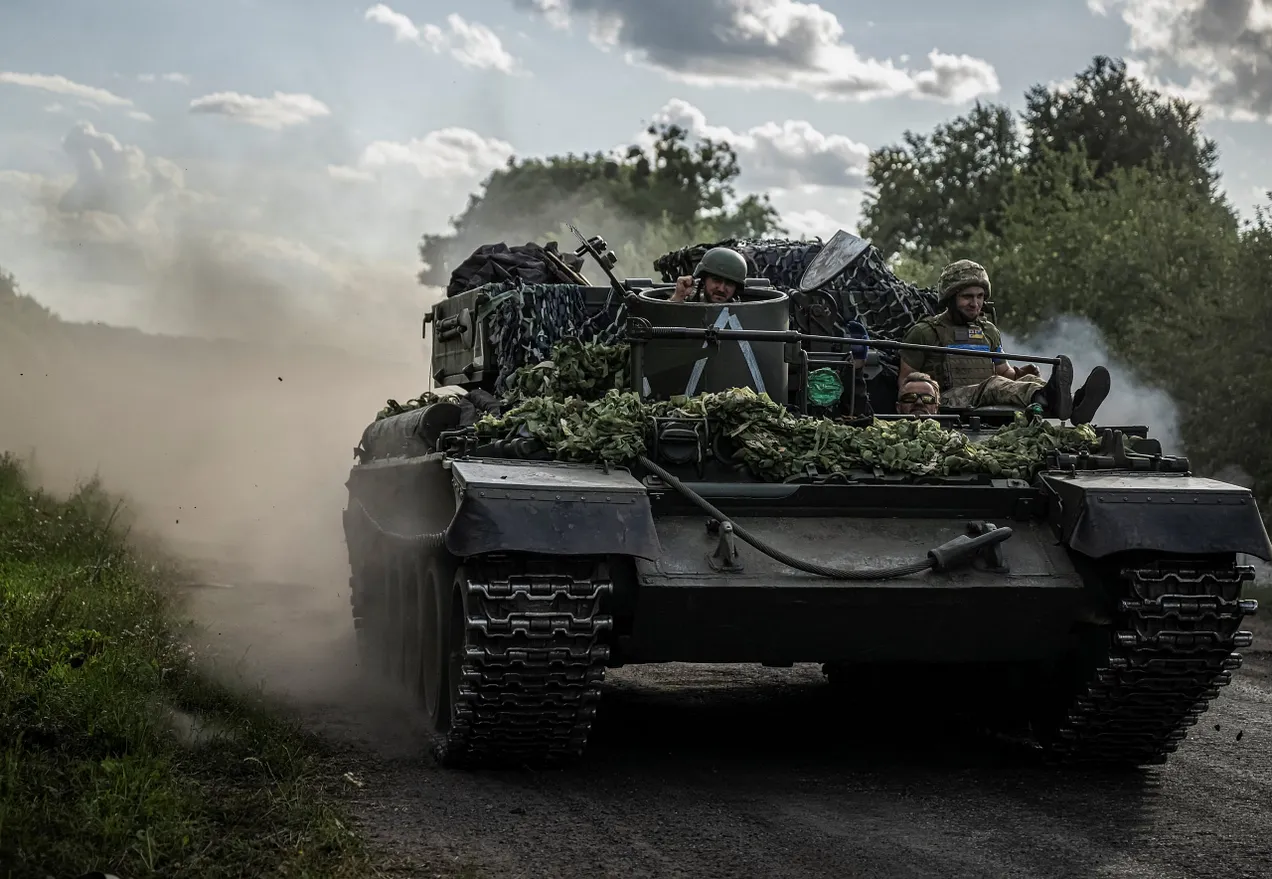
With the Russian defenses jamming up the Ukrainian columns at Korenevo, the Ukrainian position was already pregnant with a basic operational crisis: the penetration was narrow, and thus threatened to become a severe and untenable salient. At the risk of making a perilous historical analogy, the operational form was very similar to the famous 1944 Battle of the Bulge: taken by surprise by a German counteroffensive, Dwight Eisenhower prioritized limiting the width, rather than the depth of the German penetration, moving reinforcements to defend the “shoulders” of the salient.
Blocked at Korenevo, the Ukrainians shifted their approach and made a renewed effort to solidify the western shoulder of their position (their left flank). This attempt aimed to leverage the Seym River, which runs a winding course about twelve miles behind the state border. By striking bridges over the Seym and launching a ground attack towards the river, the Ukrainians hoped to isolate Russian forces on the south bank and either destroy them or force a withdrawal over the river. If they had succeeded, the Seym would have become an anchoring defensive feature protecting the western flank of the Ukrainian position.
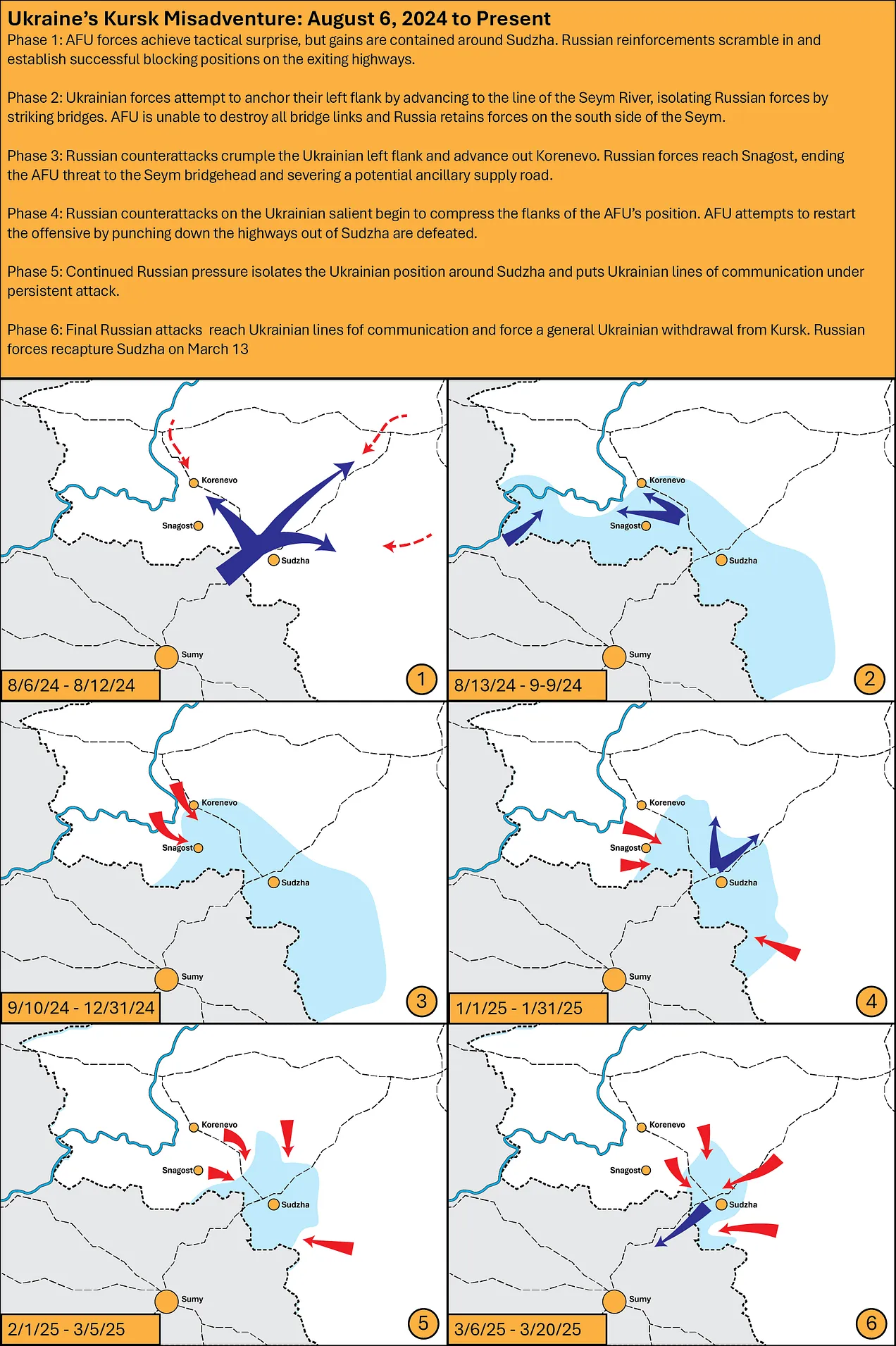
The Battle of Kursk
The Ukrainian attempt to leverage the Seym and create a defensive anchor on their flank was well conceived in the abstract, but ultimately it failed. By this time, the effects of Ukraine’s tactical surprise had dissipated and there were strong Russian units present in the field. In particular, the Russian 155th Naval Infantry Brigade held its position on the south bank of the Seym, maintained its links to neighboring units, and led a series of counterattacks: by September 13, Russian forces had recaptured the critical town of Snagost, which lies in the inner bend of the Seym.
The recapture of Snagost (and the linkup with Russian forces advancing out Korenevo) not only ended the threat to the Russian positions on the south bank of the Seym, but more or less sterilized the entire Ukrainian operation by confining them to a narrow salient around Sudzha and constricting their ability to supply the grouping at the front.
It’s rather natural that road connectivity is poorer across the state boundary than it is within Ukraine itself, and this is especially true for Sudzha. Once Snagost was recaptured by Russian forces, the Ukrainian grouping around Sudzha had just two roads connecting it to the base of support around Sumy: the main supply route (MSR in the technical parlance) ran along the R200 highway, and was supplemented by a single road some 3 miles to the southeast. The loss of Snagost condemned the AFU to resupply and reinforce a large multi-brigade grouping with just two roads, both of which were well within reach of Russian strike systems.
This poor road connectivity allowed the Russians to persistently surveil and strike Ukrainian supplies and reinforcements making the run into Sudzha, particularly after Russian forces began the widespread use of fiber optic FPV drones, which are immune to jamming. One other advantage of the fiber optic drones, which is not as widely discussed, is that they maintain their signal during final approach to the target (as opposed to wirelessly controlled models, which lose signal strength as they drop to low altitude on attack). The stable signal strength of fiber optic units is a great boon to accuracy, as it allows controllers to control the drone until impact. They also provide a higher resolution video feed which makes it easier to spot and target concealed enemy vehicles and positions. (Video at link.)
Operationally, the main distinctive of the fighting in Kursk is the orthogonal orientation of effort by the combatants. By this, we mean that Russian counteroffensives were directed at the flanks of the salient, steadily compressing the Ukrainians into a more narrow position (by the end of 2024, the Ukrainians had lost half of the territory they once held), while Ukrainian efforts to restart their progress were aimed at moving deeper into Russia.
In January, the Ukrainians launched a fresh attack out of Sudzha, but rather than attempting to widen and solidify their flanks, this attack once again aimed to punch down the highway towards Bolshoye Soldatskoye. The attack was repulsed on its own terms, with Ukrainian columns advancing a few miles down the road before collapsing with heavy losses, but even if it had succeeded it would not have fixed the fundamental problem, which was the narrowness of the salient and the limited road connectivity for supply and reinforcement.
By February, the Ukrainian grouping in Kursk was clearly exhausted and their supply linkages were under permanent surveillance and attack by Russian drones. It was perhaps predictable, then, that the Russians would close up the salient quickly once they made a determined push. The actual endgame took, at most, a week of good fighting. On March 6, Russian forces broke through Ukrainian defenses around Kurilovka, to the south of Sudzha, and threatened to overrun the secondary supply road. By the 10th, the Ukrainians were withdrawing from Sudzha proper, with the town falling back under full Russian control by the 13th.
It was during this brief period of climactic action that the sensational story of the Russian assault through the pipeline emerged. This become a totem anecdote, with Ukrainian sources claiming that the emerging Russian troops were ambushed and massacred, and Russian sources acclaiming it as a tremendous success. I think this rather misses the point. The pipeline assault was innovative and high risk, and it certainly involved tremendous grit on the part of the Russian troops who had to crawl through miles of cramped pipeline, but ultimately I do not think it mattered much in the operational sense.
On a schematic level, the Ukrainian position in Kursk was doomed by mid-September when Russian troops recaptured Snagost. If the Ukrainians had successfully isolated the south bank of the Seym, they would have had the river as a valuable defensive barrier protecting their left flank as well as access to valuable space and additional supply roads. As it happened, the Ukrainian flank was crumpled early in the operation by the Russian victories at Korenevo and Snagost, which left Ukraine trying to fight its way out of a very compressed and road-poor salient. The (correct) Russian decision to concentrate its counterattacks on the flanks further compressed the space and left the Ukrainians with inadequate supply linkages subject to persistent Russian drone strikes. One recent Ukrainian publication claims that by the end of the year, Ukrainian reinforcements had to move to the frontline on foot, carrying all their equipment and supplies, due to the persistent threat to vehicles.
Fighting in a severe salient is almost always a bad proposition, and is something of a geometrical motif of warfare going back millennia. In the current operating environment, however, it is particularly dangerous, given the potential of FPV drones to saturate supply lines with high explosive. In this case, the effect was particularly synergistic: the cramped salient amplified the effect of Russian strike systems, and this in turn prevented the Ukrainians from assembling and sustaining the force needed to expand the salient and create more space. Confinement bred strangulation, and strangulation bred confinement. Fighting with a caved in flank for months, the Ukrainian grouping was doomed to operational sterility and eventual defeat almost at the outset.
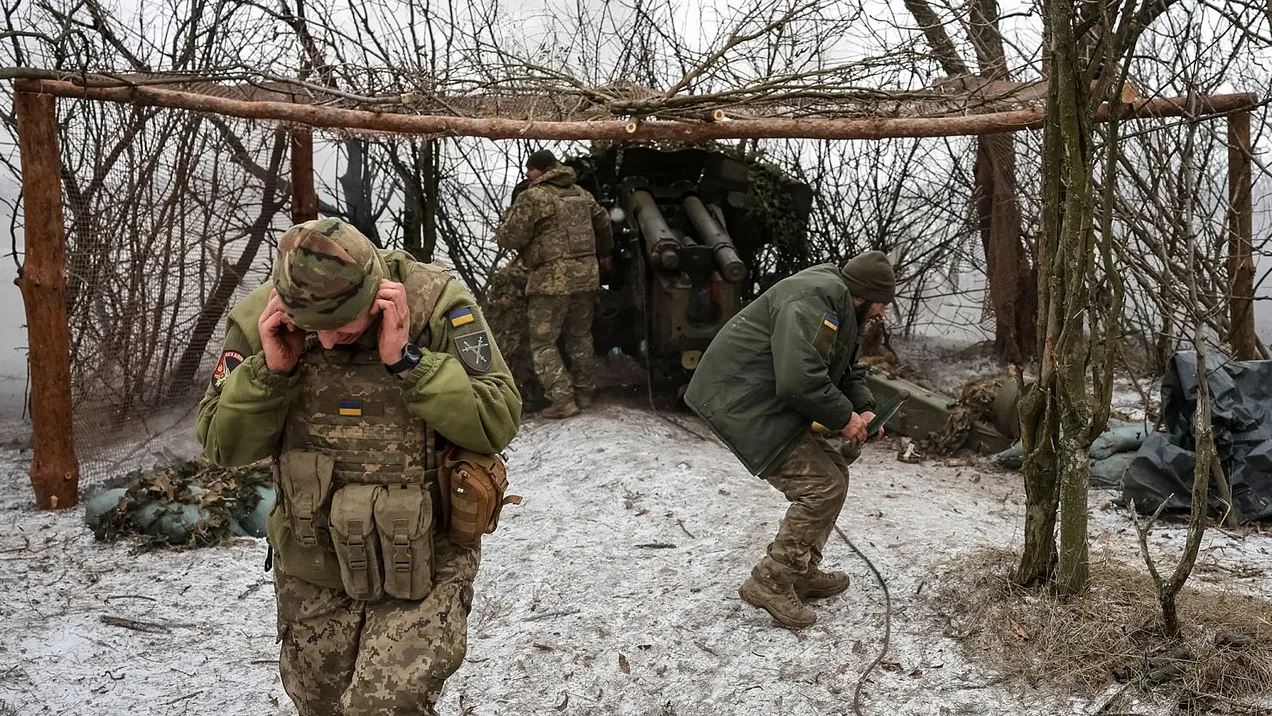
The world is still adjusting to the new kinetic logic of the powerful ISR-Strike nexus which now rules the battlefield. What Kursk demonstrates, however, is that conventional sensibilities about operations are hardly obsolete: if anything, they have become even more important in the age of the FPV drone. Ukraine’s defeat in Kursk ultimately reduces to well-established rules about lines of communication and flank security. Their early defeats in Korenevo and Snagost left their western flank permanently crumpled and thrust them back on a thin logistical chain which was easy for Russian forces to surveil and strike. In a sense, drones have made it possible to vertically envelop enemy forces, isolating frontline groupings with persistent overwatch on supply roads. This was a feature that was largely missing in Bakhmut, where Russian forces were still preferentially using tube artillery rather, but it seems to be a permanent feature of the battlefield going forward, making seemingly antiquated concerns like “lines of communication” more important than ever. Drones matter, but the spatial position of forces matter too.
So where does this leave Ukraine? They’ve now blown a pair of carefully husbanded mechanized packages: one in Zaporizhia in 2023, and now a second in Kursk. In both cases, they were unable to cope with the capability of Russian strike systems to isolate their groupings on the frontline, and with Russian surveillance and strikes on rear assembly areas and bases of support. Their position in Kursk is gone, and they have nothing to show for their efforts.
All theories as to why Ukraine went into Kursk are now a quaint point of speculation. Whether or not they intended to hold some token slice of Russian territory as a bargaining chip is irrelevant, as the slice is gone. More importantly, the theory that Kursk could force a major redeployment of Russian forces has gone awry and now threatens to boomerang on the Ukrainians. Most of the Russian forces in Kursk were redeployed from their grouping in Belgorod, rather than the critical theater in the Donbas (as we noted earlier, while the AFU was running its “diversion” in Kursk, the Russians completely collapsed the southern Donetsk front and pushed up the Dnipro Oblast border).
What’s important to note, however, is that the Kursk front is not going to be scratched off simply because the Russians have ejected Ukraine across the border. In his surprise appearance at the Kursk theater headquarters, Putin noted to need to create a “security zone” around Kursk. This is the Russian parlance for continuing the offensive across the Ukrainian border (and in fact, Russian forces have crossed into Sumy Oblast in several places) to create a buffer zone. This will have the dual purpose of both keeping the front active, preventing Ukraine from redeploying forces back to the Donbas, and preempting any attempt by the AFU to stage forces for a second crack at Kursk. Most likely the Russians will attempt to capture the heights along the border line and position themselves uphill from the Ukrainians, replicating the situation around Kharkov.
In short, having opened a new front in Kursk, the Ukrainians cannot now easily close it. For a force facing severe personnel shortages (read my previous analysis on the parlous state of Ukrainian mobilization if you’d like a refresher), Ukraine’s inability to shorten their frontline creates unwelcome additional stresses. With Russian pressure continuing unabated in the Donbas, we are left wondering whether a doomed 9 month battle for Sudzha was really the best use of Ukraine’s dwindling resources.
A Brief Tour of the Front
The Kursk salient is the second front to be fully collapsed by the Russian Army in the past three months. The first was the southern Donetsk front, which was completely caved in over the course of December and then rolled up in the opening weeks of the year, which had the effect of not only knocking the AFU out of longstanding strongholds like Ugledar and Kurakhove, but also safeguarding the flank of the Russian advance towards Pokrovsk.
At the moment, there are several axes of Russian progress which we’ll examine in more detail momentarily. More broadly, as Russia scratches off secondary axes like South Donetsk and Kursk, the general trajectory of the front is becoming more focused, as the arrows converge on the Slovyansk-Kramatorsk agglomeration. Eyes on the prize. Russia currently controls roughly 99% of Lugansk Oblast and 70% of Donetsk.
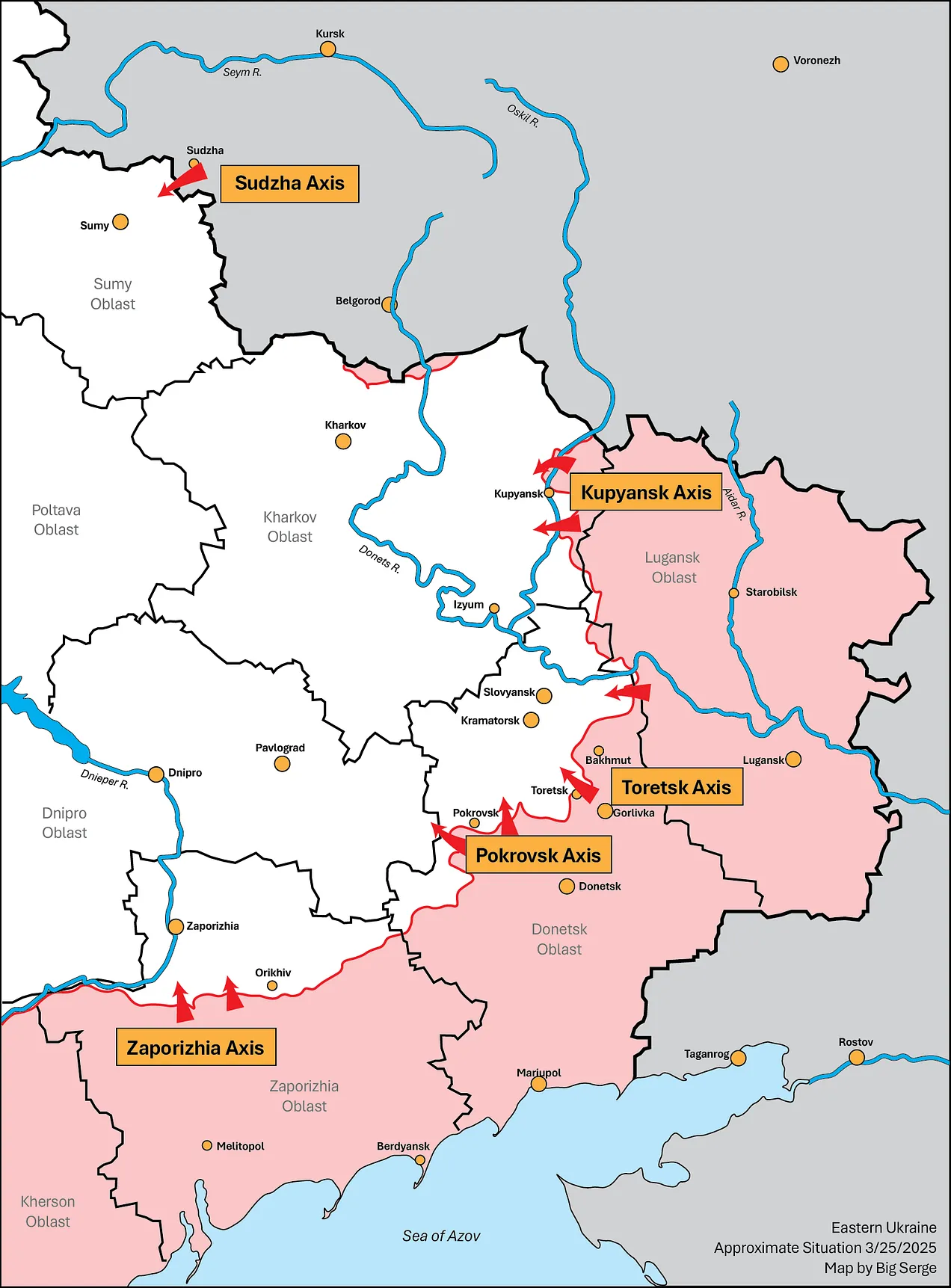
The Donbas: March Situation
We’ll take a brief tour of these axes of combat. One of the motifs which will immediately stand out is that in multiple critical sectors, Russian forces currently occupy operationally potent positions that give them powerful launchpads for further advances in 2025. In particular, the Russians currently hold multiple bridgeheads across river lines, putting them in position to outflank Ukrainian defensive lines, and they have consolidated control of dominating heights in places like Chasiv Yar.
We can begin at the northernmost end of the line, at Kupyansk. Kupyansk is a modestly sized town (prewar population of perhaps 26,000 people) located at a strategic crossroads on the Oskil River, which is the largest tributary of the Donets. More specifically, Kupyansk is at the intersection of the main east-west highway out of Kharkov and the Oskil highway corridor which runs south to Izym, and it is also the most important transit hub for crossing the Oskil in its northern course. The city was captured early in the war by Russian forces and served as an important plug to prevent the movement of Ukrainian reserves into northern Lugansk Oblast, and was later recaptured during Ukraine’s late-2022 counteroffensive, which saw them push the front away from Kharkov and across the Oskil.
Today, Kupyansk serves as the vital transit hub, base of support, and crossing point that supports a Ukrainian grouping fighting on the east bank of the Oskil. As the battlefield is currently shaped here, however, Russian forces have a tantalizing opportunity to collapse the Ukrainian position altogether. The critical feature here is the consolidation of a sizeable Russian bridgehead north of Kupyansk on the west bank of the Oskil (that is, the Ukrainian side), with Russian forces already positioned on the north-south highway. Although this northern front has been a decidedly de-prioritized theater in recent months, as the Russians scratched off the Kursk and South Donetsk fronts, the placement of Russian forces west of the Oskil creates serious problems for the AFU in Kupyansk.
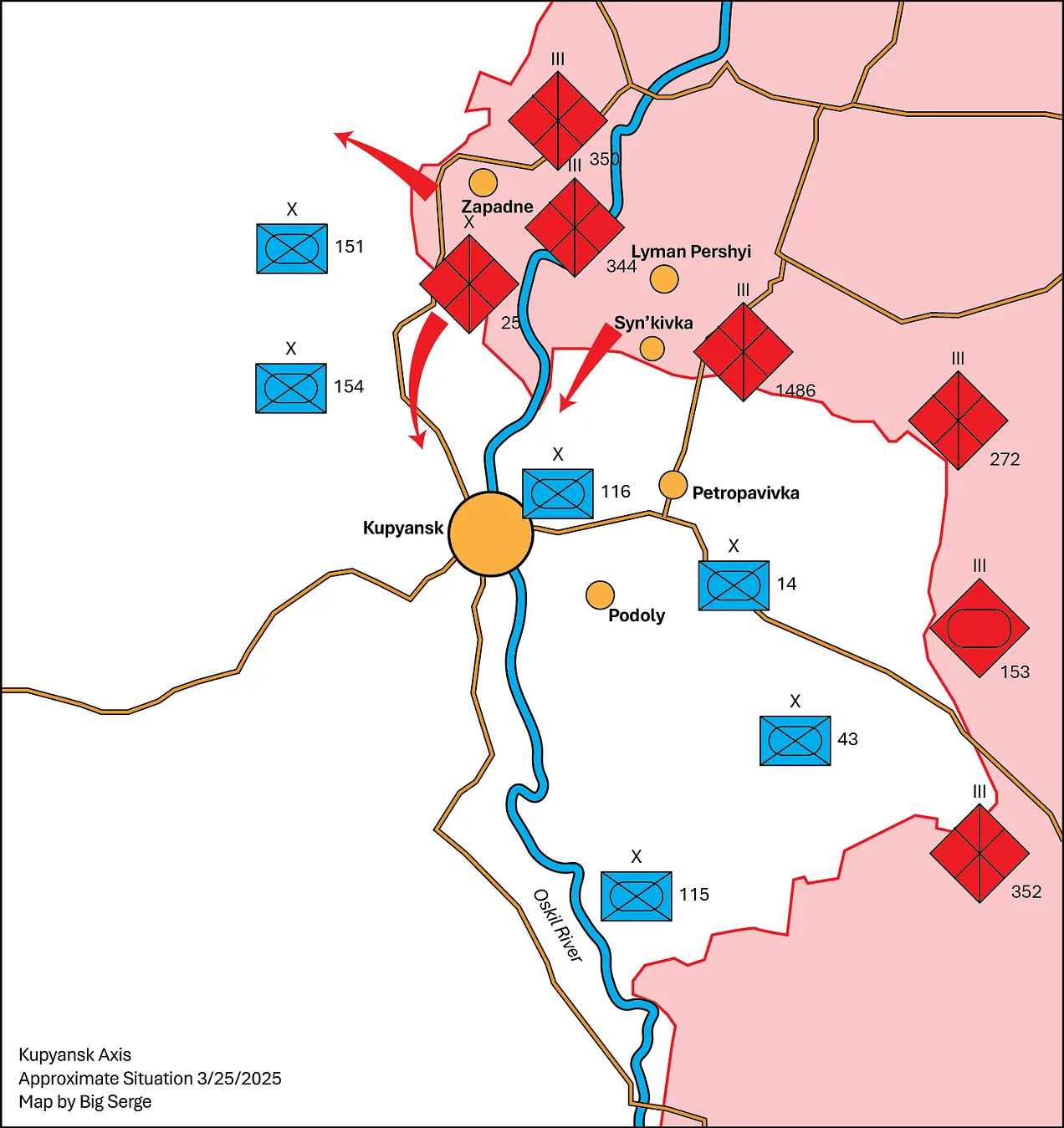
An advance to the south and west out of the Oskil bridgehead would flank Kupyansk and, in combination with advances from the southeast, threaten to collapse Ukraine’s salient across the Oskil altogether. Depending on how much combat power Russia commits to this axis, we could see a similar situation to the one we saw in Kursk, with multiple brigades (currently fighting east of the Oskil) forced to attempt an ad-hoc evacuation across the river as the salient collapses, with their ability to extract heavy equipment potentially compromised by the complication of the river crossing.
Further south on this front, we see a similar situation on the Donets axis. The operational geography here is a bit complicated, so we will indulge in a bit of an elaboration.
The northern Donetsk theater (with its ultimate prize in the Kramatorsk-Slovyansk agglomeration) is dominated by two important terrain features. The first is the fact that the urban corridor (which runs from Kostyantynivka northward to Slovyansk) lies at low elevation along the course of the Kryvyi Torets River - while the river itself is not an important feature, the low elevation of its basin is. This means that the cities themselves are dominated by heights to the east, with Chasiv Yar forming an important hub and stronghold at a commanding elevation.
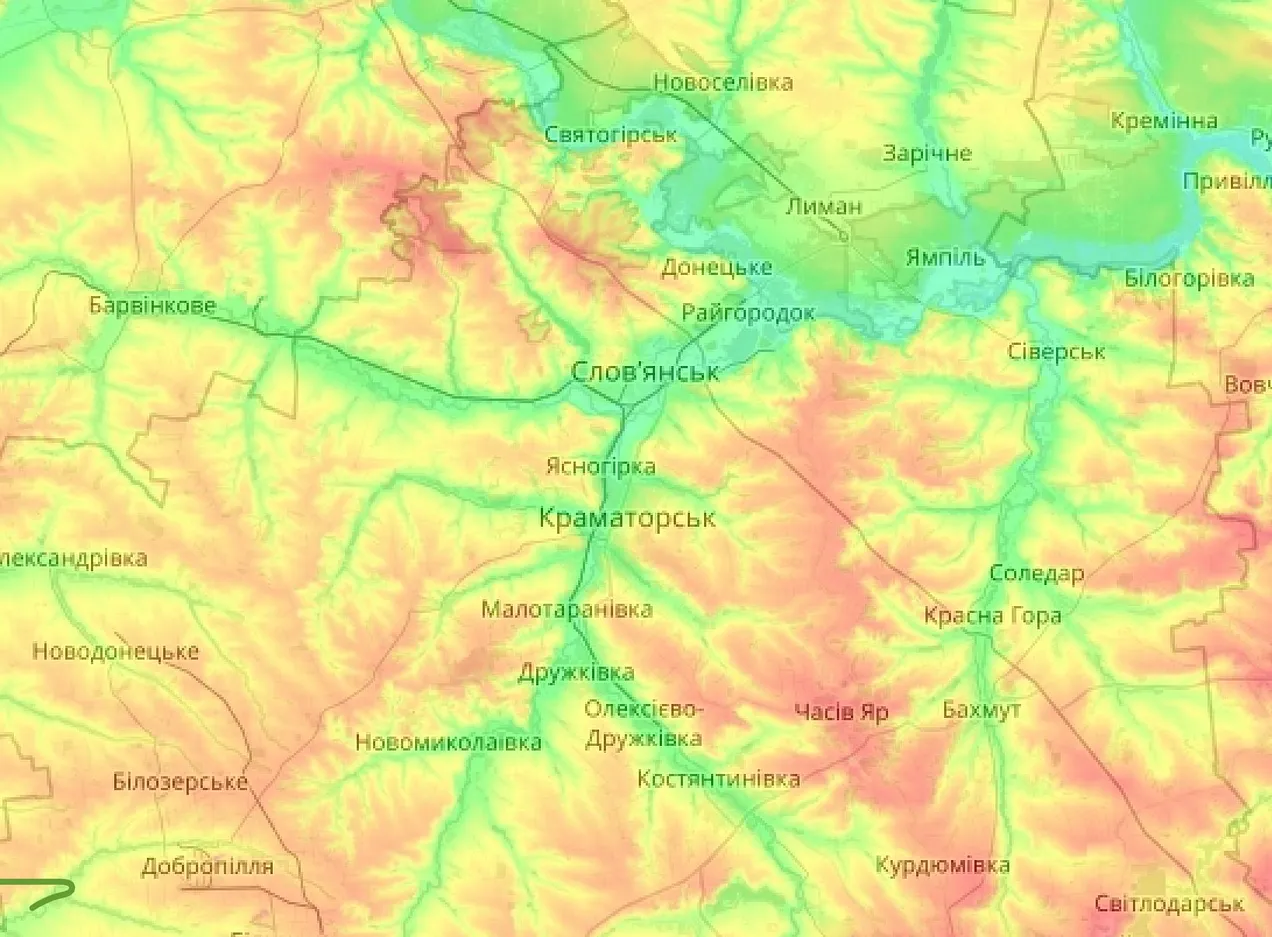
Northern Donetsk Elevation Map
The second important terrain feature is the Donets River - unlike the diminutive Kryvyi Torets, this is an imposing barrier which bisects the Donbas and forms the northern shield for Slovyansk and Kramatorsk. Russian control of the Donets from the north bank (either at Lyman or, ideally, Izyum further to the west) unlocks the potential to outflank Slovyansk and Kramatorsk from the west and interdict road traffic.
In short, although Kramatorsk and Slovyansk together form an imposing urban agglomeration, their defense is intimately connected with the battle for both the heights to the east and the struggle for control of the Donets. At the current moment, however, Russian forces hold valuable positions which provide a launching pad to unlock this front.
When we zoom in more closely, we see that the Ukrainian defenses around the Donets have benefited from the terrain. On the north bank of the Donets, Russian forces must also contend with an ancillary waterway in the Zherebets River, which flows south towards the Donets and feeds several reservoirs which form formidable defense barriers. The gap between the Zherebets and the Donets is roughly five miles, forming a natural defensive bottleneck, and most of that gap is covered by the town of Tors’ke (now heavily fortified) and a dense plantation forest. For most of the past eighteen months, this section of front has been largely static, with Russian forces failing to make significant headway fighting into this bottleneck.
One way for Russia to undermine this strong defensive position might have been to advance along the south bank of the Donets, reaching the crossing near Yampil and outflanking the Tors’ke line from the southeast. This would have isolated the Ukrainian forces fighting in the forestry plantation and allowed the Russians to advance through the bottleneck. Ultimately, this did not materialize due to the low material priority placed on this front in addition to a very well-managed defense of the Siversk salient by Ukrainian forces. Siversk has been strongly held, and serves as the shield for the Ukrainian right flank.
What is different now, however, is that Russian forces have consolidated a bridgehead over the Zherebets River, which will allow them to outflank Tors’ke and reach Lyman - not from the south, but from the north. Recent weeks have seen the Russians moving into the small villages around the periphery of their bridgehead (names like Kolodyazi and Myrne), creating the space to move additional units over the Zherebets. Much like at Kupyansk, the bridgehead offers the launching point for a sweeping hook into the rear of the Ukrainian defenses.
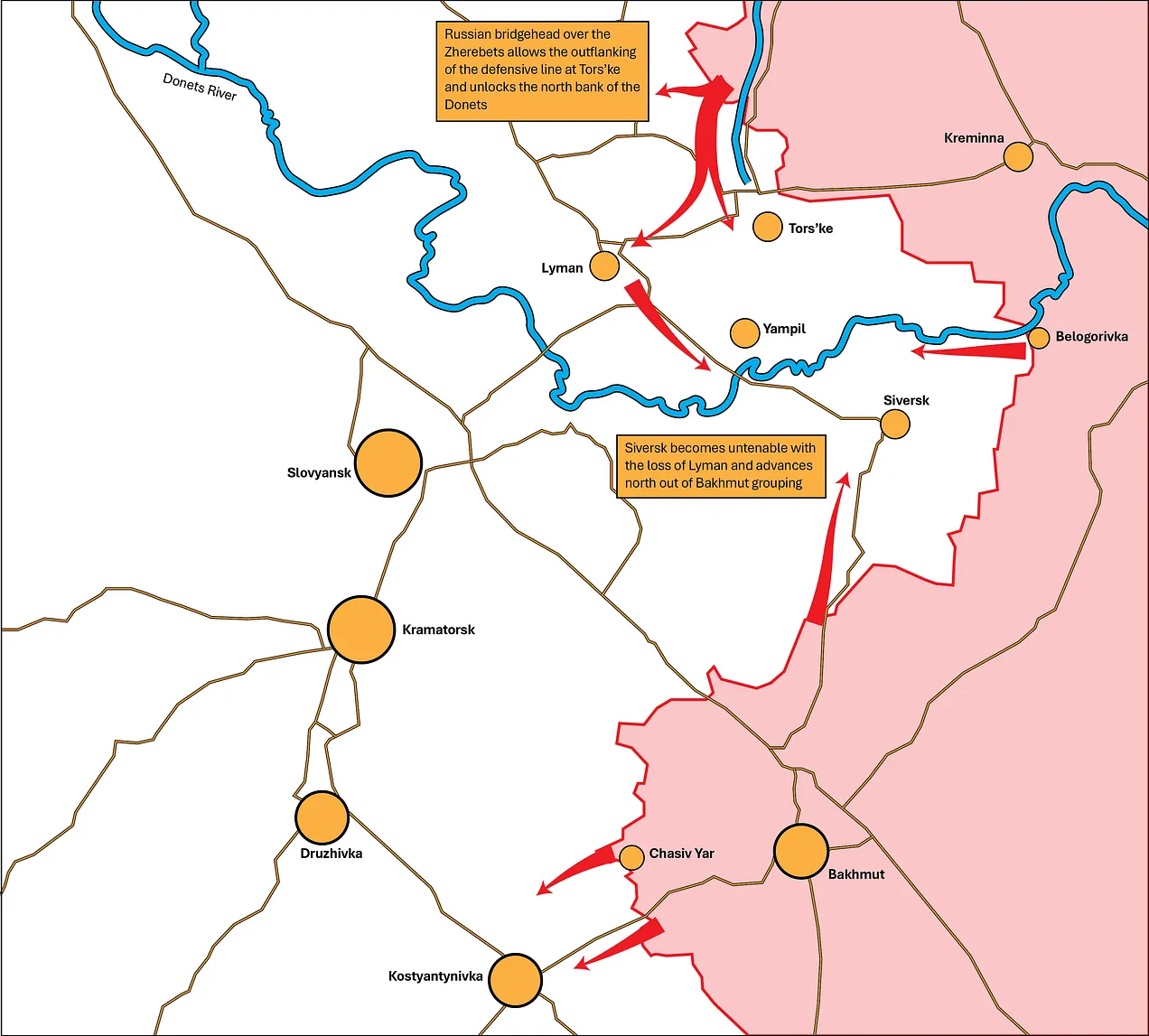
Northern Donbas: General Situation
What stands out about the Russian bridgehead here is that it is not only over the Zherebets (that is, Russian forces are firmly on the western bank of the river while the Ukrainians further south are still defending far to the east of it), but that it is also past most of the Ukrainian field fortifications in the area. Borrowing from the Military Summary Map, which conveniently includes fortifications and earthworks, we can see that there is very little built up in the space between the Zherebets and Lyman. Russian forces breaking out of this bridgehead are entering mostly open space, with only a few roadblocks in place.
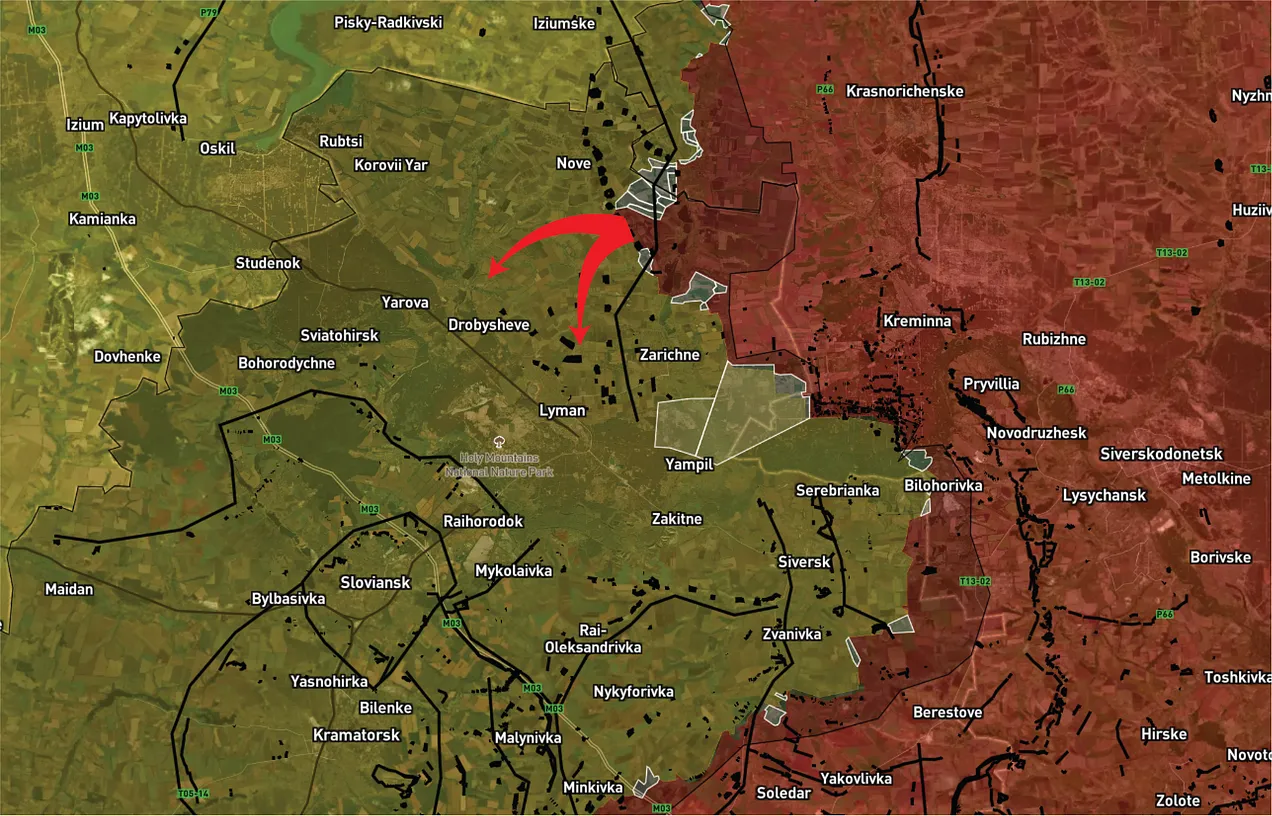
If Russia can parlay the Zherebets bridgehead into an advance to Lyman, they can collapse much of the Ukrainian defense on both sides of the river. Not only would they outflank the defensive line at Tors’ke and roll up the northern bank of the Donets, but doing so would also precipitate the fall of the Siversk salient. Siversk has been well defended by the AFU to this point, but it is already firmly in a salient, and the capture of Yampil would put Russian forces firmly in Siversk’s rear and physically sever the main line of communication.
Further south still, the front is similarly well shaped for Russian advances in the coming months. The signature developments here have been the capture of Chasiv Yar and Toretsk, and Russia’s victory on the South Donetsk front. The latter is particularly important as it safeguards Russia’s flank to the south of Pokrovsk - rather than a Russian pincer flaring out into space to encircle Pokrovsk to the west, the entire frontline is now to the west of Pokrovsk.
Toretsk has been something of a sticky wicket. Russia made great progress throughout the winter advancing through this heavily fortified urban buildup, and in early February the Russian MoD announced the capture of the city. In the weeks since then, however, fighting has continued in the outer limits - at first, this was styled as Ukrainian infiltration back into the city, but it spiraled into rumors of a full fledged Ukrainian counteroffensive, with sensational claims that Russian forces were encircled or destroyed in Toretsk. The situation was strongly reminiscent of the late stages of Bakhmut, when Ukrainian phantom counterattacks were reported frequently.
It appears that what actually happened was rather that the Russian MoD announced the capture of the city while its extremities were still contested. Russian forces remain in control of the bulk of the city, but Ukrainian units remain dug at the periphery and fighting has continued in the “grey zone.” DeepState (a Ukrainian mapping project) confirmed that there was no general Ukrainian counterattack - rather, the fighting was simply part of a continuous struggle for the western periphery of the city.
Fighting a delaying action in Toretsk is inarguably the correct choice of action for the AFU. The reason that Toretsk and Chasiv Yar were so hotly contested is fairly simple: both occupy the high ground and will allow Russian forces to attack downhill, wrapping up large salients sitting on the floor of the battlespace. Pincers from Chasiv Yar and Toretsk will work concentrically towards Kostyantynivka, collapsing the strongly held Ukrainian line along the canal west of Bakhmut. Similarly, forces blooming west out of Toretsk and Niu York will link up with the Pokrovsk front and push the frontline well to the north of the city.
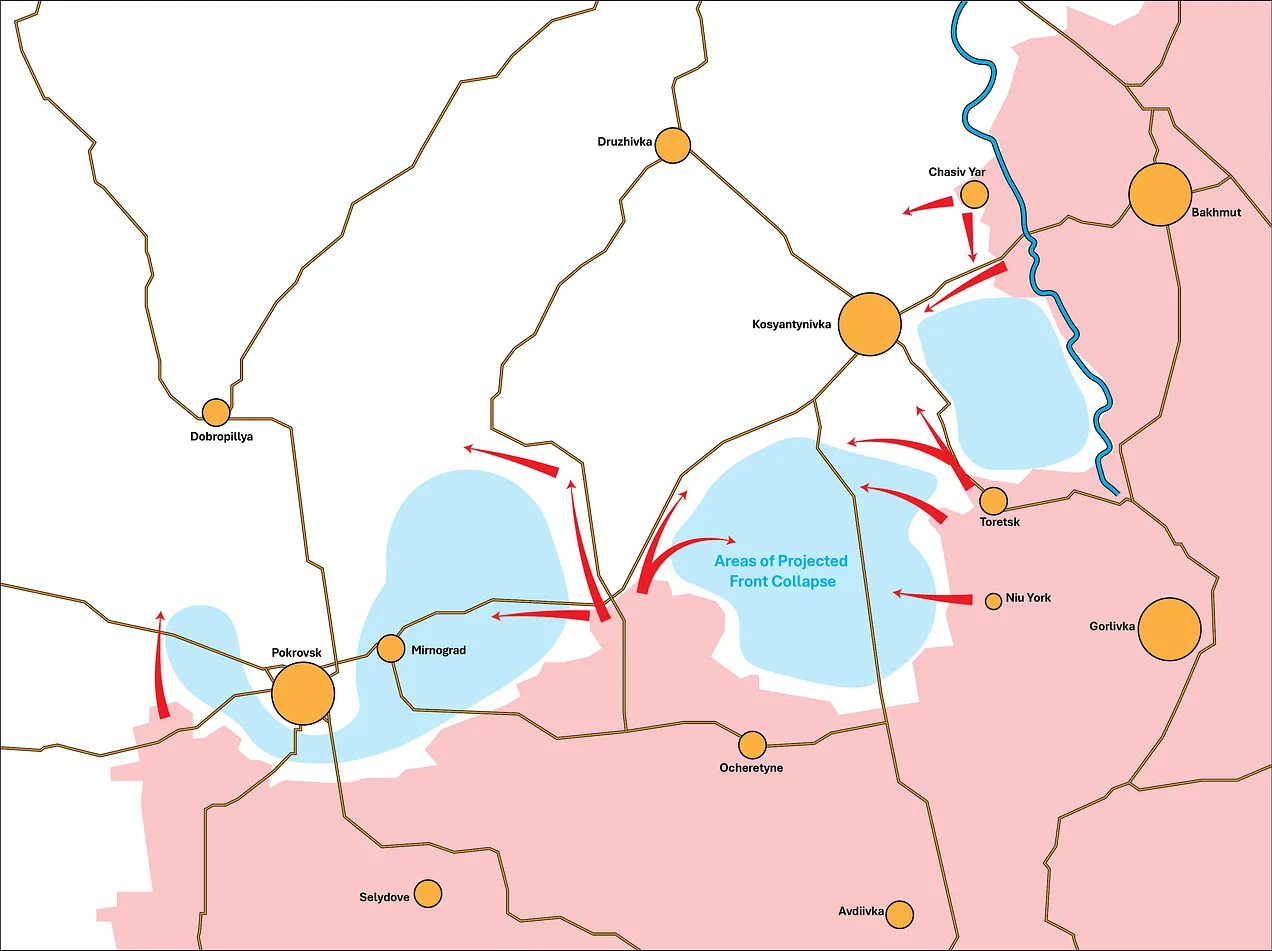
Central Donetsk Front: Pokrovsk and Toretsk
That is quite a bit to chew on, and I sometimes question the value of such analysis. For those who have been dutifully following this war from the beginning, this is all fairly elementary. For others with less investment in the front, it’s possible that the status of these settlements is not very interesting and devolves into esoteric minutia.
Broadly, however, the arrows are pointing up for Russia in the Donbas for the following reasons:
The collapse of the Southern Donetsk front for Ukraine secures the flank of Russia’s advances towards Pokrovsk and allows the front to be pushed far to the west of the city.
Russian bridgeheads over the Zherebets and Oskil rivers create opportunities to outflank and collapse Ukrainian positions around Kupyansk, Lyman, and Siversk.
The capture of Chasiv Yar and Toretsk, both of which lie on elevated ridges, provides the launching point for strong thrusts towards Kostyantynivka, collapsing multiple Ukrainian salients in the process.
All in all, this portends continued Russian advances in the next stage of the offensive. Pokrovsk is already a frontline city, and Kostyantynivka will become one very soon. The Russians have scratched off two important fronts in the last three months - collapsing first the South Donetsk axis, and then eradicating the Ukrainian position in Kursk. The next phase will see breakthroughs in the Central Donbas, as the Russians move through the next belt of cities and approach the final objectives in Kramatorsk and Slovyansk.
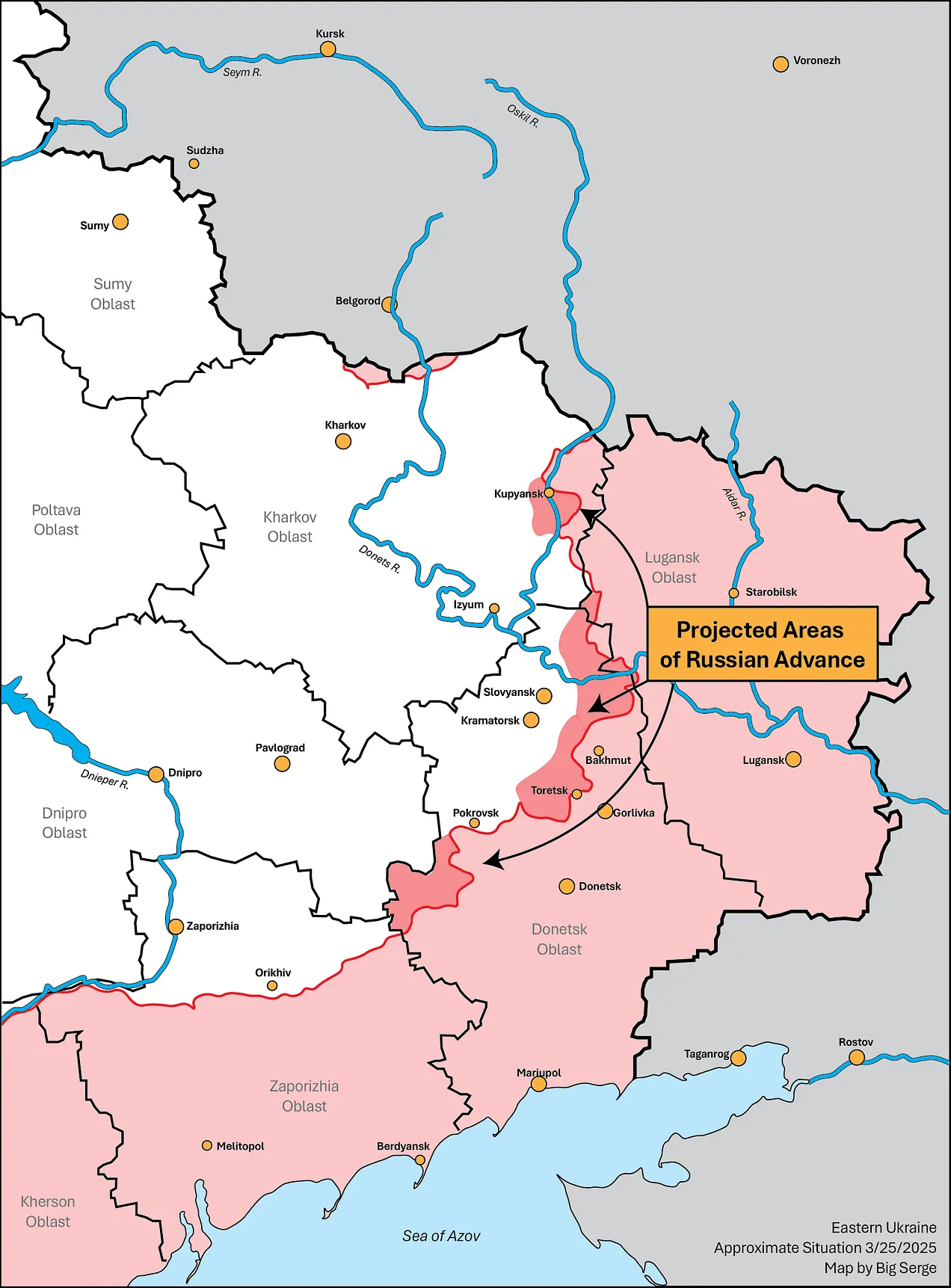
None of this is predetermined, of course. Both armies face continual force allocation problems, and at the moment large groupings are fighting around both Pokrovsk and Toretsk. But the simple fact is that the Russians have claimed victory on two strategic axes and have defeated a large and determined AFU grouping in Kursk. The captures of Toresk and Chasiv Yar are of great strategic importance, and the front is well shaped for further Russian gains. Russian forces are significantly closer to victory in the Donbas than they were a year ago, when the front was still mired in places like Ugledar and Avdiivka. The Ukrainian forces are still upright, fighting bravely, but the front is bleeding from an ever increasing number of wounds.
The Art of the Deal
Any discussion of the diplomatic sphere and the prospects for a negotiation peace must begin by noting the guiding animus of the American stance: namely, that President Trump is a practitioner of personal politics, with a fundamentally transactional view of the world. By “personal politics”, we mean that he places great emphasis on his own interpersonal dynamics and his self-conception as a dealmaker who can maneuver people into agreement, provided he can just get them to the table.
Trump is hardly alone in this; to take one example, we could look at his long-dead predecessor, Franklin Roosevelt. FDR, much like Trump, took great pride in the idea that he was exceptionally skilled at managing, soothing, and charming people. A guiding principle of American policy during the Second World War was FDR’s sense that he could “manage” Stalin in face to face interactions. In one infamous letter to Churchill, FDR told the British Prime Minister:
I know you will not mind my being brutally frank when I tell you that I think I can personally handle Stalin better than either your Foreign Office or my State Department. Stalin hates the guts of all your top people. He thinks he likes me better, and I hope he will continue to do so.
Trump shares a similar sensibility, which postulates personality and transactional acumen as a driving force of world affairs. To be perfectly fair to President Trump, this has largely worked for him both in business and domestic politics, but it may not port over so well to foreign affairs. Nevertheless, this is how he thinks. He expressed it succinctly in his explosive February 28th meeting with Zelensky:
Biden, they didn’t respect him. They didn’t respect Obama. They respect me… He might have broken deals with Obama and Bush, and he might have broken them with Biden. He did, maybe. Maybe he did. I don’t know what happened, but he didn’t break them with me. He wants to make a deal.
Whether or not this is true, it is an important bedrock in the framing of the situation to remember that this is how Trump sees himself and the world: politics is a transactional domain mediated by personalities. With that in mind, there are two different issues to consider, namely the mineral deal between Ukraine and the United States, and the prospects for a negotiated ceasefire between Ukraine and Russia.
The mineral deal is somewhat easier to parse, and the central motif that emerges is just how badly Zelensky bungled his meetings with Trump. It’s helpful first to examine the actual contents of the mineral deal - notwithstanding the enormous $500 billion price tag, it is actually a very scant agreement. The agreement, as it currently stands, seems to essentially give American companies the right of first refusal on the exploitation of Ukrainian mineral resources, with 50% of the proceeds from state owned resources going to an “investment fund” for the reconstruction of Ukraine under joint US-Ukrainian management.
The mineral deal ought to be understood as a manifestation of Trump’s immense aversion to acting at economic disadvantage. He is a fundamentally transactional man who complained at great length about the costs of American support for Kiev, and mineral rights are the easiest way for him to extract promises of “repayment” from a Ukrainian government that cannot actually afford to repay anything in the near term.
For Ukraine, entangling America in Ukrainian mineral wealth might seem like an opportunity to ensure ongoing American support, as it would potentially create direct stakes for American companies. It’s important to note, however, that the mineral deal does not contain any security guarantees for Ukraine, and is in fact explicitly tied to *past* support, rather than future aid. In other words, Trump wants to present the mineral deal as a way for Ukraine to repay the last three years of American assistance, and not as a deal guaranteeing American support in the future.
[img]
Given this, it ought to be obvious that Zelensky badly fumbled his encounter with Trump. The optimal strategy for Ukraine was to draw as close to the Trump administration as possible - sign the mineral deal, say thank you, wear a suit, and commend Trump’s efforts to negotiate an end to the war. Trump’s negotiations were guaranteed to run into a wall once the Russians themselves were brought into the discussion, but in this scenario (one where Zelensky came across as supportive and compliant towards Trump), Trump’s personal ire would be directed at Moscow, rather than Kiev. This might have enabled Zelensky to play Trump and Putin off of each other, parlaying the situation into more American support once Trump became frustrated at Russia’s unwillingness to quickly negotiate a ceasefire.
The operating principle is that Trump is a mercurial, personal politician who places primacy on the deal. Inability to solidify the deal breeds irritation, and Zelensky’s best play was to do everything possible to ensure that it was Russia that became the irritant in Trump’s attempted deal making. Unfortunately for Ukraine, a valuable opportunity was wasted by Zelensky’s inability to read the room. Instead, Ukraine was put in an ISR timeout and Zelensky had to come crawling back with an apology to sign the mineral deal.
This parlayed directly into tenuous diplomatic feelers, including a long phone conversation between Trump and Putin and a diplomatic roundtable in Riyadh attended by American, Russian, and Ukrainian delegations.
Thus far, the only outcome from these discussions has been the sketch for a climbdown in the Black Sea, which in its essence would end attacks on commercial shipping (presumably including Russian attacks on Ukrainian port infrastructure in Odessa) in exchange for American moves to rehabilitate Russian agricultural exports by reconnecting Russia to shipping insurance, foreign ports, and payment systems.
For those that have been following along, this is more or less a revival of the defunct Turkish-negotiated grain deal, which collapsed in 2023. There are still sticking points here: Ukraine is bristling at the promise to loosen sanctions on Russian agricultural exports, and Russia will want a robust inspection regime to ensure that the Black Sea ceasefire does not provide cover for weapons to be shipped into Odessa, but things appear on the whole to be returning roughly to the lines of the 2022 grain deal. Whether the rerun will last remains to be seen.
All of this is preliminary and perhaps even irrelevant to the main question, which is whether it is possible to negotiate a meaningful peace in Ukraine at this time, or even a temporary ceasefire. This, however, is a much larger hurdle to climb. As I see it, there are four structural obstacles to a negotiated peace which Trump has little or leverage to overcome:
Russian disillusionment with negotiation and the credibility of western promises
Climbing Russian confidence that they are on track to win a decisive victory on the battlefield
Mutual unwillingness between Moscow and the extant Kiev regime to engage in direct negotiations with each other
The status of Russian-claimed territories in the Donbas which are still under Ukrainian control
Many of these issues dovetail, and are ultimately linked to the trajectory of the battlefield where the Russian Army continues to advance. So long as Russian leadership believes they are on pace to capture the entirety of the Donbas (and beyond), Putin’s team is highly unlikely to accept a truncated victory at the negotiating table - the only way out would be for Kiev to cede objectives like Kramatorsk and Slovyansk. In many ways, Ukraine’s current possession of these cities are its best cards in any negotiation, but for cards to be useful they must be played, and it’s difficult to imagine Zelensky’s regime simply giving up cities that it has fought for years to defend.
Furthermore, Putin has made it extremely clear that he does not consider Zelensky to be either a legitimate or credible figure at all, arguing that because Zelensky has suspended elections under the pretext of martial law, there is in fact no legitimate government in Kiev. This is obfuscation by the Kremlin, of course: Zelensky is the President of Ukraine, and within the parameters of Ukraine’s laws, conditions of martial law do allow him to stay in office. But this is rather beside the point: what matters is that the Kremlin has more or less categorically ruled out negotiating with the current government in Kiev, and has even suggested an internationally supervised provisional government as a replacement.
A generous assessment is that, for there to be reasonable prospects for a negotiated settlement from the Russian perspective, at least four conditions have to be satisfied:
Regime change in Kiev to bring in a government more acquiescent to Russian interests.
Russian control of all annexed territories (either through the actions of the Russian Army on the ground or by Kiev withdrawing from them)
Broad sanctions relief for Russia
Credible pledges that western troops will not be stationed in Ukraine as “peacekeepers” - since, after all, one critical strategic objective for Russia was to prevent the consolidation of NATO on its flank, they will hardly accept a peace that features the deployment of NATO troops into Ukraine.
So long as Russia continues to advance on the battlefield, they have no incentive to (as they would see it) rob themselves of a full victory by accepting a truncated and premature settlement. Putin expressed this view very cogently and explicitly on March 27:
We are gradually, not as quickly as some would like, but nevertheless persistently and confidently moving towards achieving all the goals declared at the beginning of this operation. Along the entire line of combat contact, our troops have the strategic initiative. I said just recently: We will finish them off. There is reason to believe that we will finish them off.
Fair enough. Ultimately, Trumps’ transactional view of politics runs into the more grounded reality of what negotiations actually mean, in wartime. The battlefield has a reality of its own that is existentially prior to negotiations. Diplomacy in this context does not serve to transact a “fair” or “balanced” peace, but rather to codify the reality of the military calculus. If Russia believes it is on a trajectory to achieve the total defeat of Ukraine, than the only acceptable sort of peace would be one that expresses such a defeat through the fall of the Ukrainian government and a Ukrainian withdrawal from the east. Russia’s blood is up, and Putin seems to be in no mood to accept a partial victory when the full measure is within reach.
The problem for Ukraine, if history is any guide, is that it is not actually very easy to surrender. In the First World War, Germany surrendered while its army was still in the field, fighting in good order far from the German heartland. This was an anticipatory surrender, born of a realistic assessment of the battlefield which indicated that German defeat was an inevitability. Berlin therefore opted to bow out prematurely, saving the lives of its young men once the struggle had become hopeless. This decision, of course, was poorly received, and was widely denounced as betrayal and cowardice. It became a politically scarring watershed moment that shaped German sensibilities and revanchist drives for decades to come.
So long as Zelensky’s government continues to receive western support and the AFU remains in the field - even if it is being steadily rolled back and chewed up all along the front - it is difficult to imagine Kiev acceding to an anticipatory surrender. Ukraine must choose between doing this the easy way and the hard way, as the parlance goes, but this is not really a choice at all, particularly given the Kremlin’s insistence that a change of government in Kiev is a prerequisite to peace as such. Any successful path to a negotiated piece runs through the ruins of Zelensky’s government, and is therefore largely precluded at the moment.
Russian forces today stand significantly closer to victory in the Donbas than they did one year ago, and the AFU has been decisively defeated in Kursk. They are poised to make further progress towards the limits of the Donbas in 2025, with an increasingly threadbare AFU straining to stay in the field. This is what Ukraine asked for, when they willingly eschewed the opportunity to negotiate in 2022. So for all the diplomatic cinema, the brute reality of the battlefield remains the same. The battlefield is the first principle, and the ultimate repository of political power. The diplomat is a servant of the warrior, and Russia takes recourse to the fist and the boot and the bullet.
https://bigserge.substack.com/p/ukraine ... conclusion

